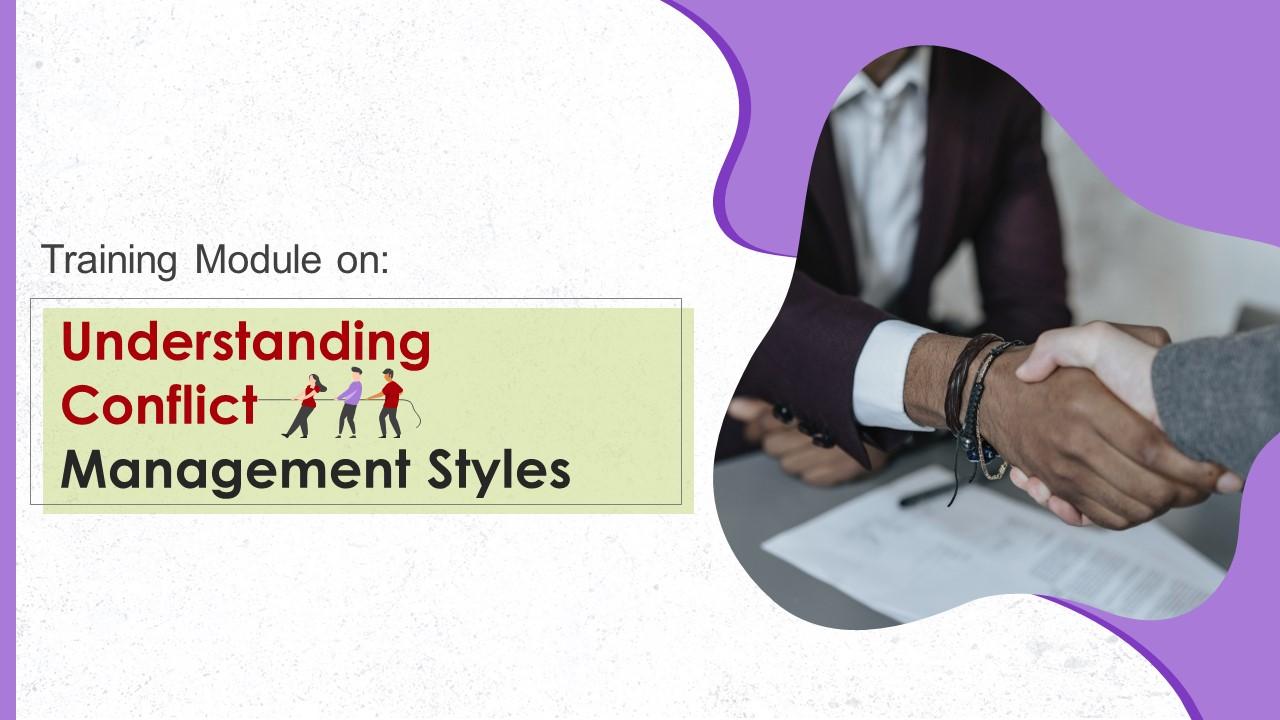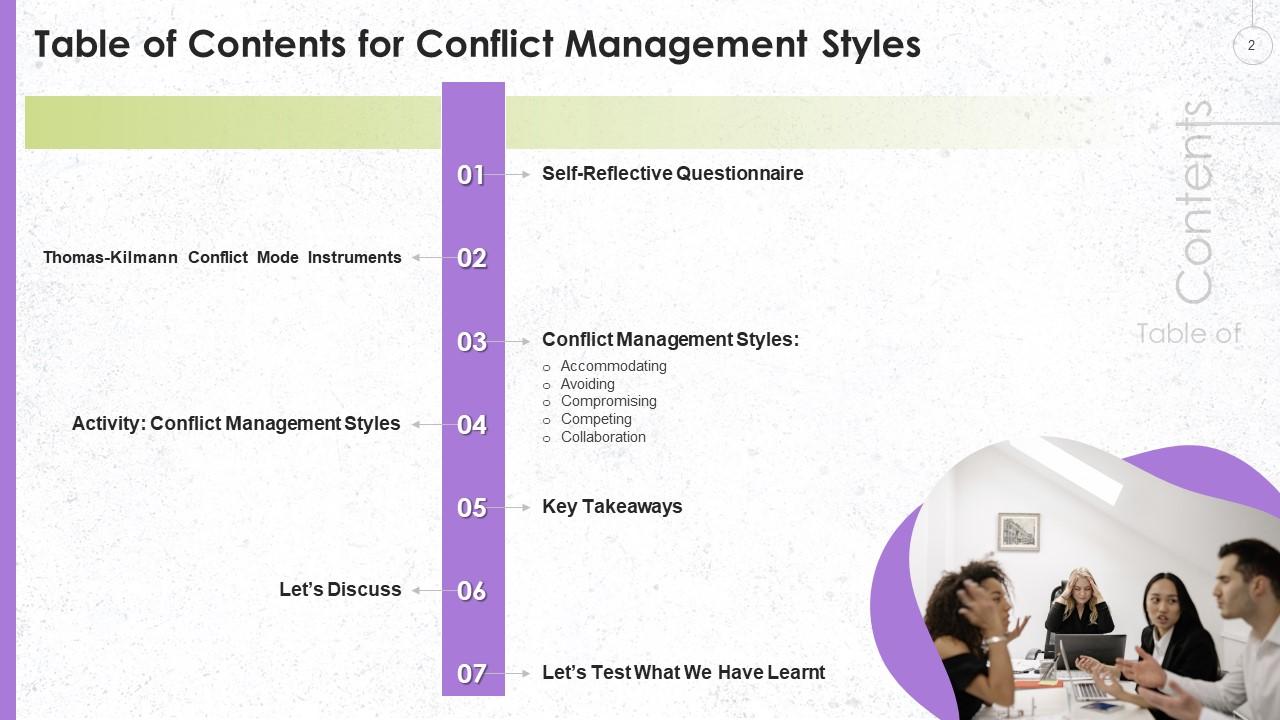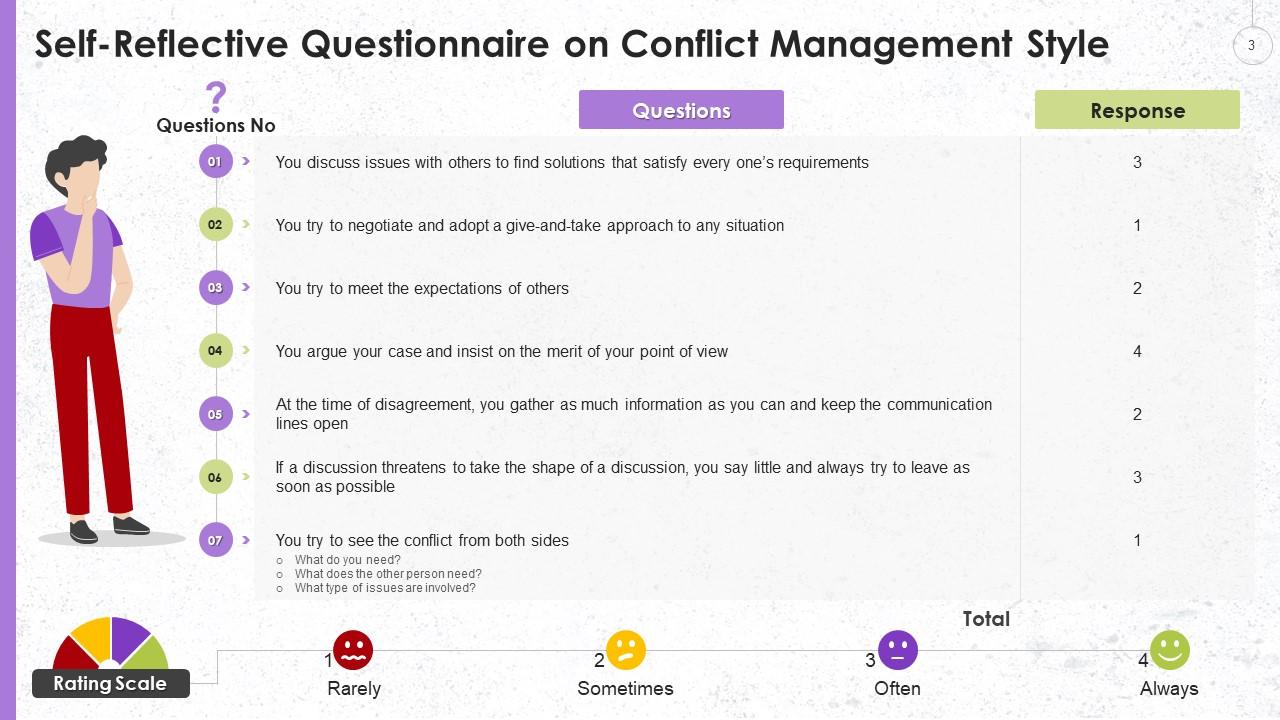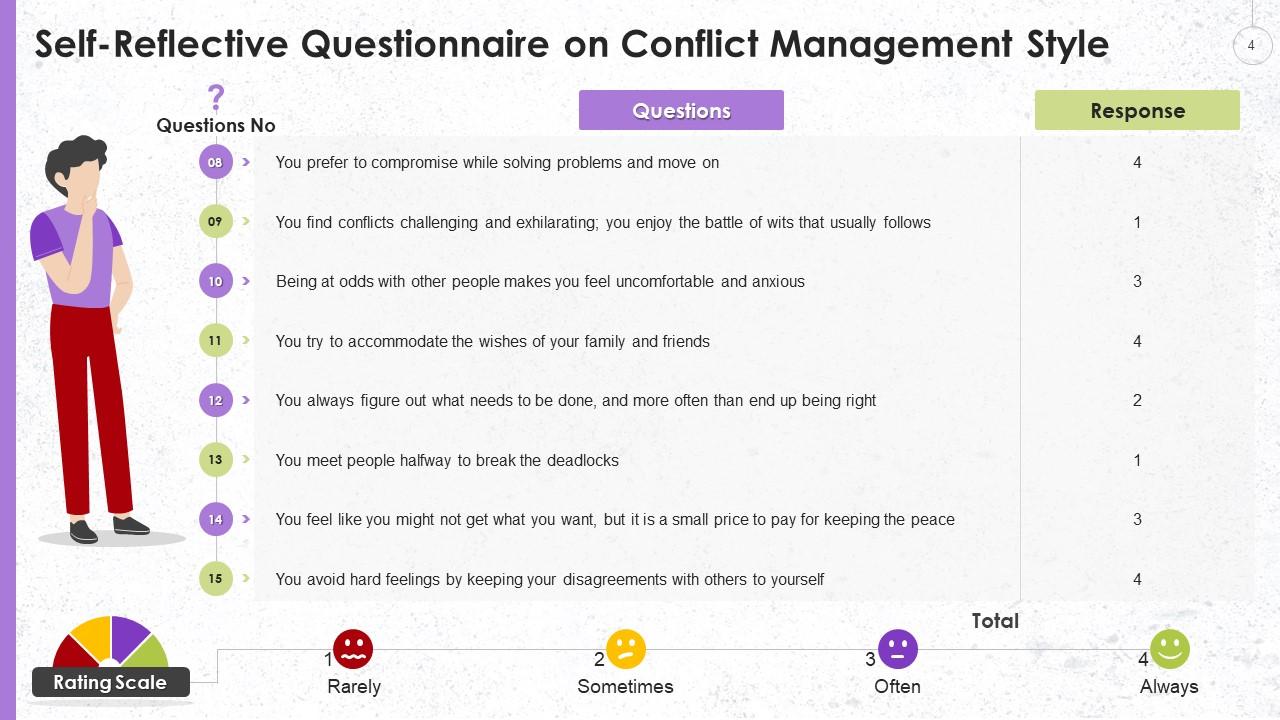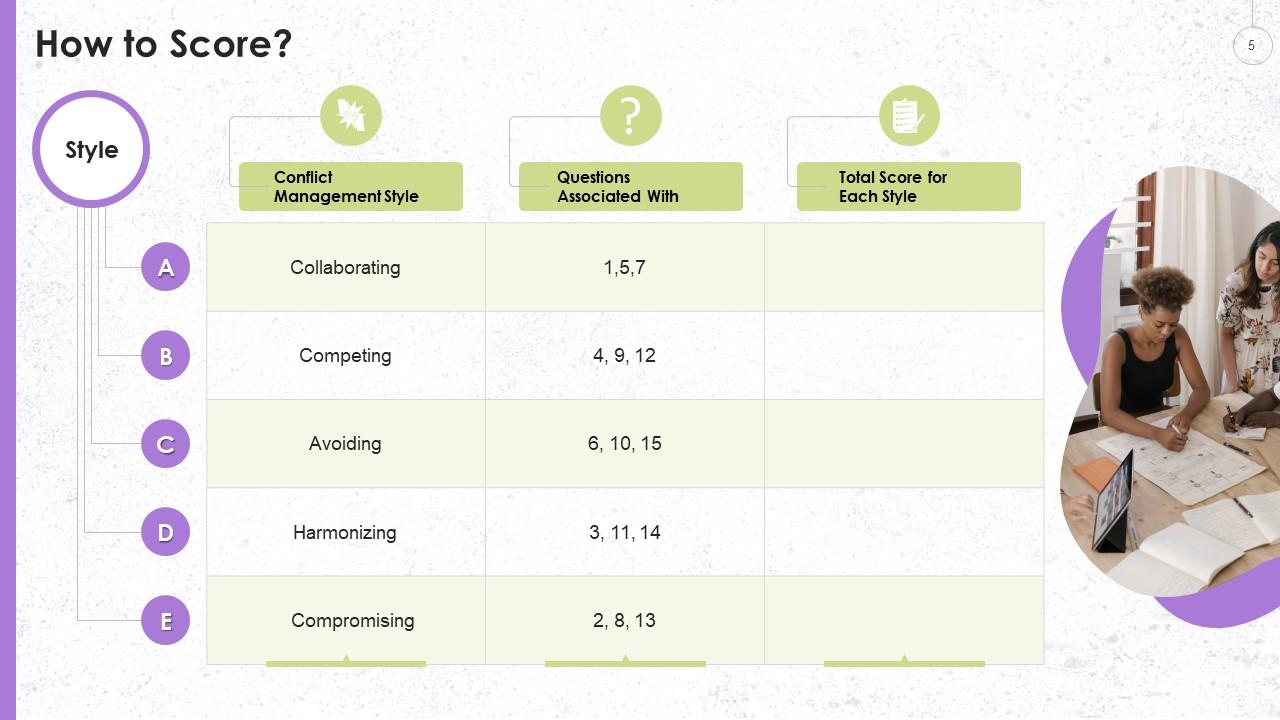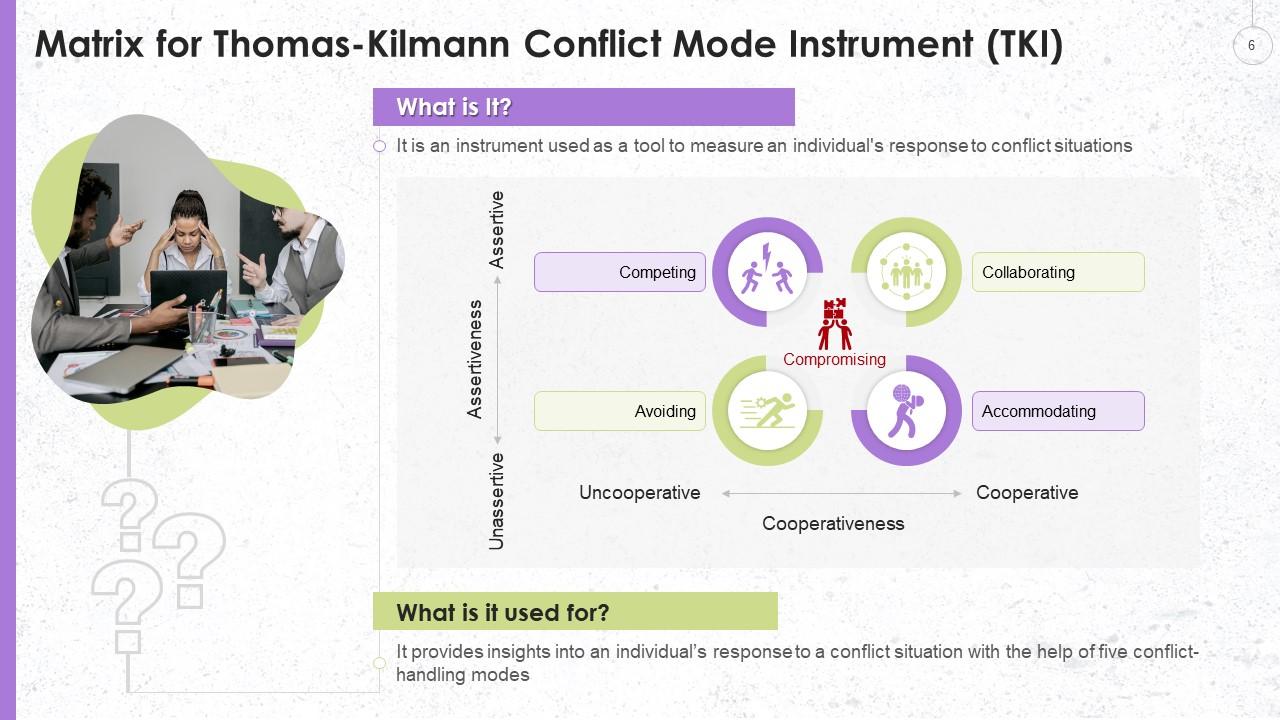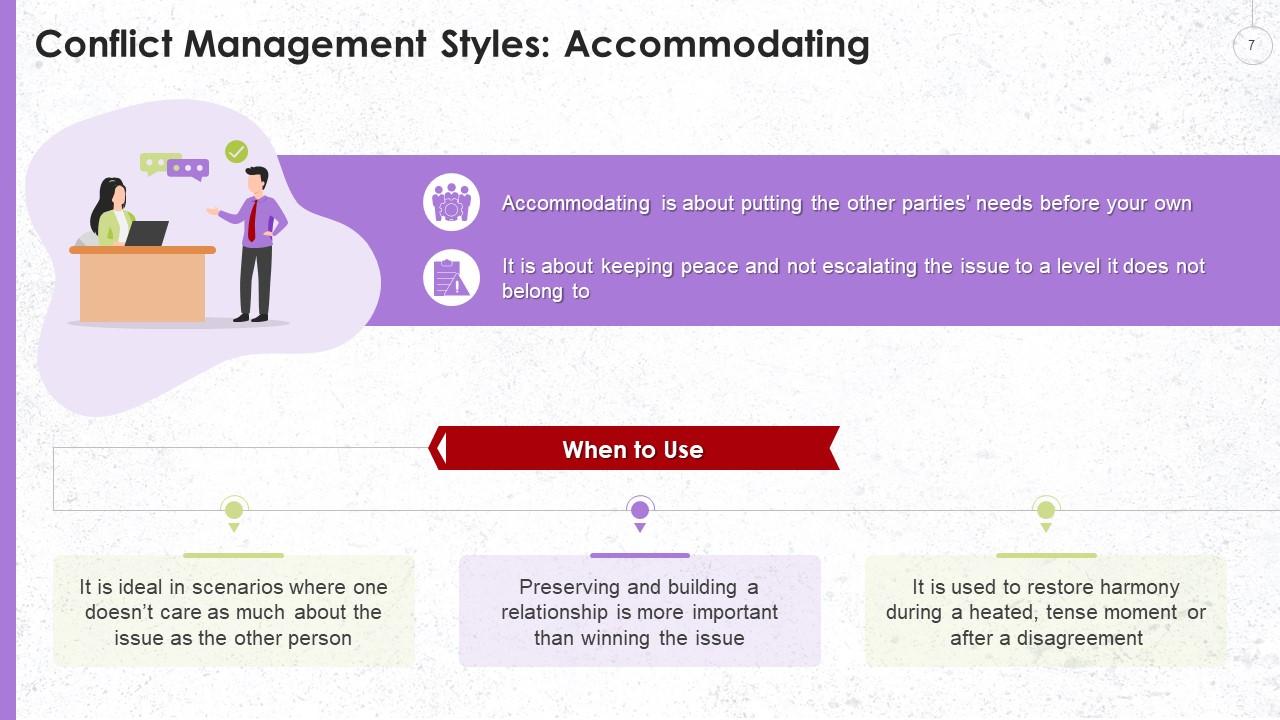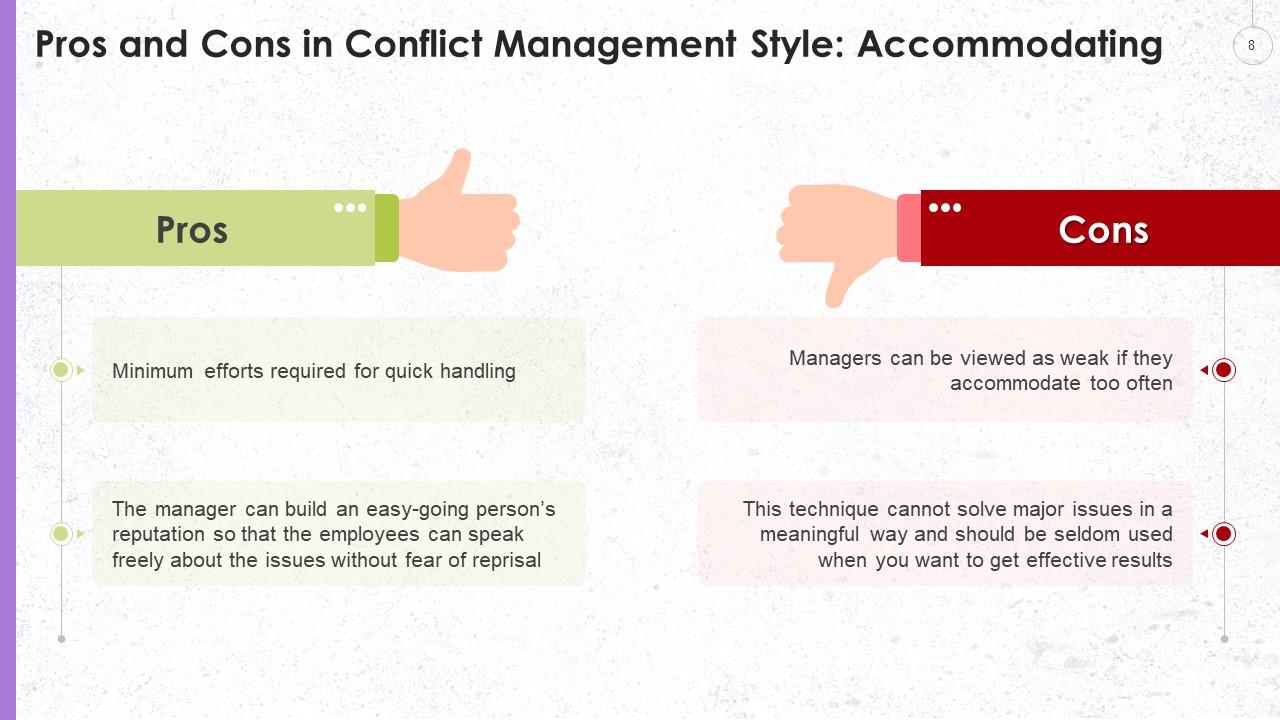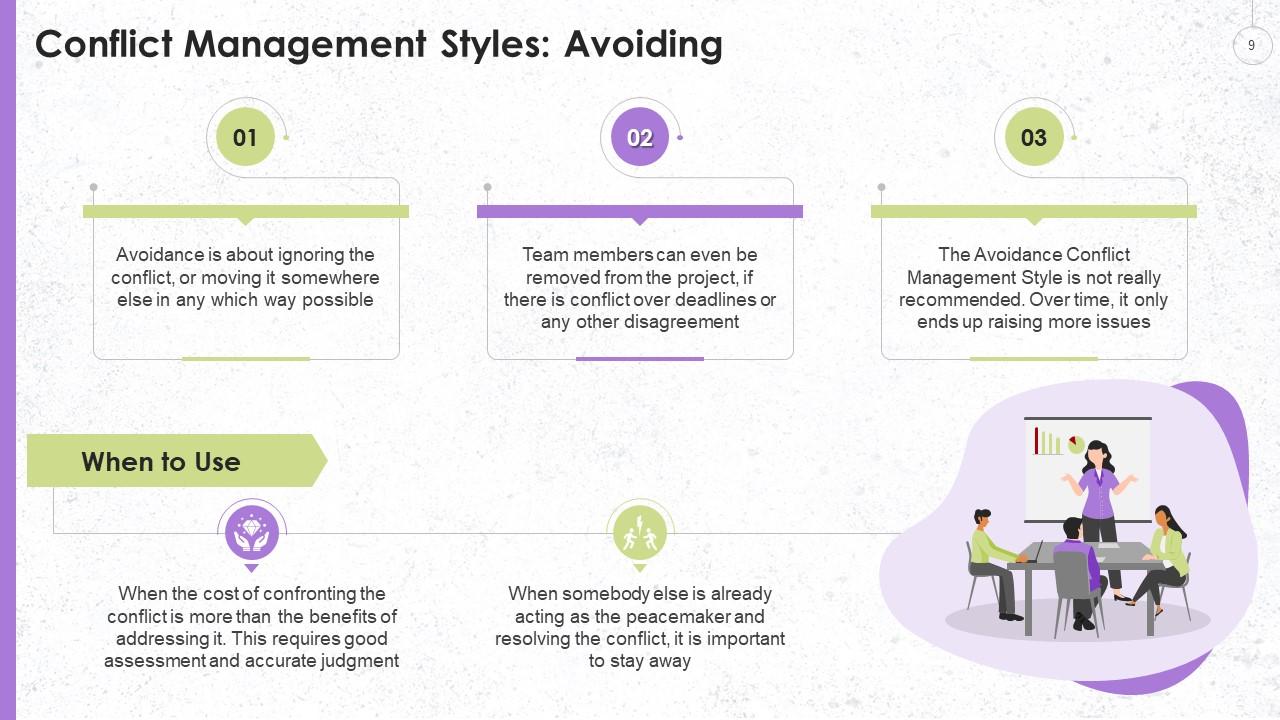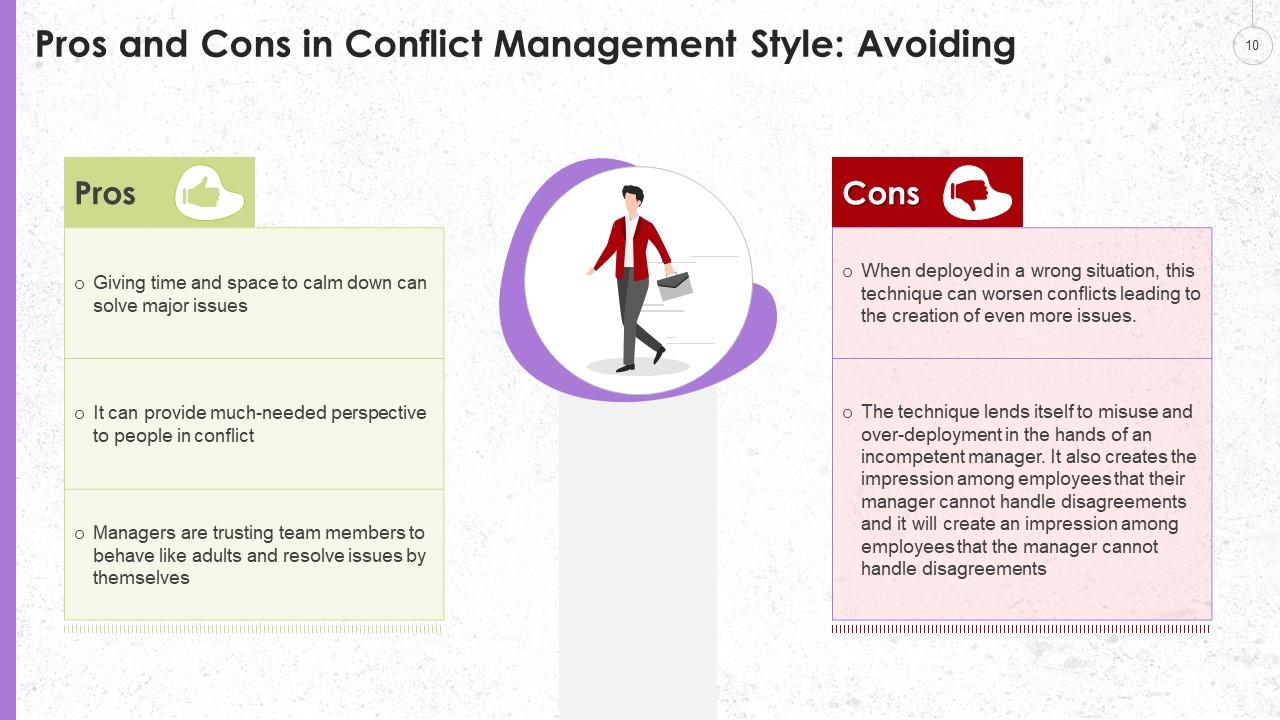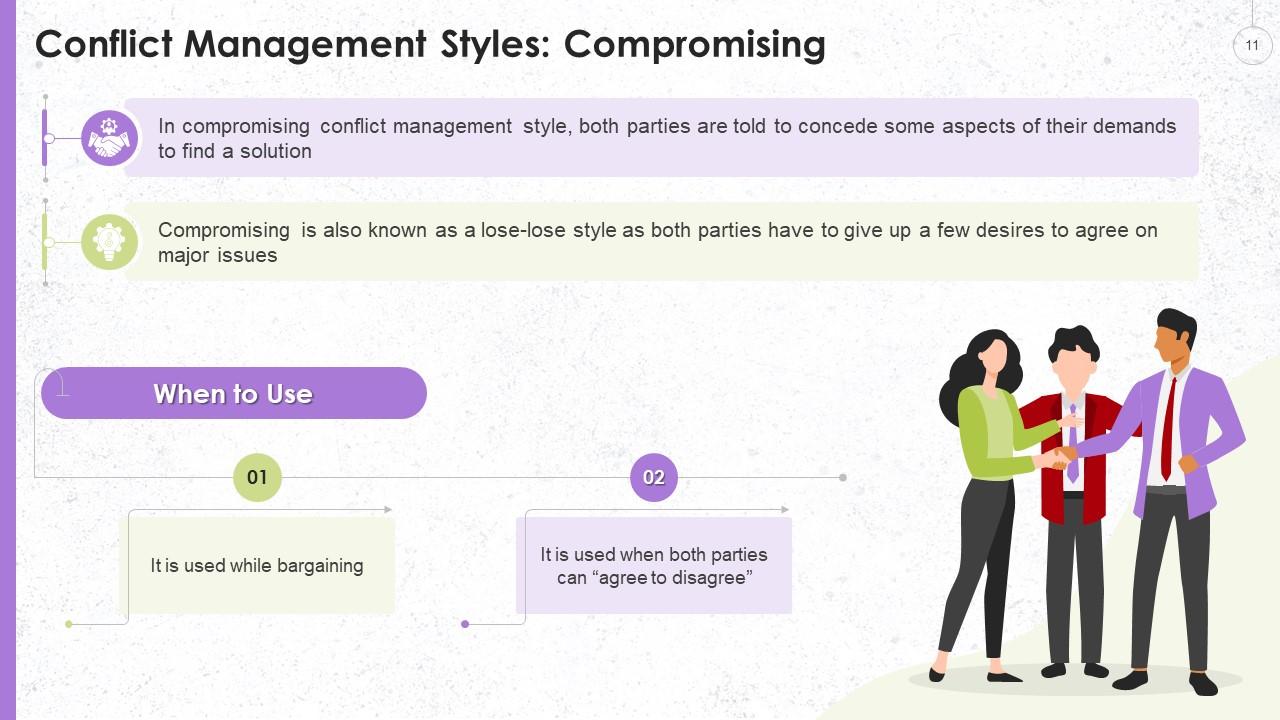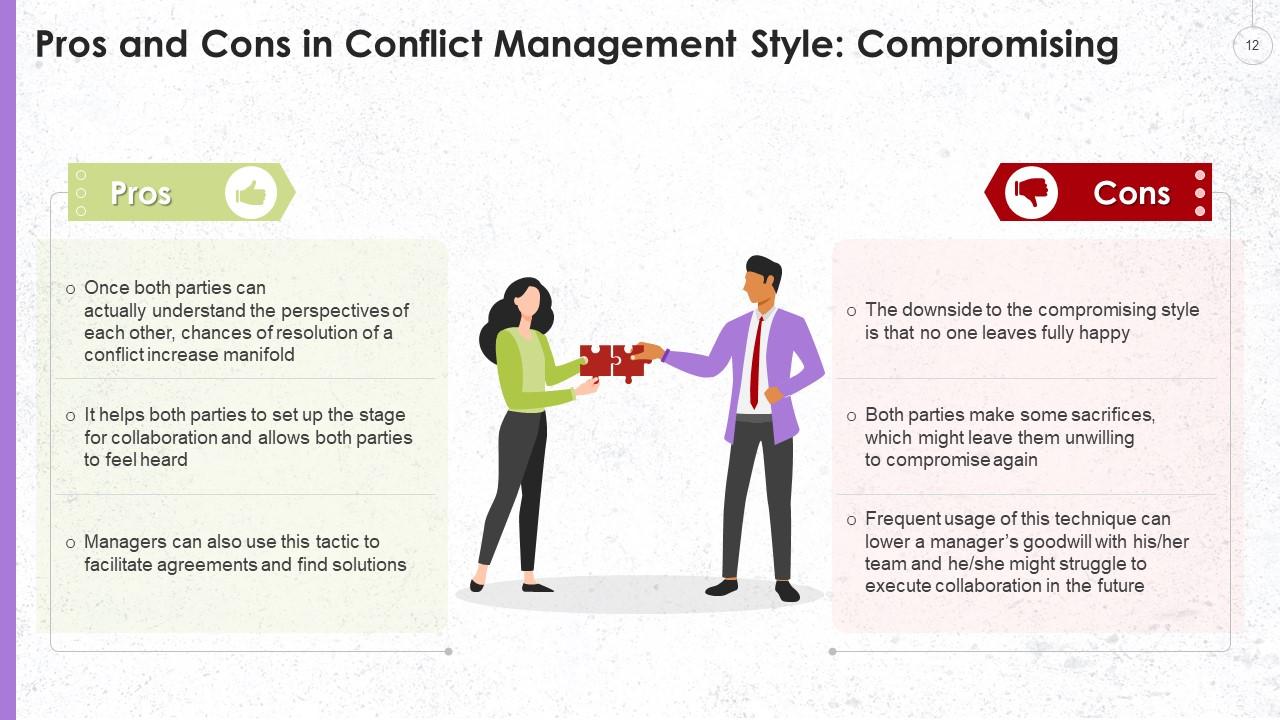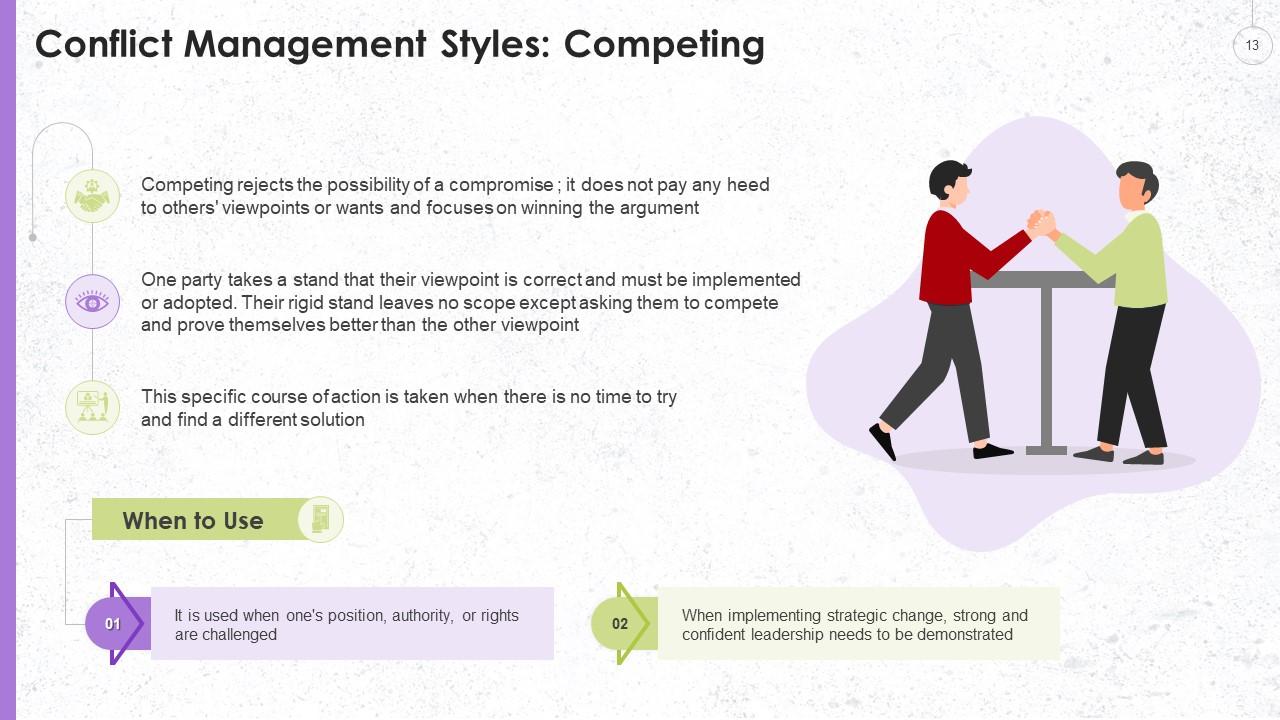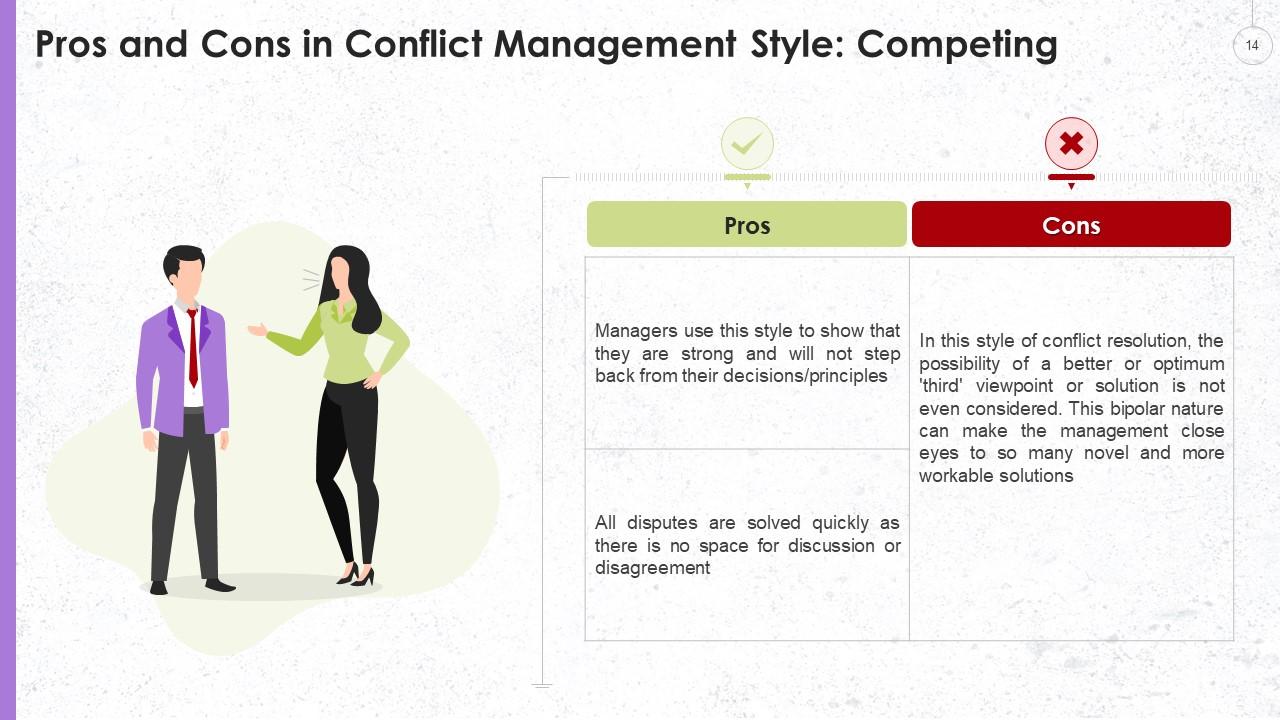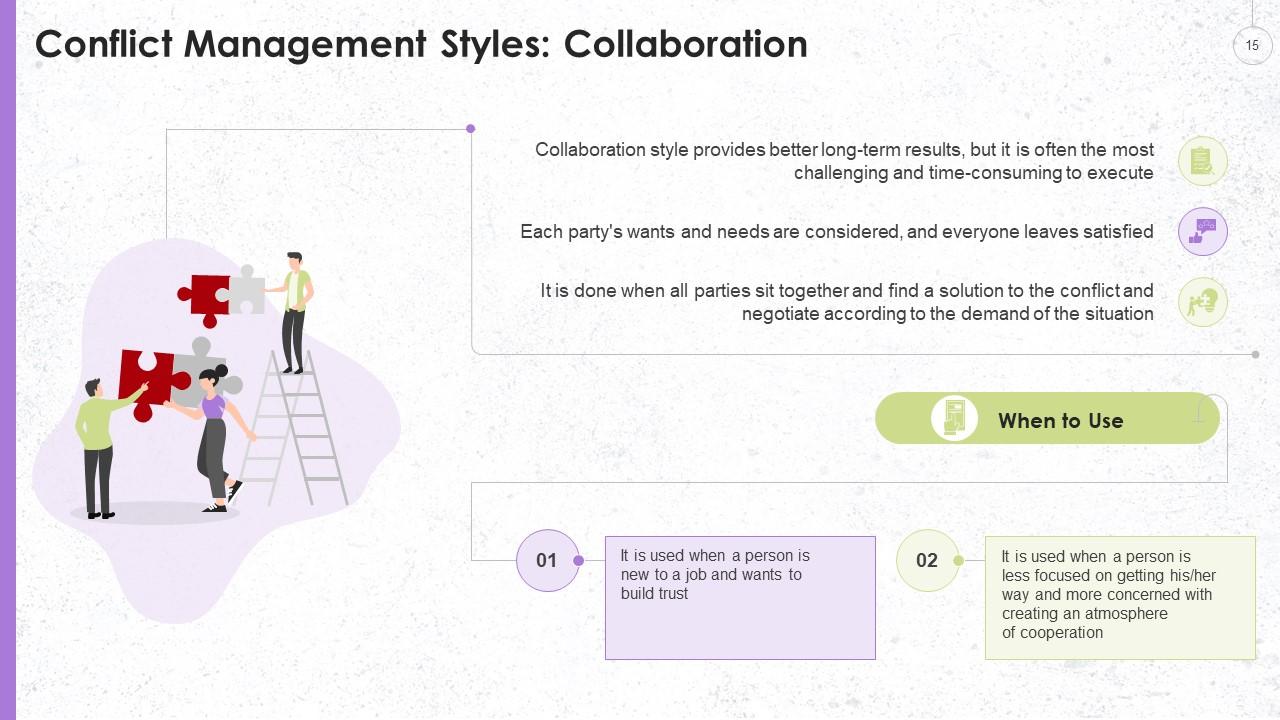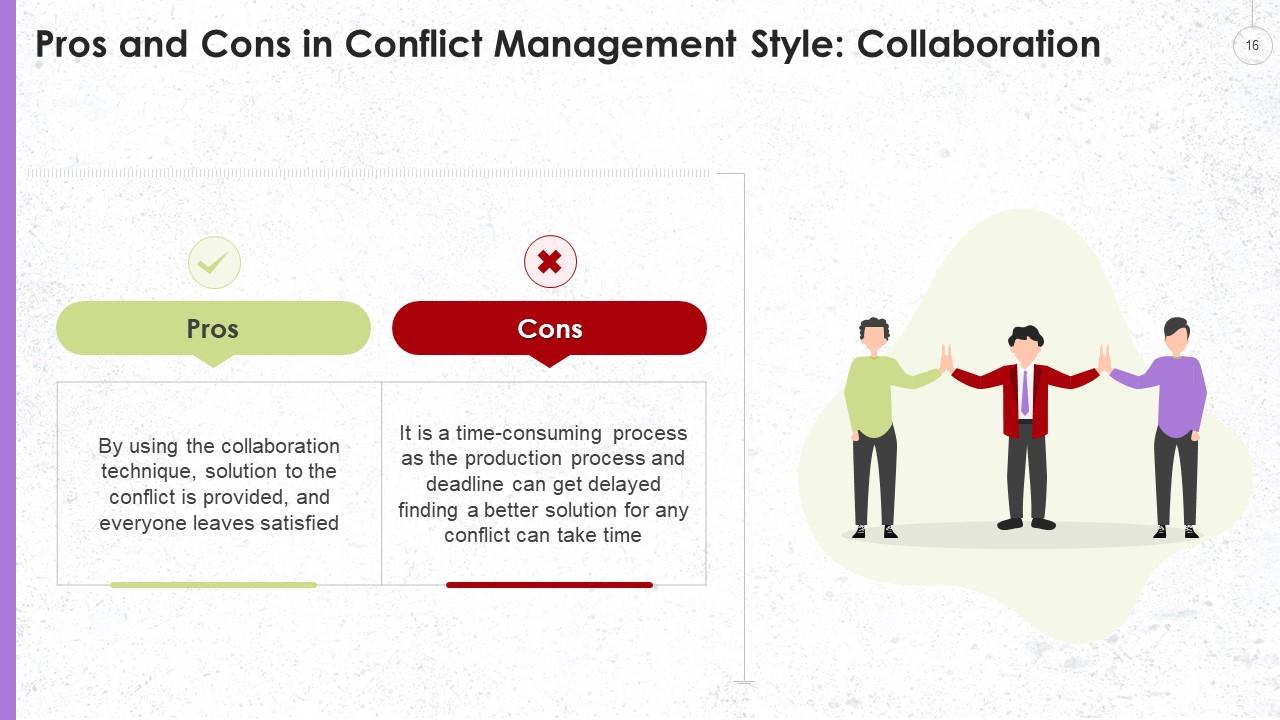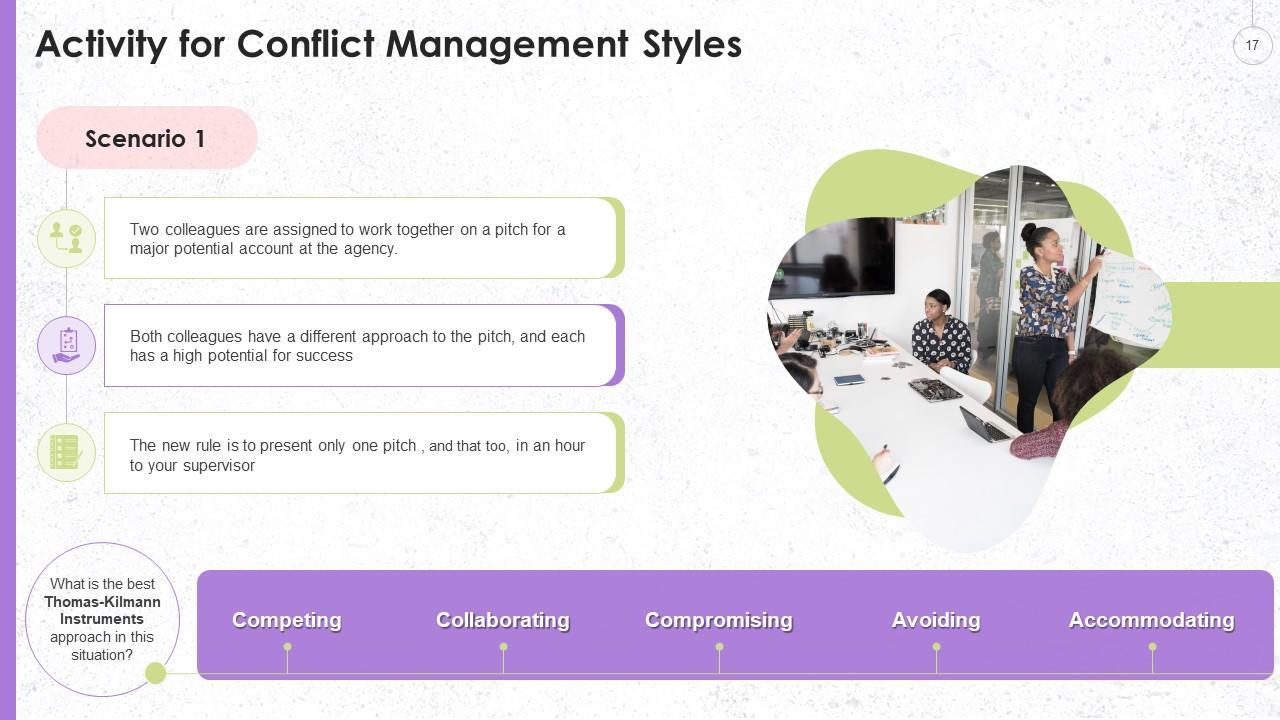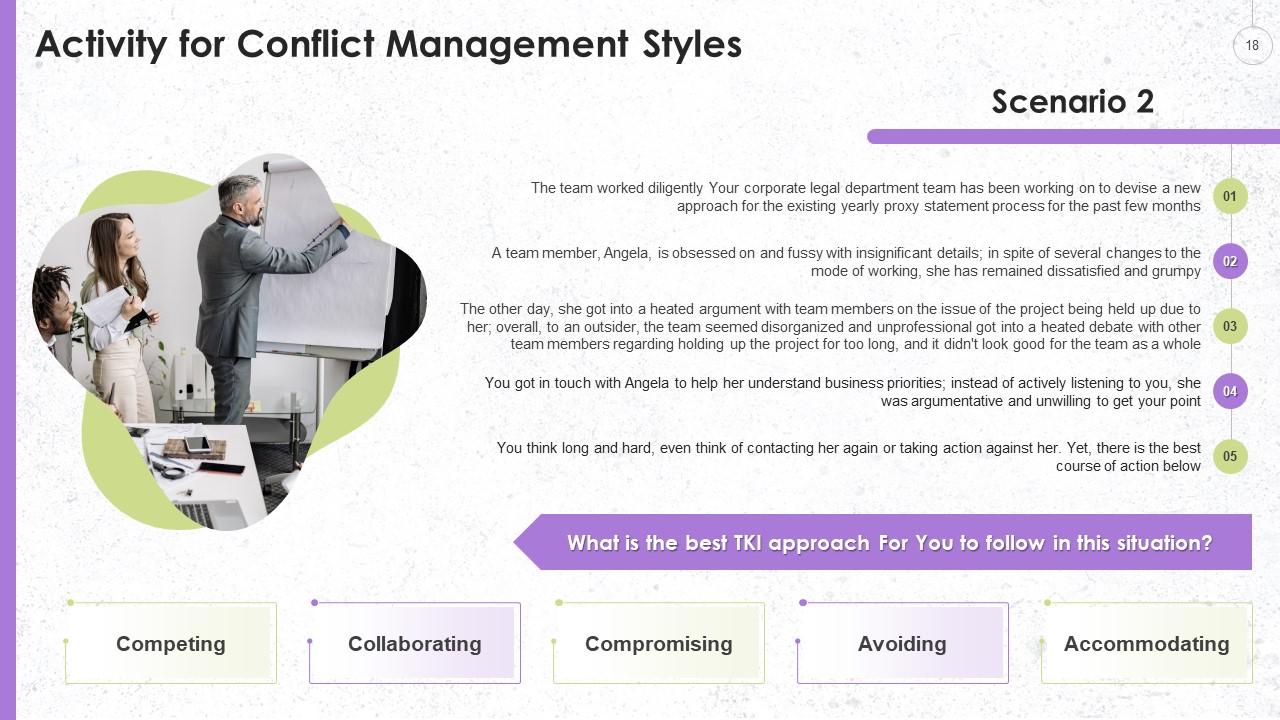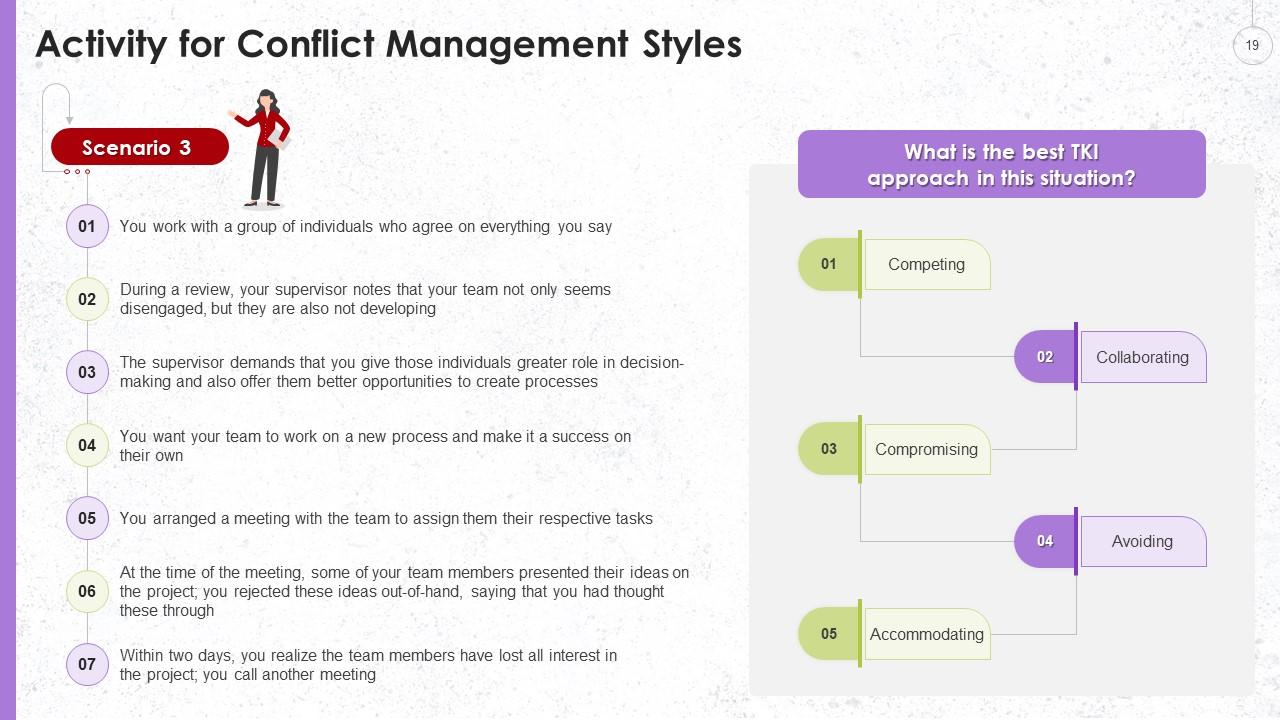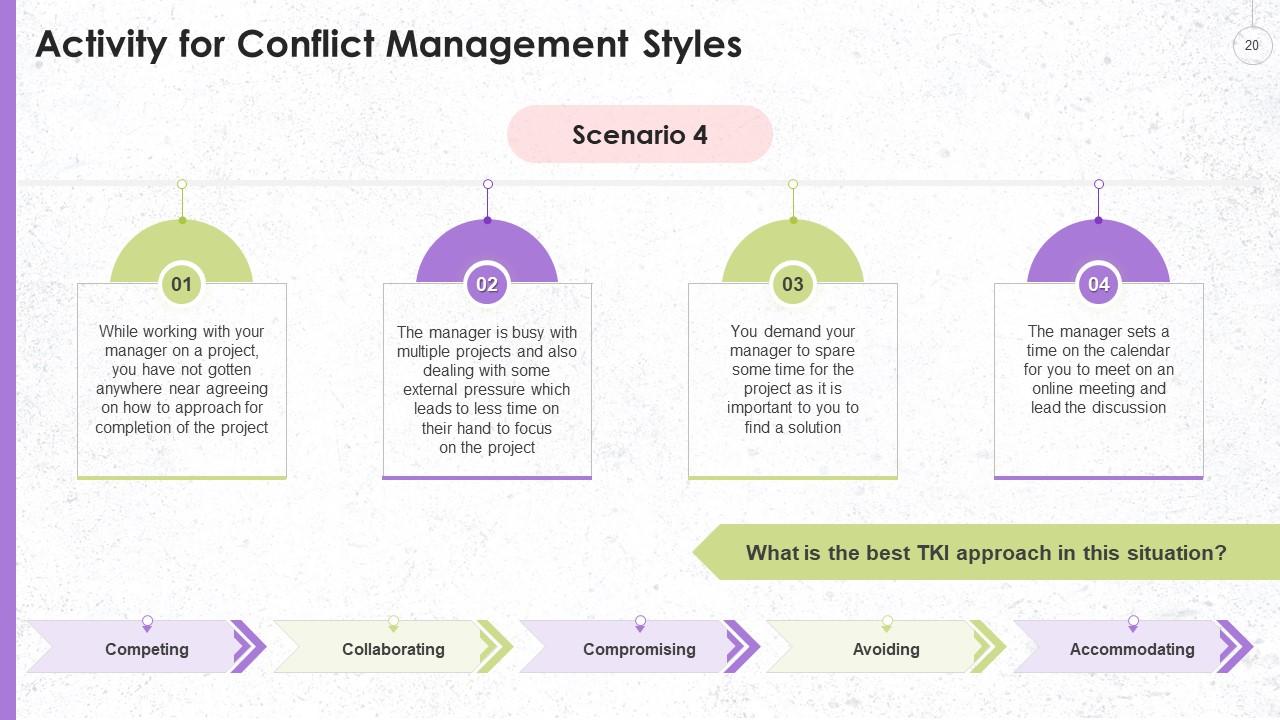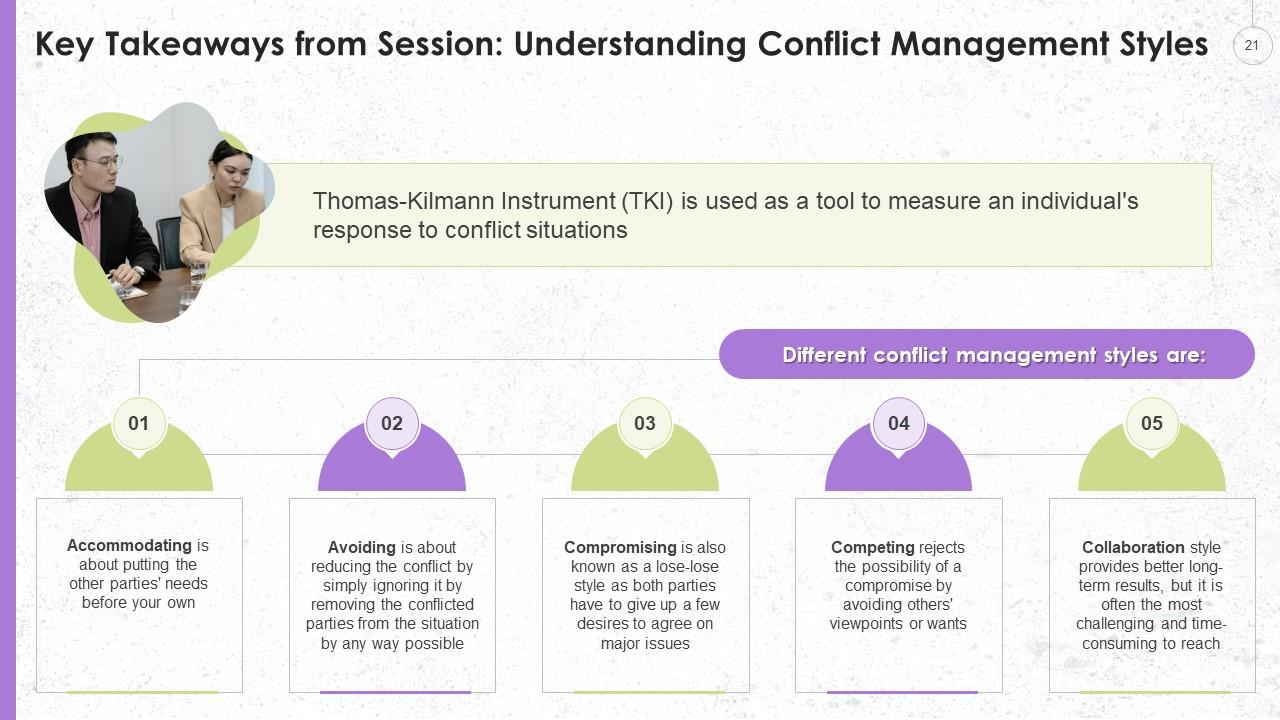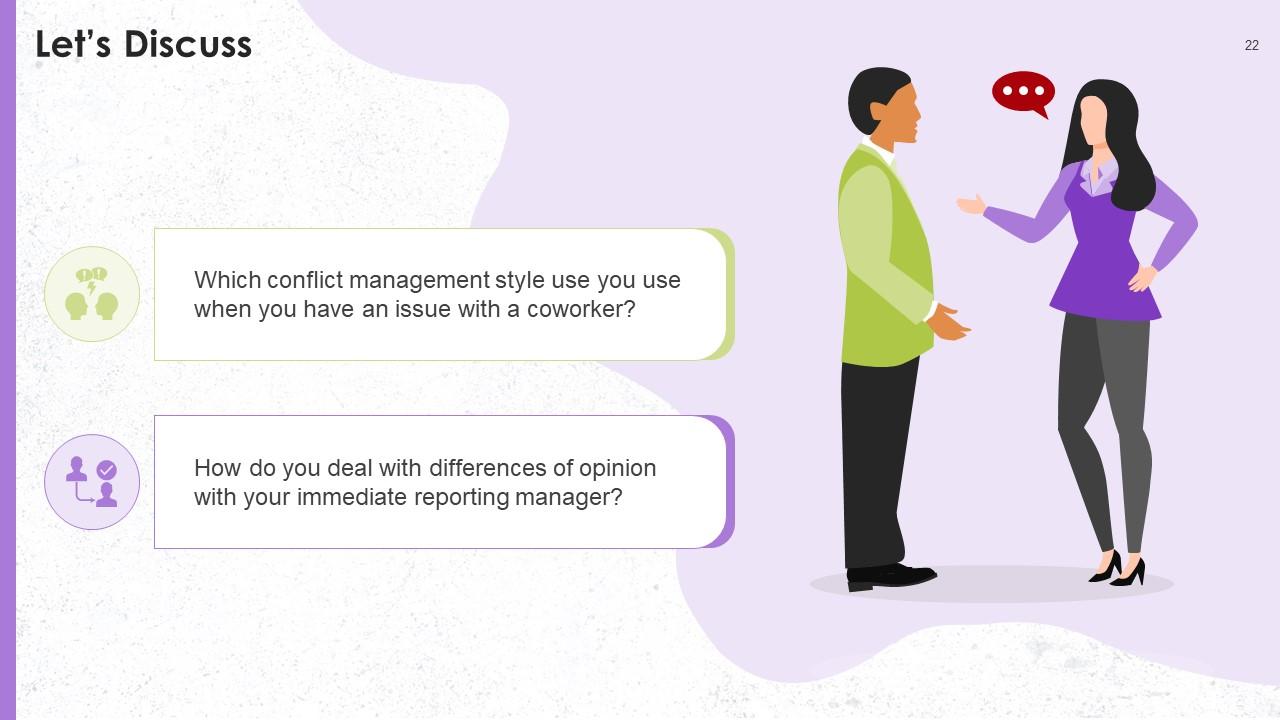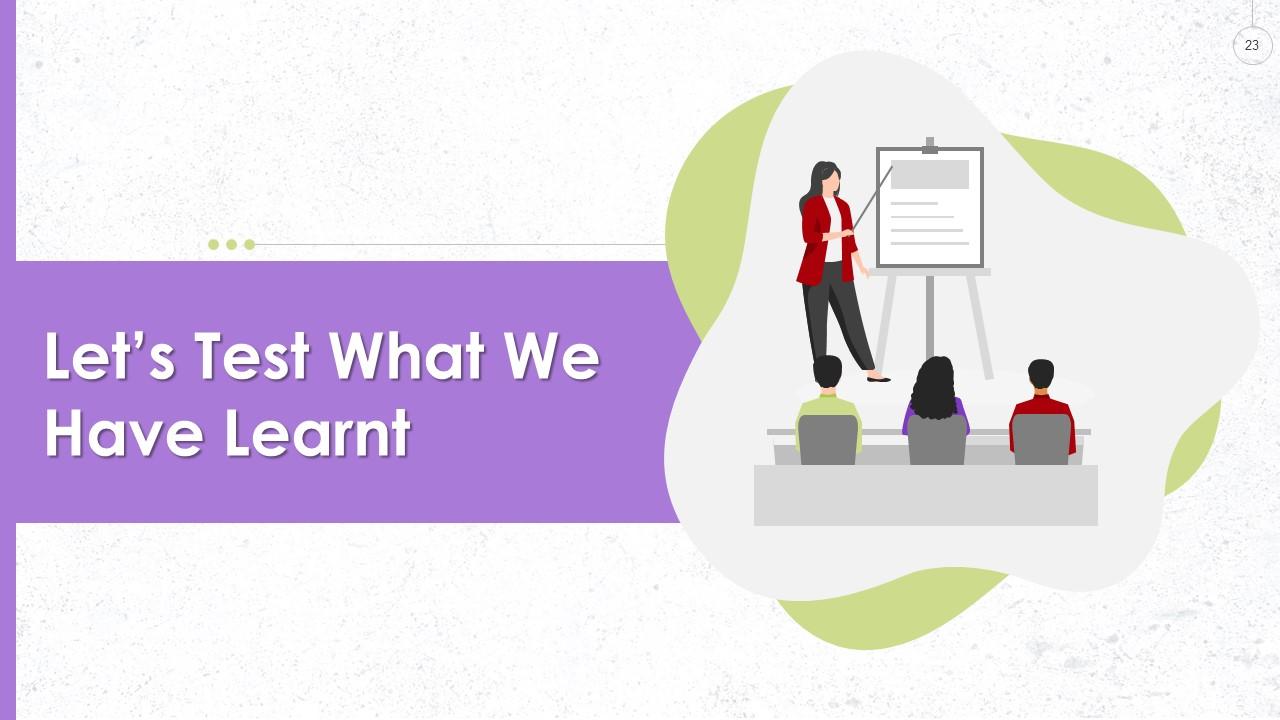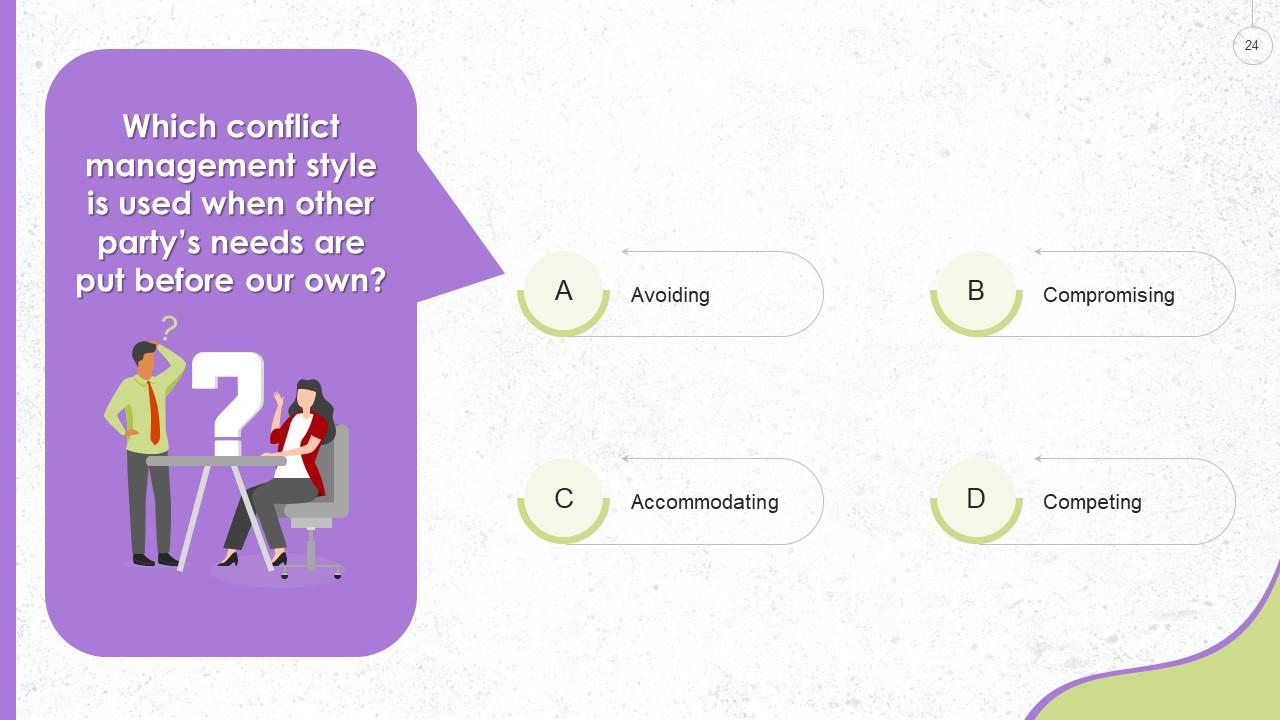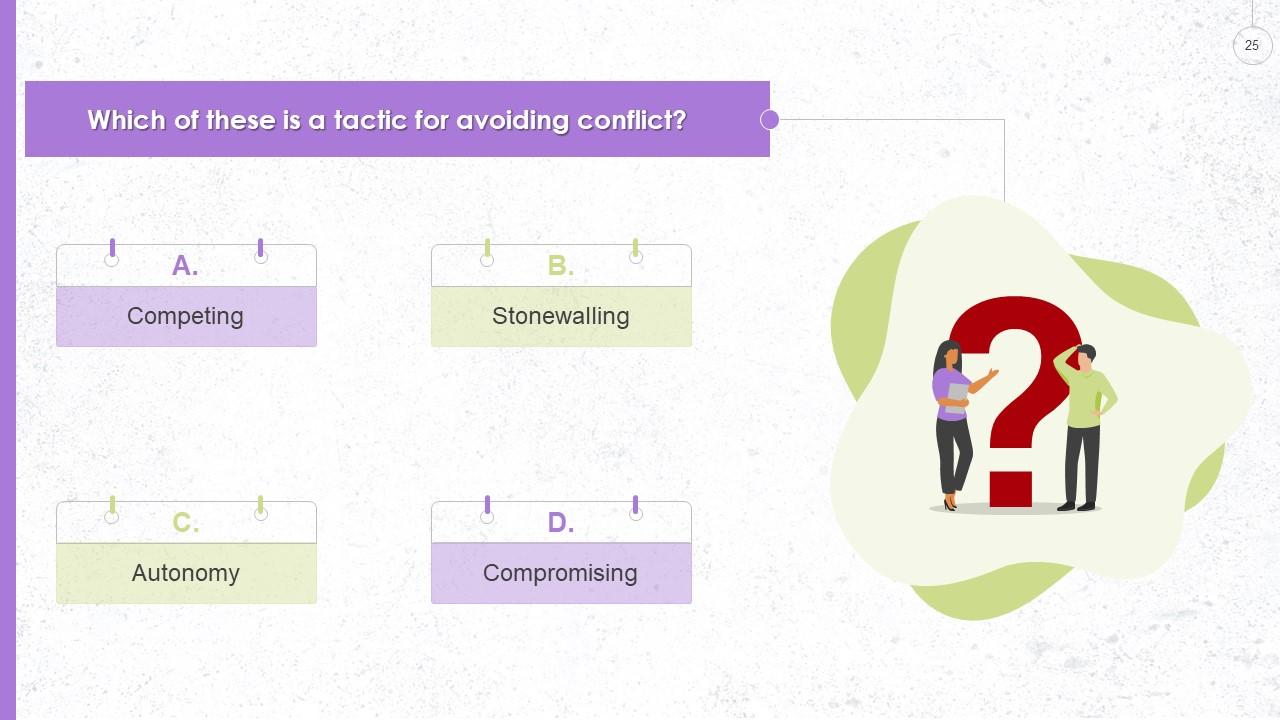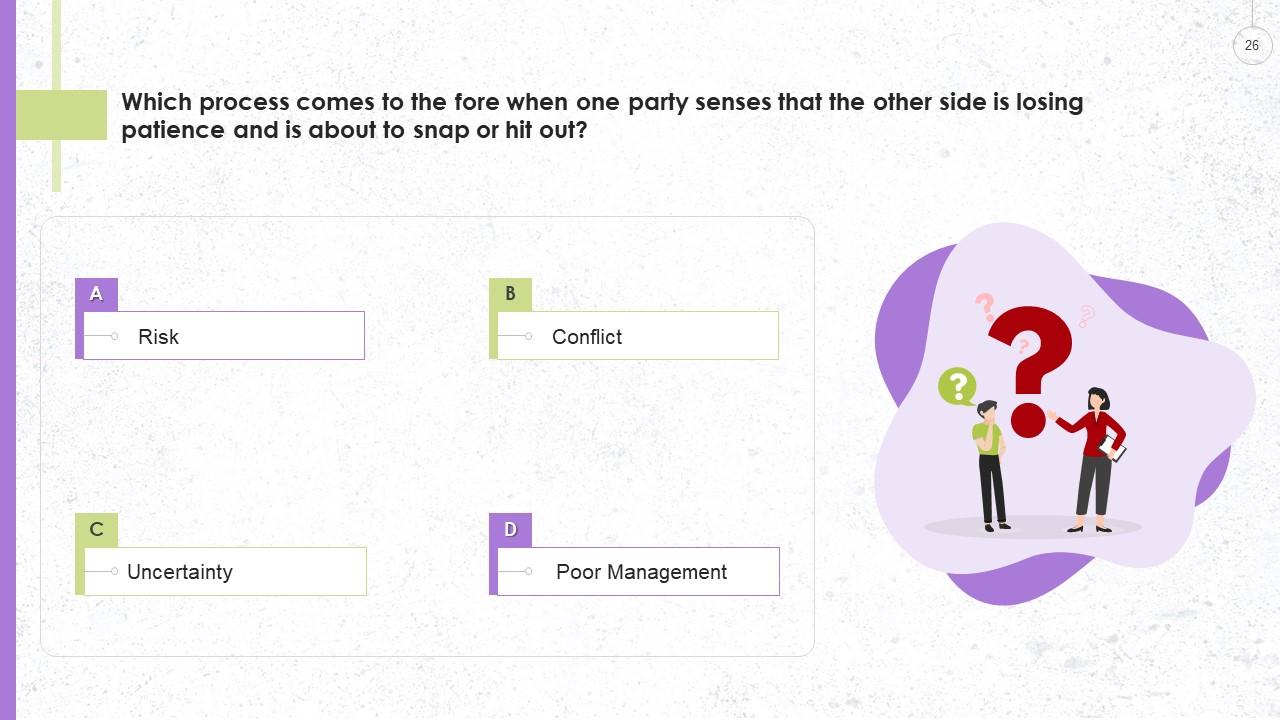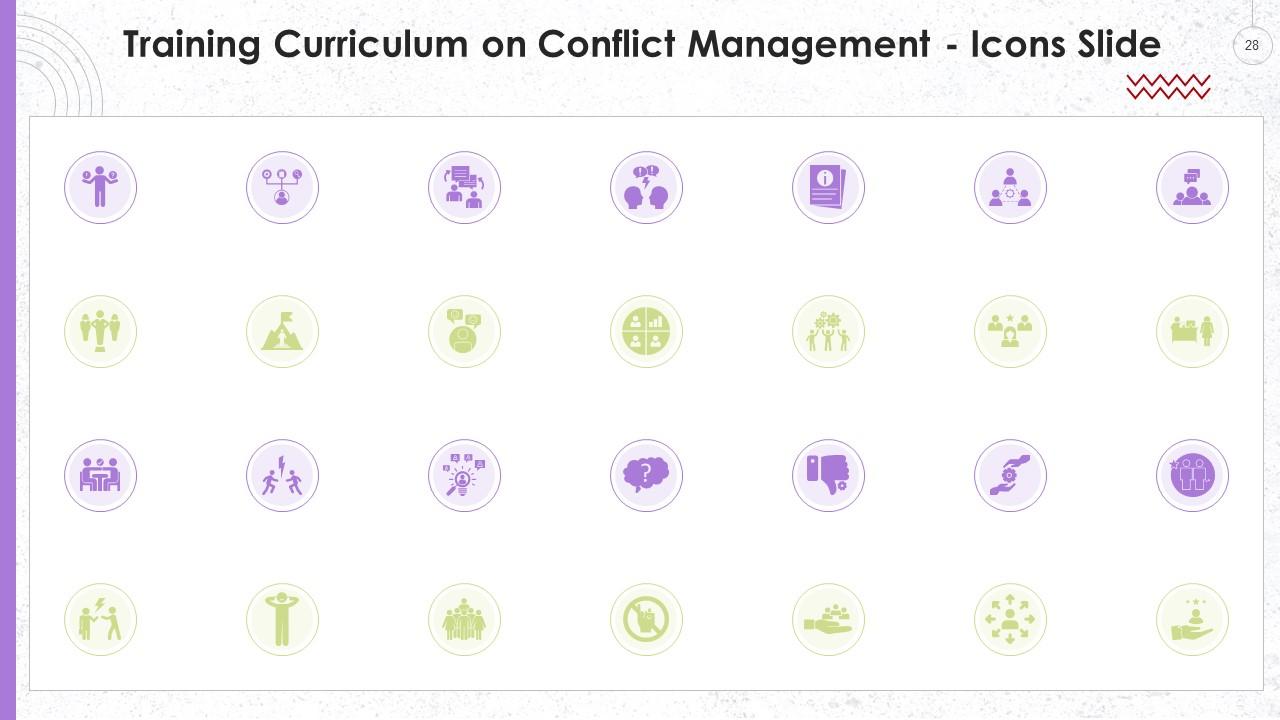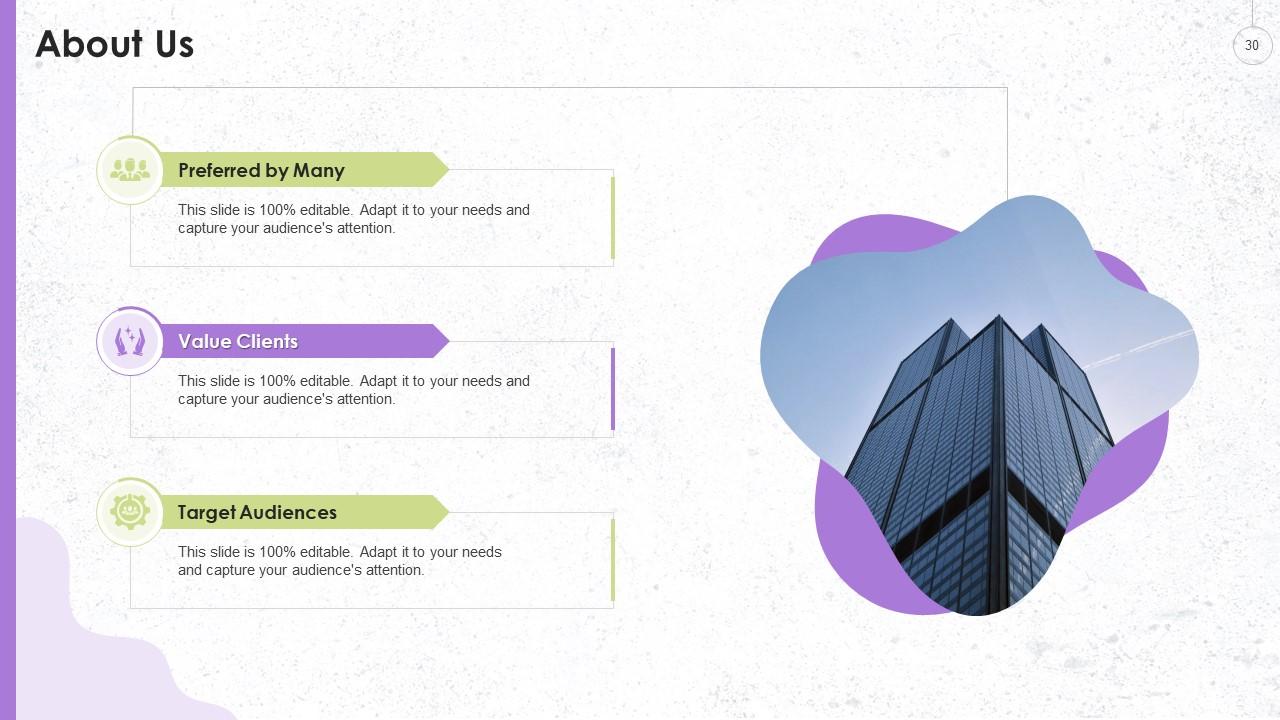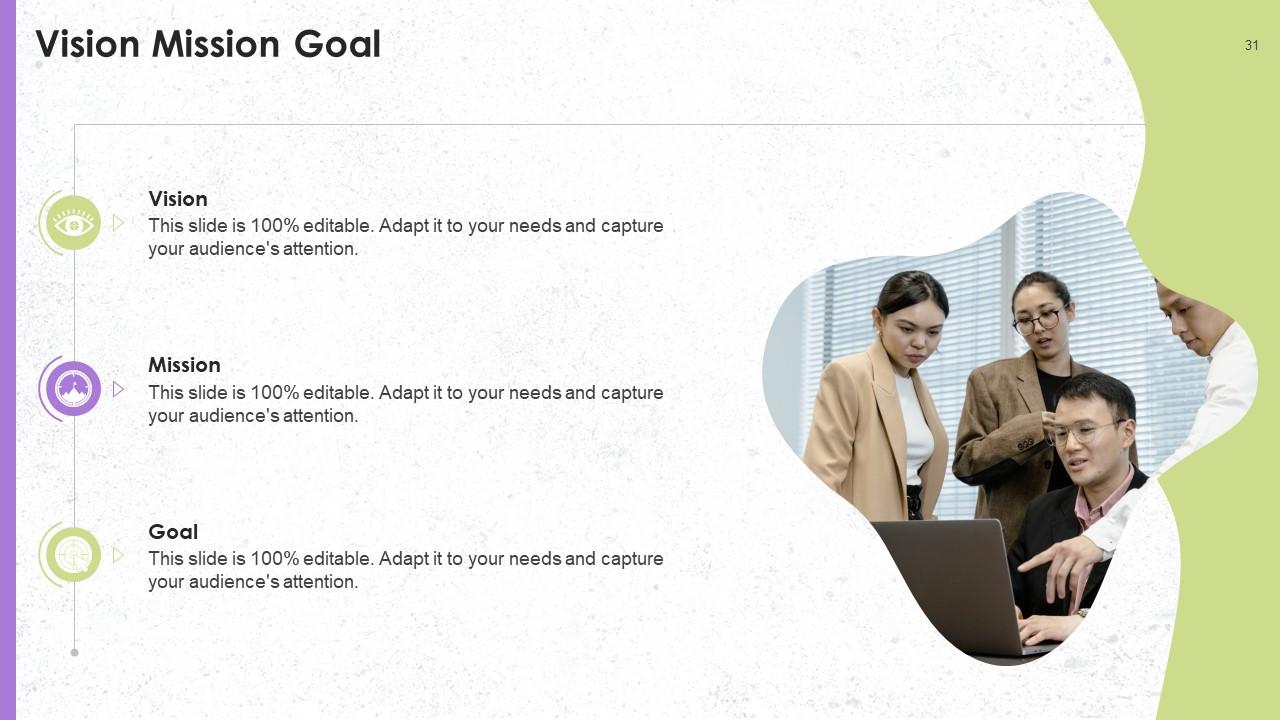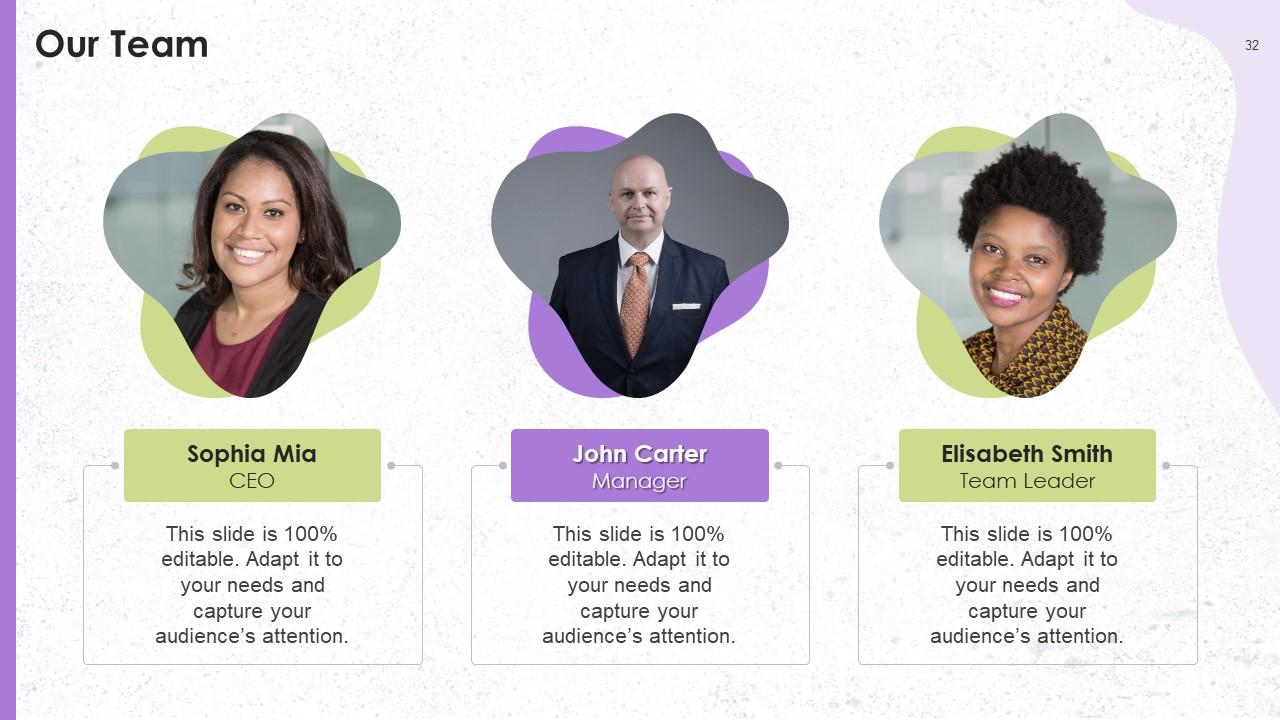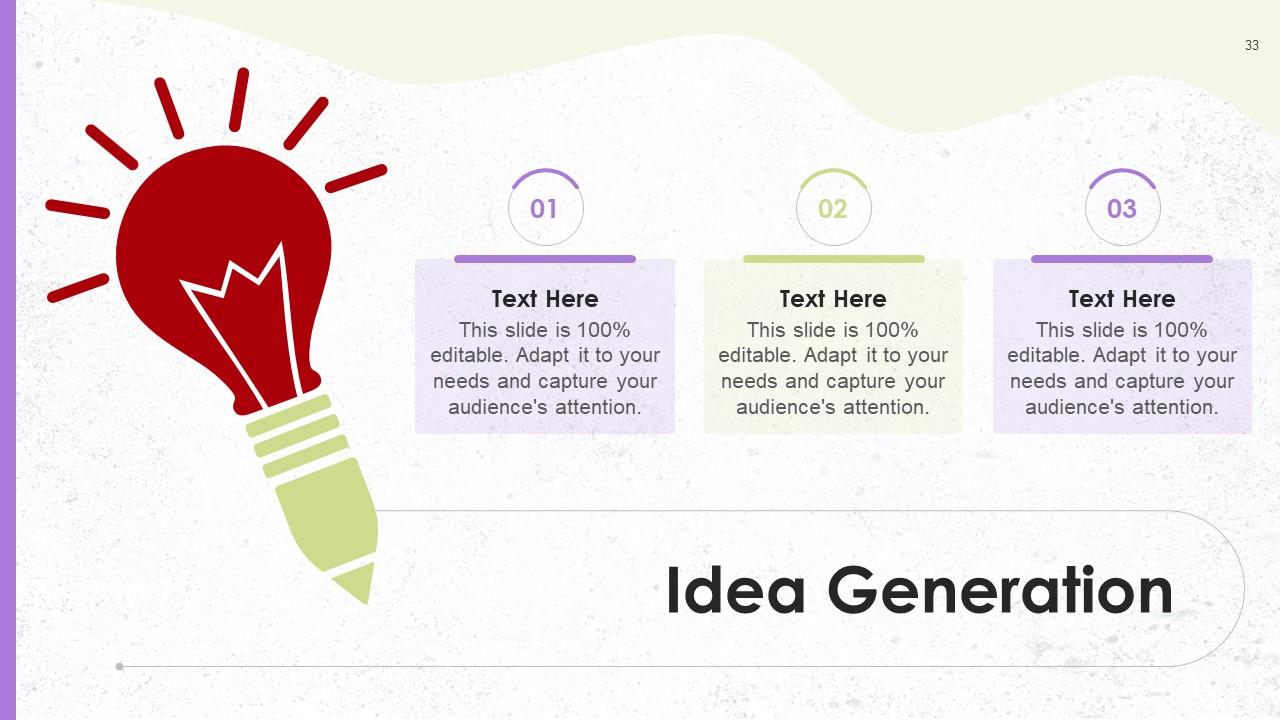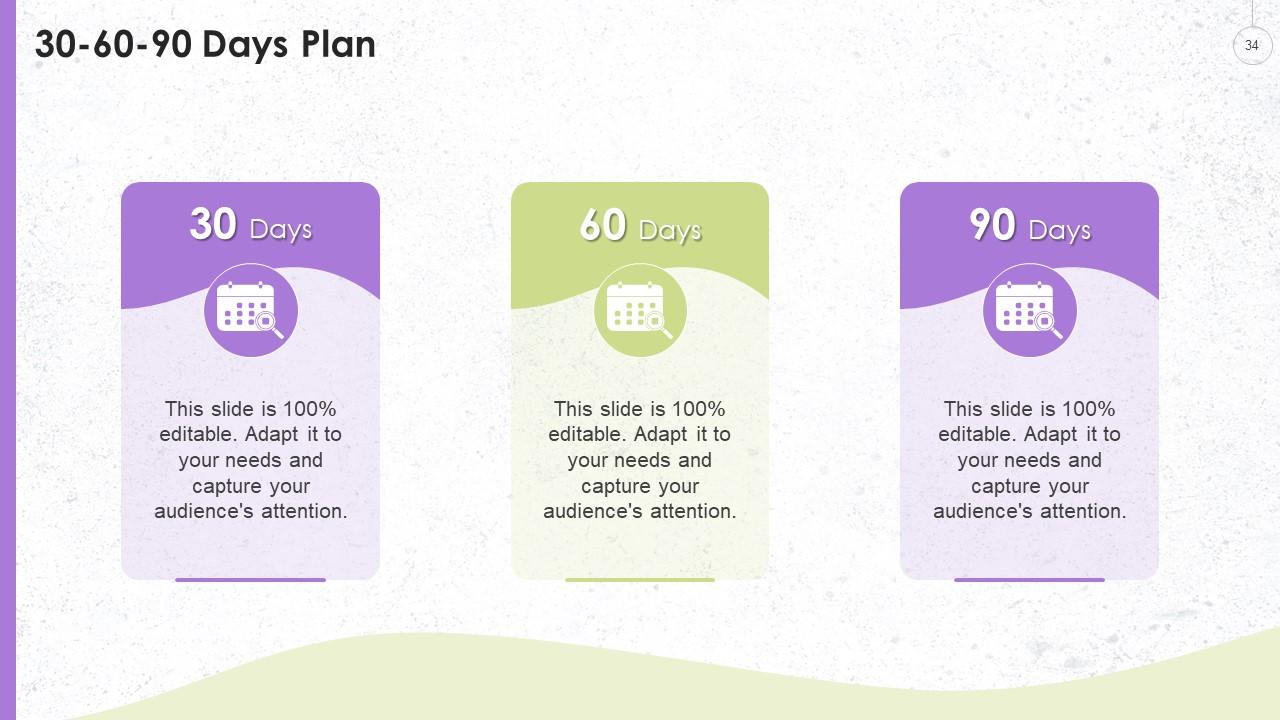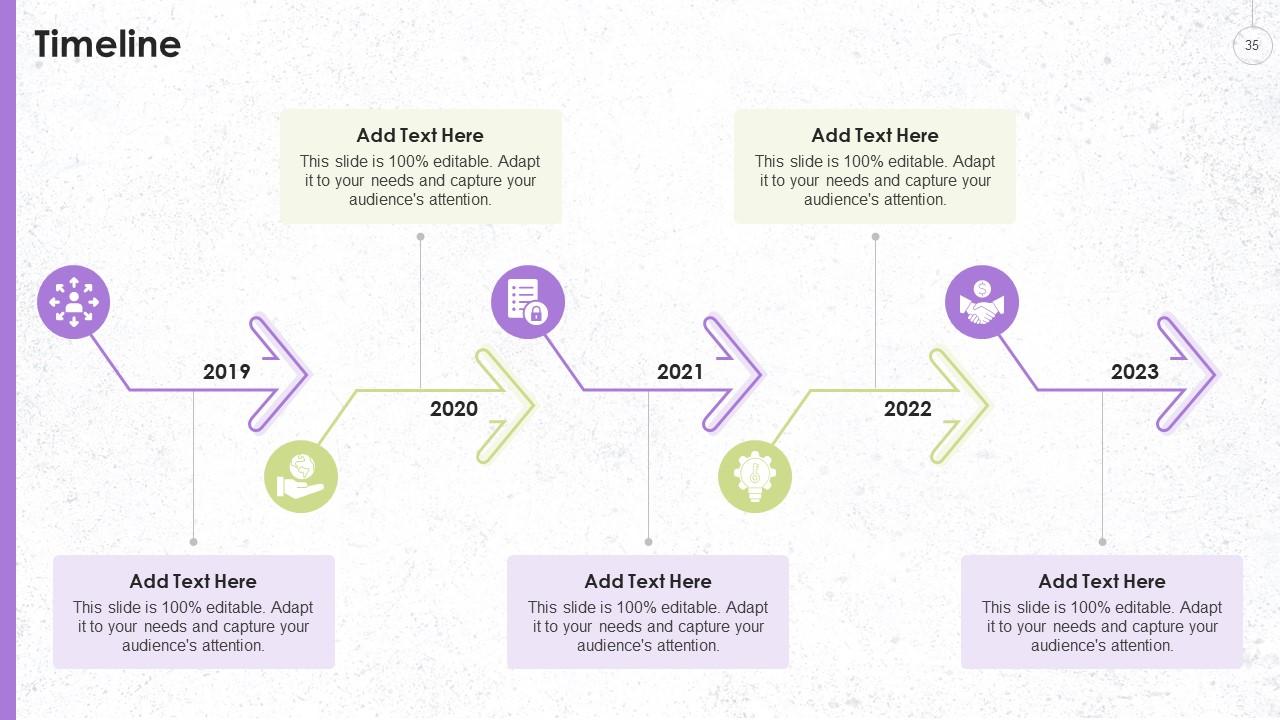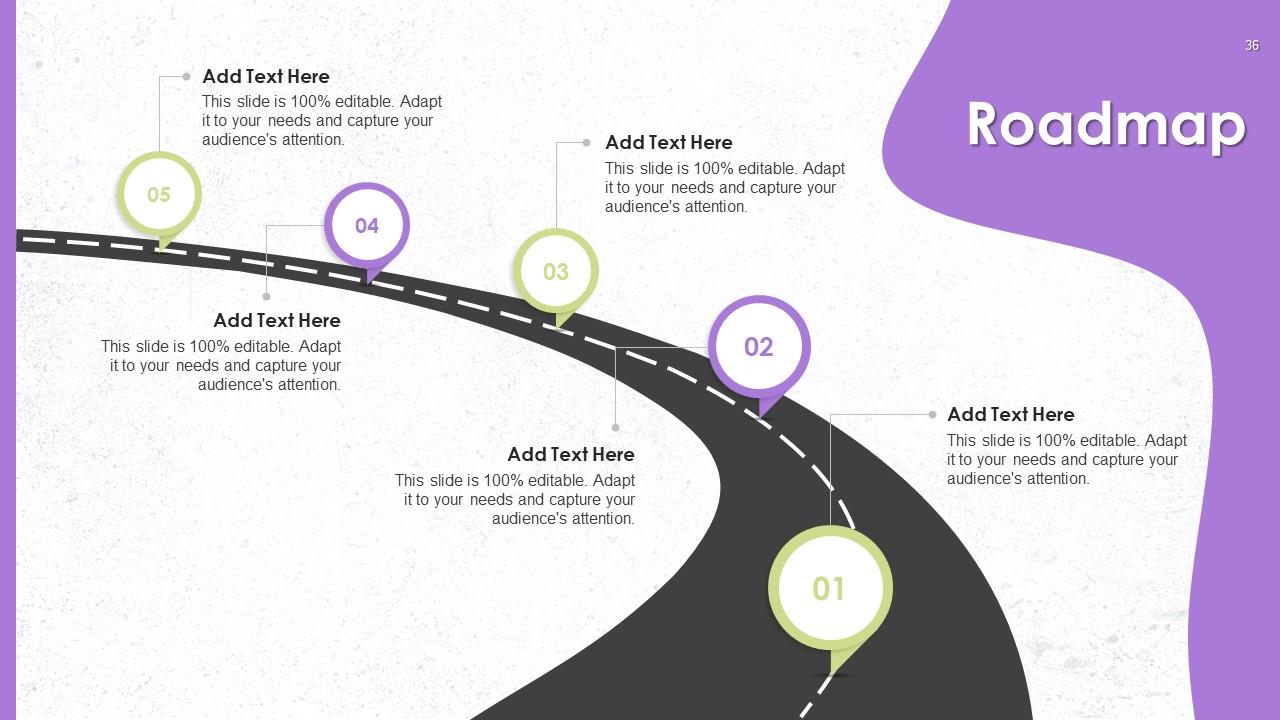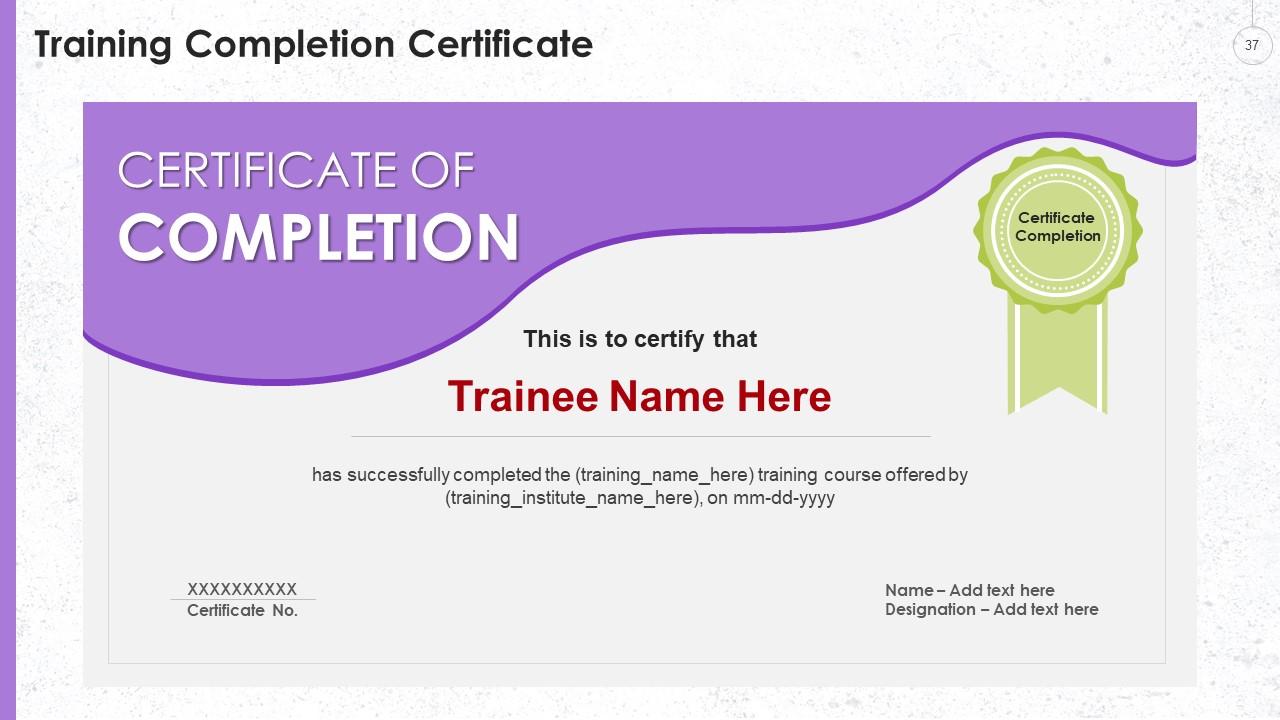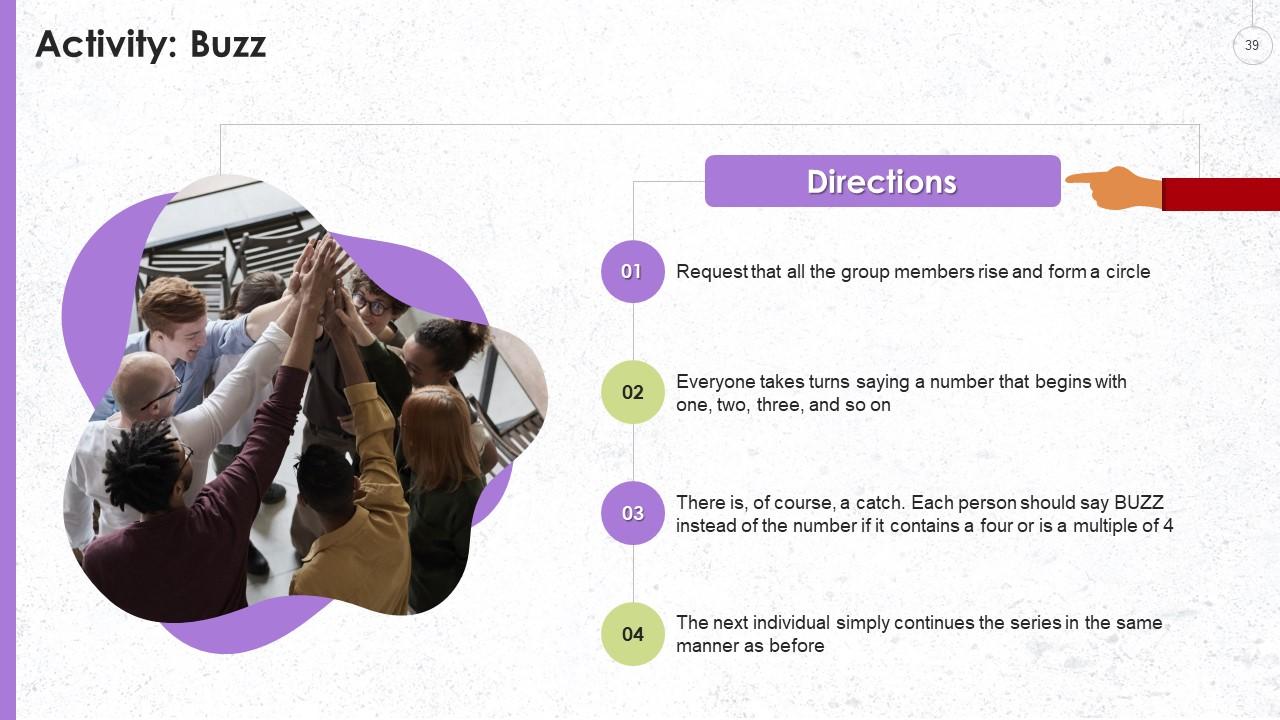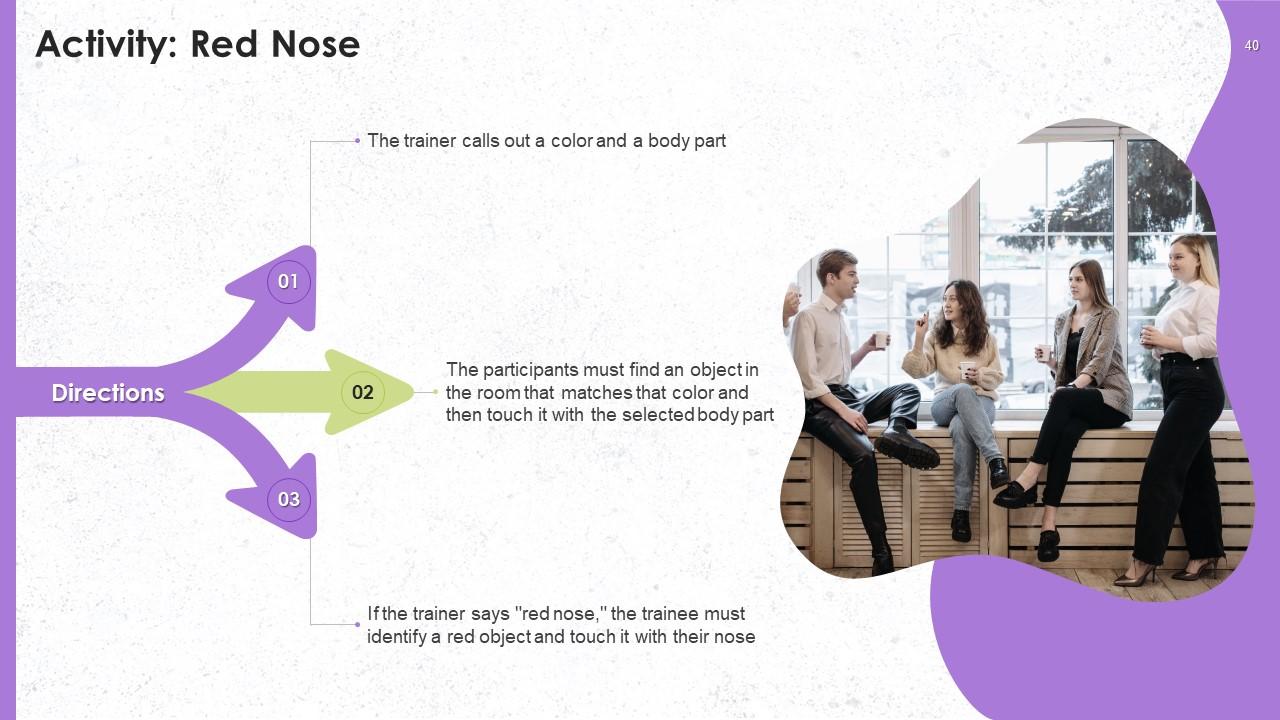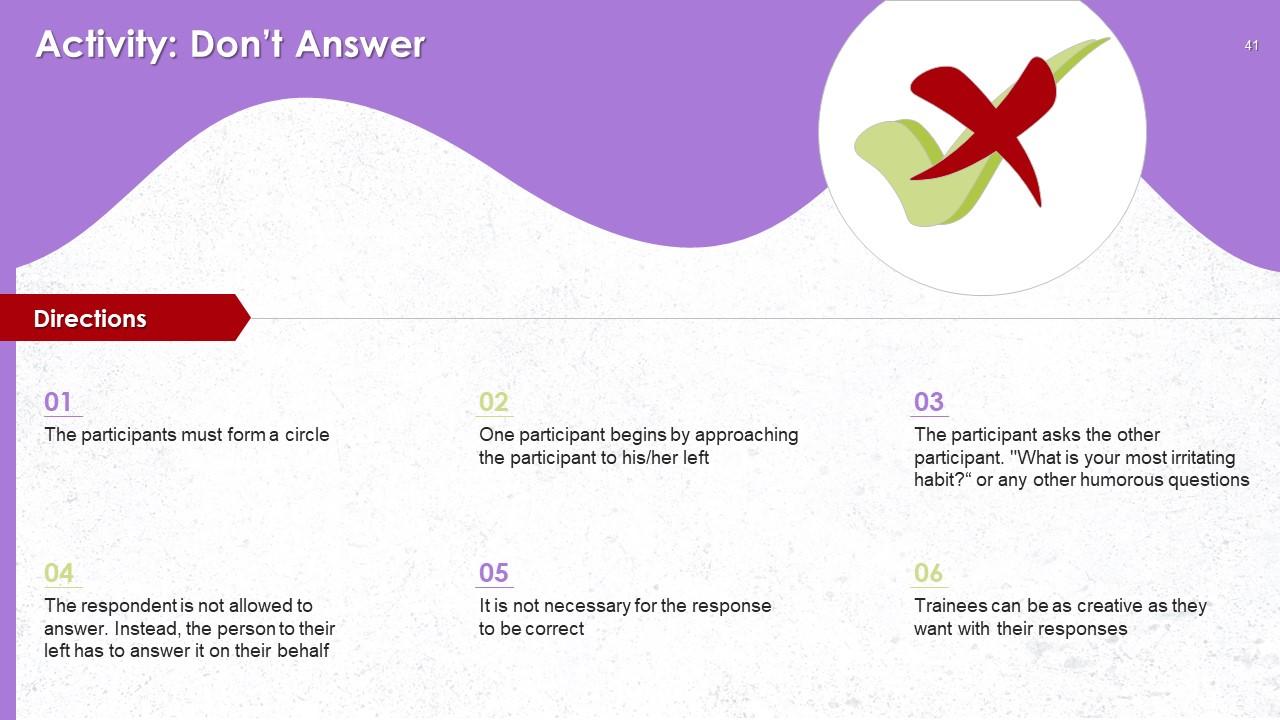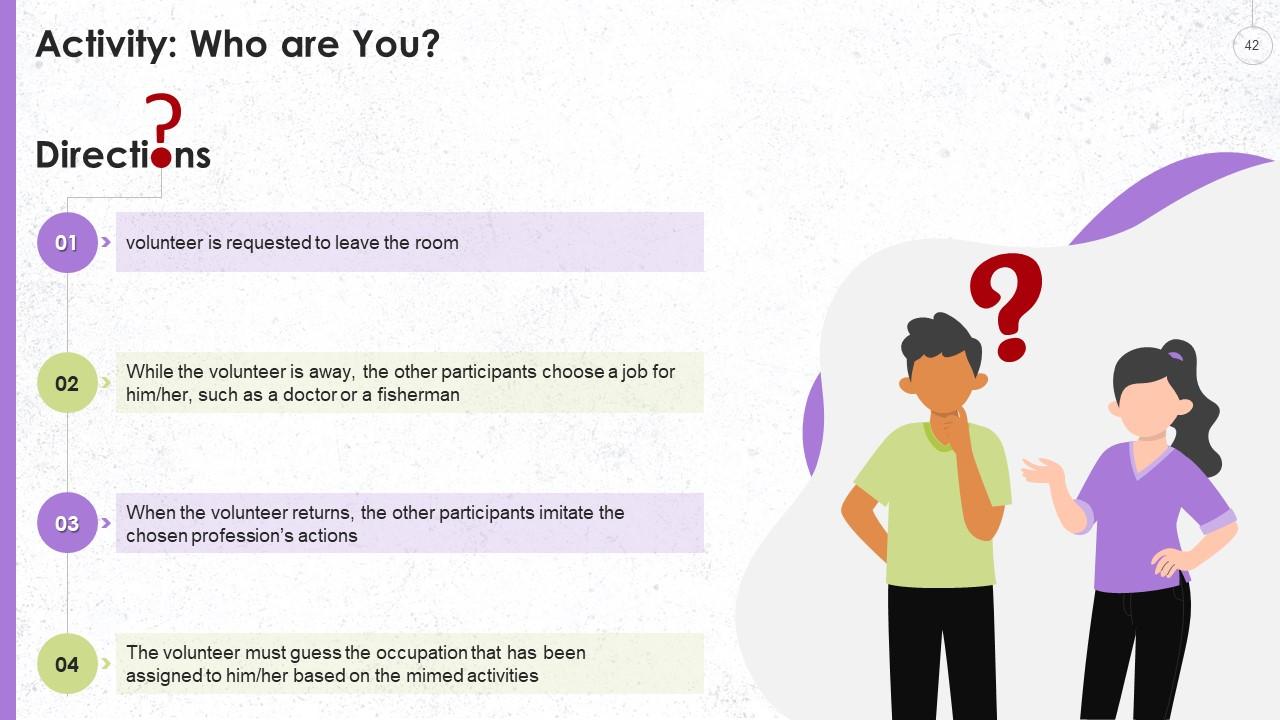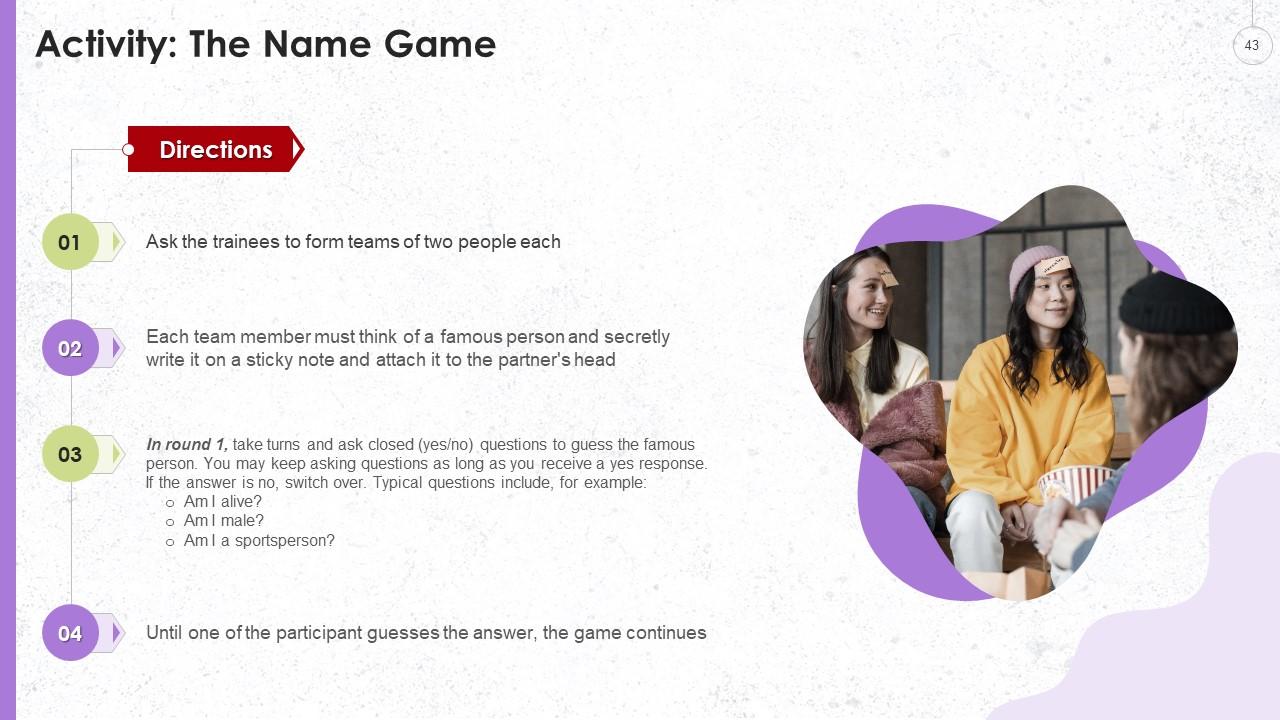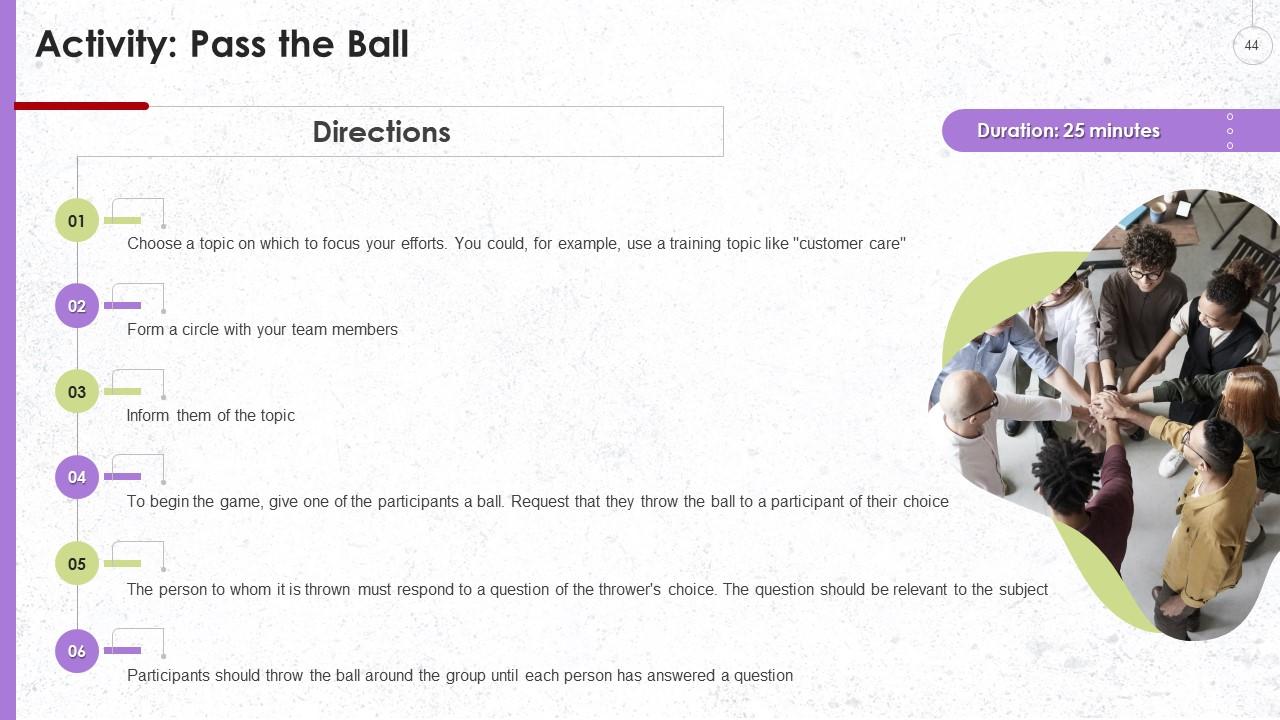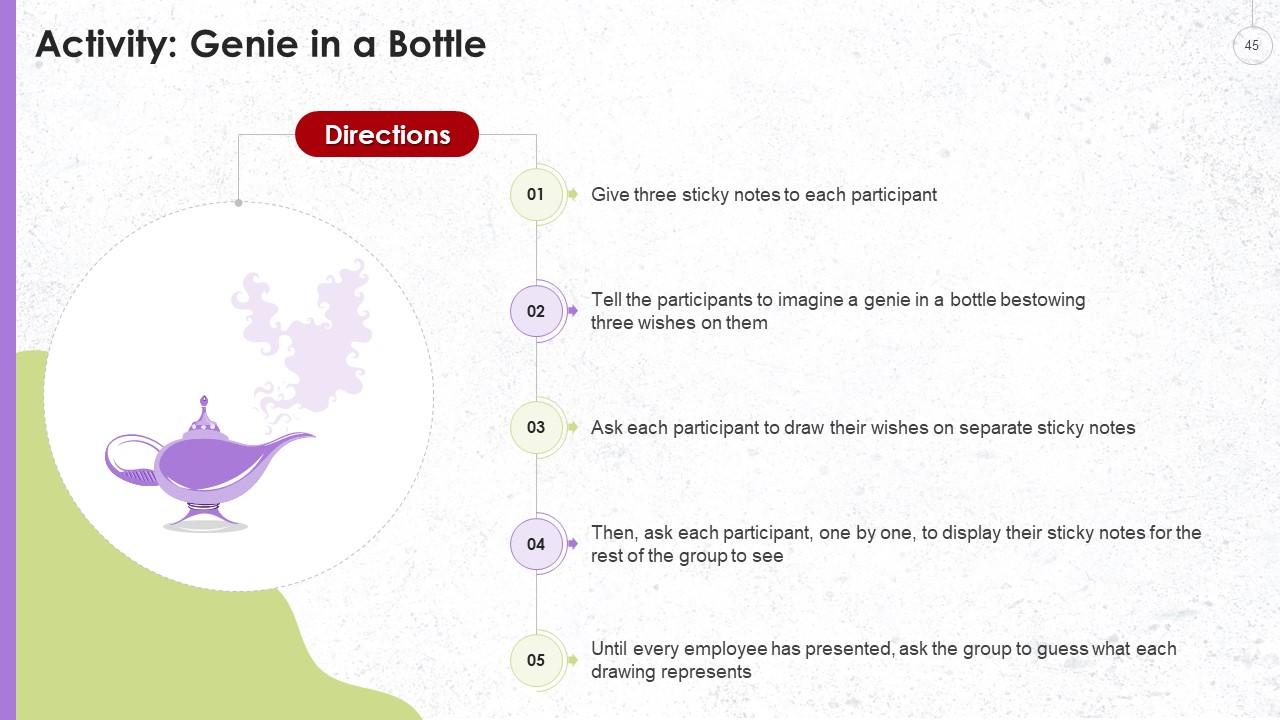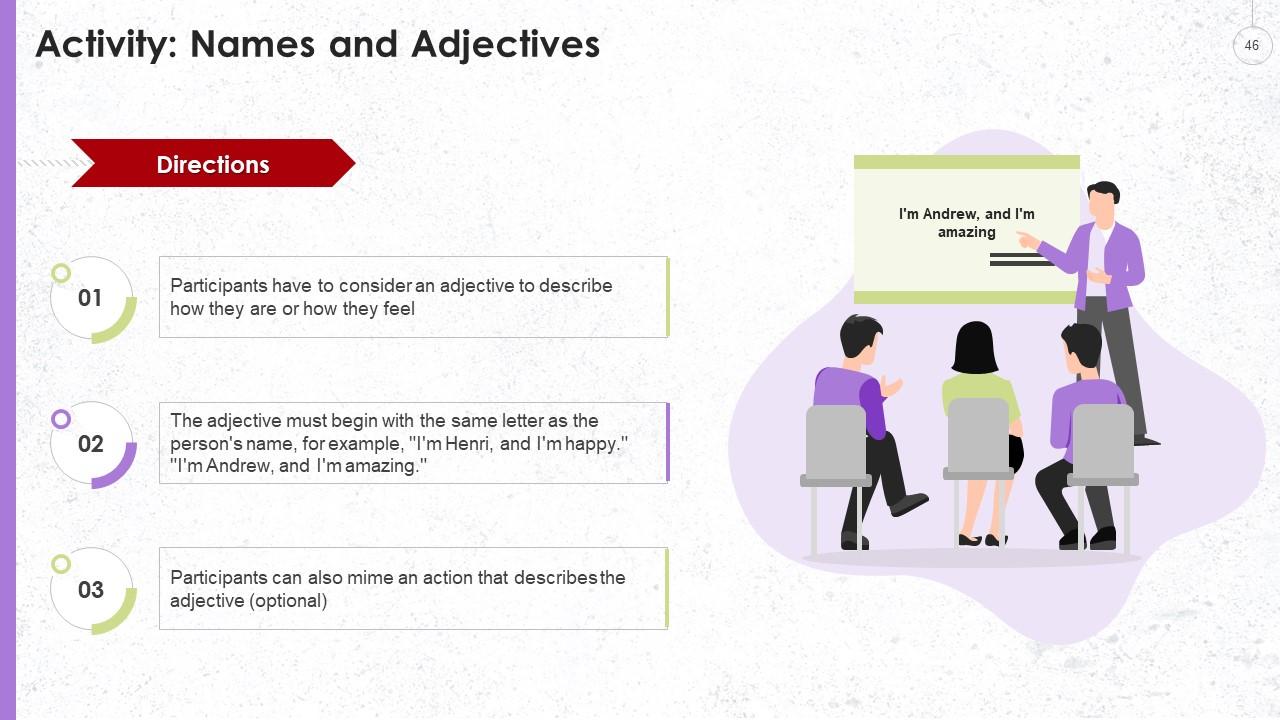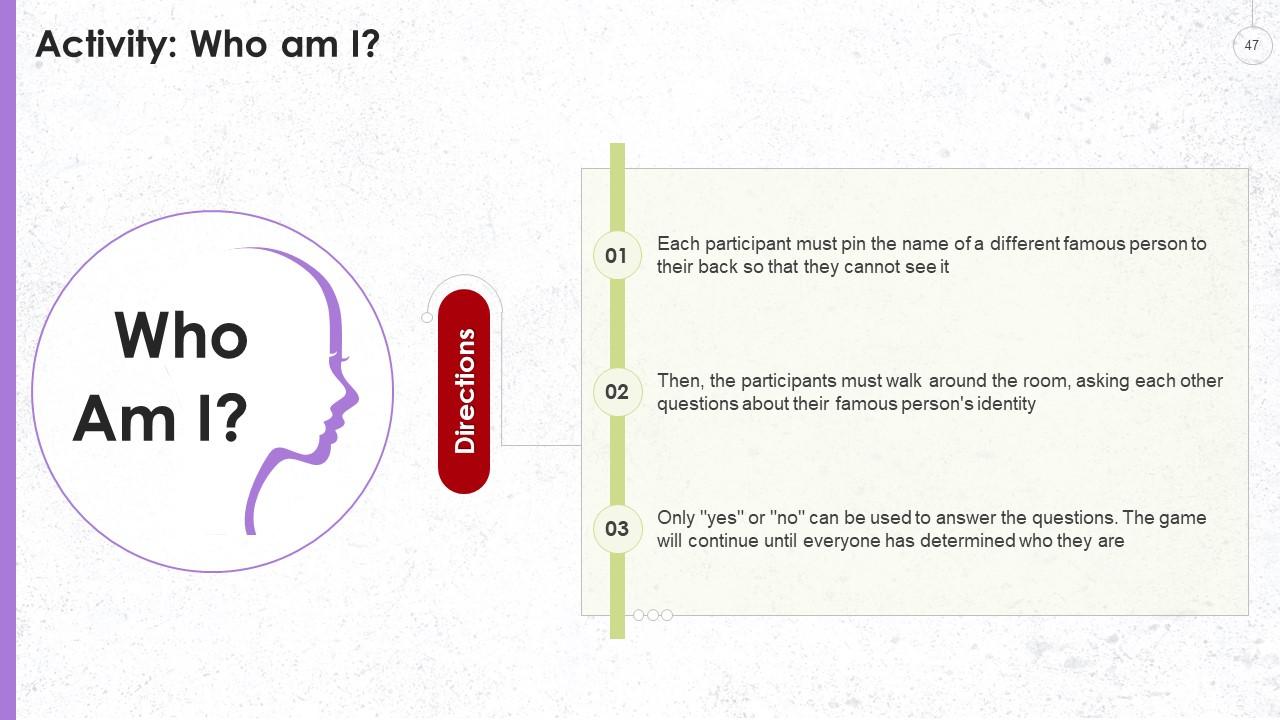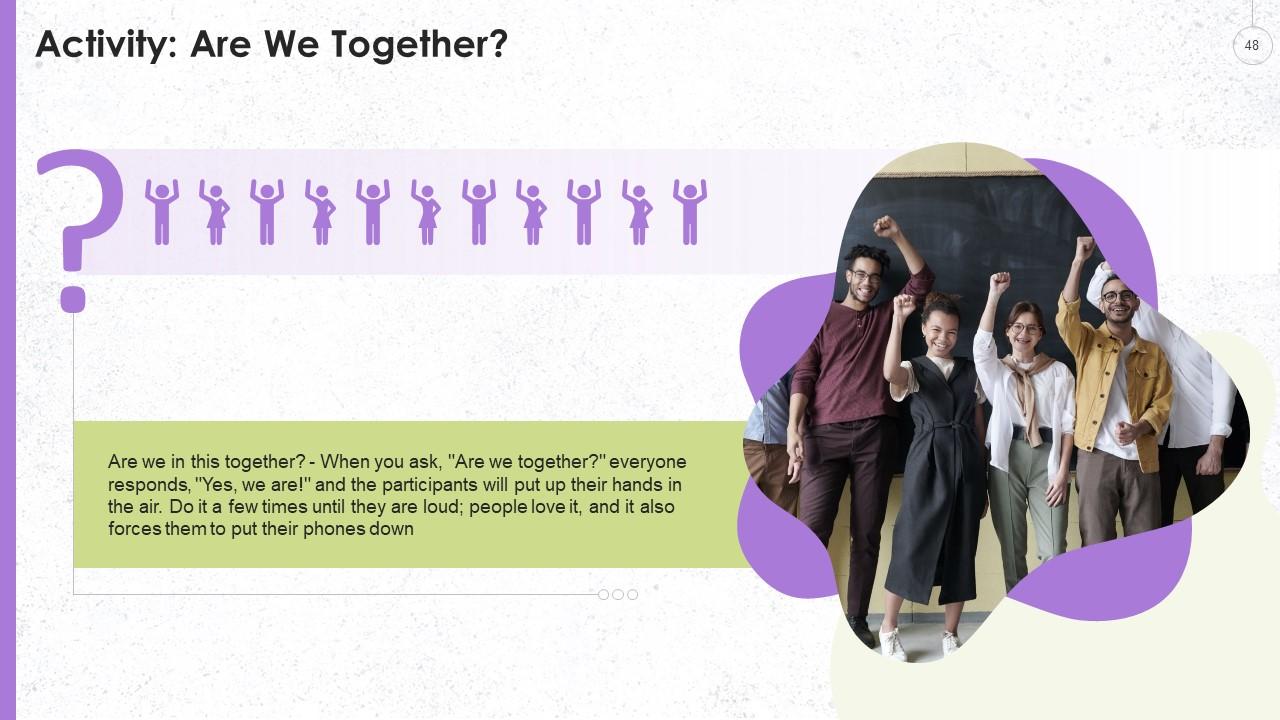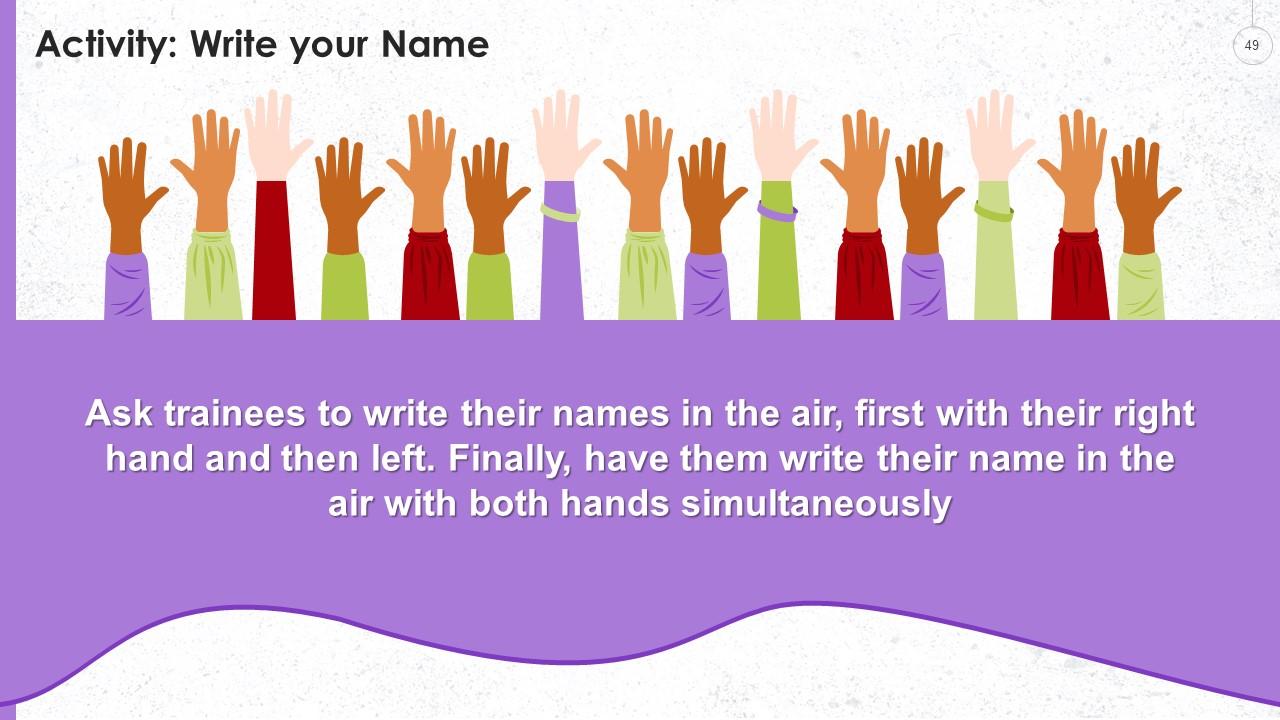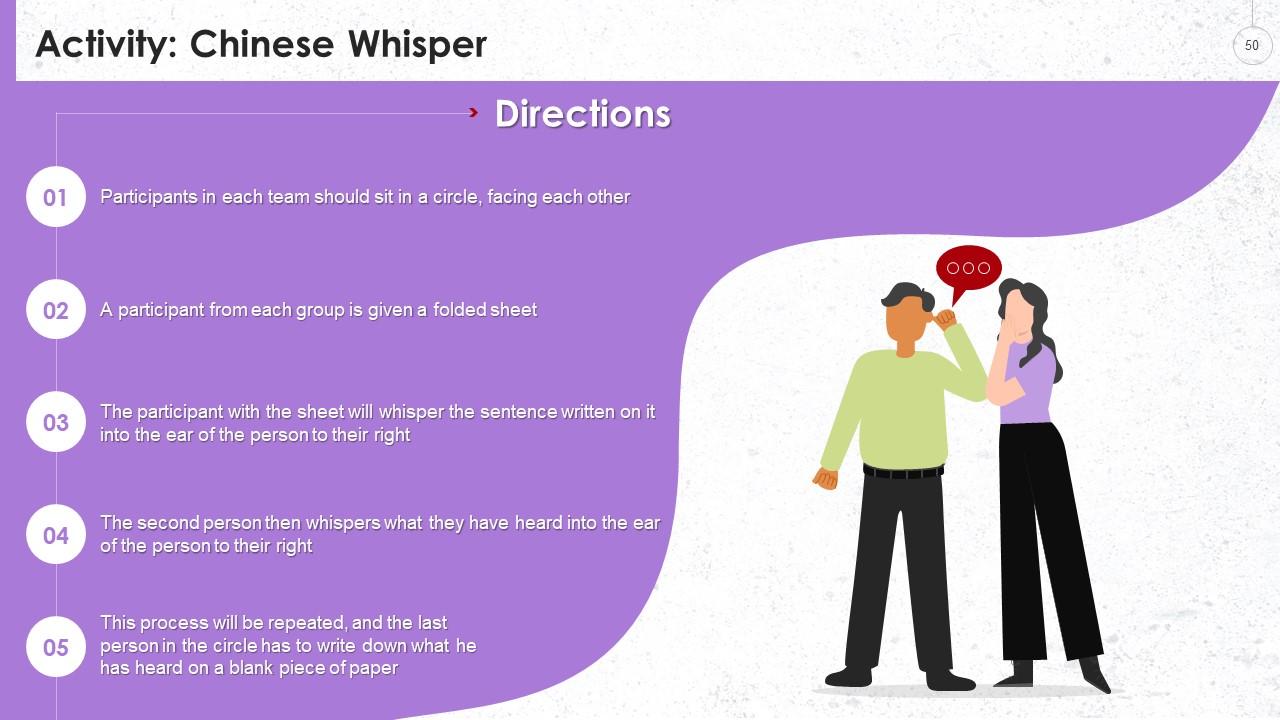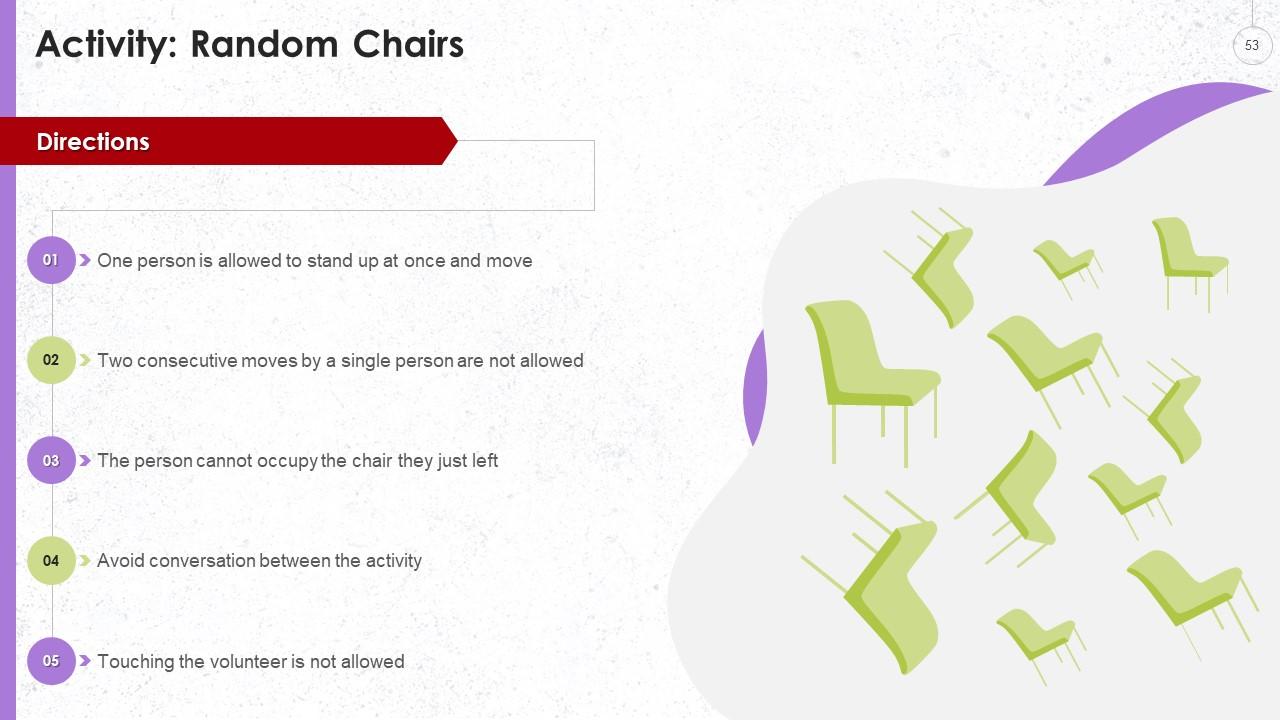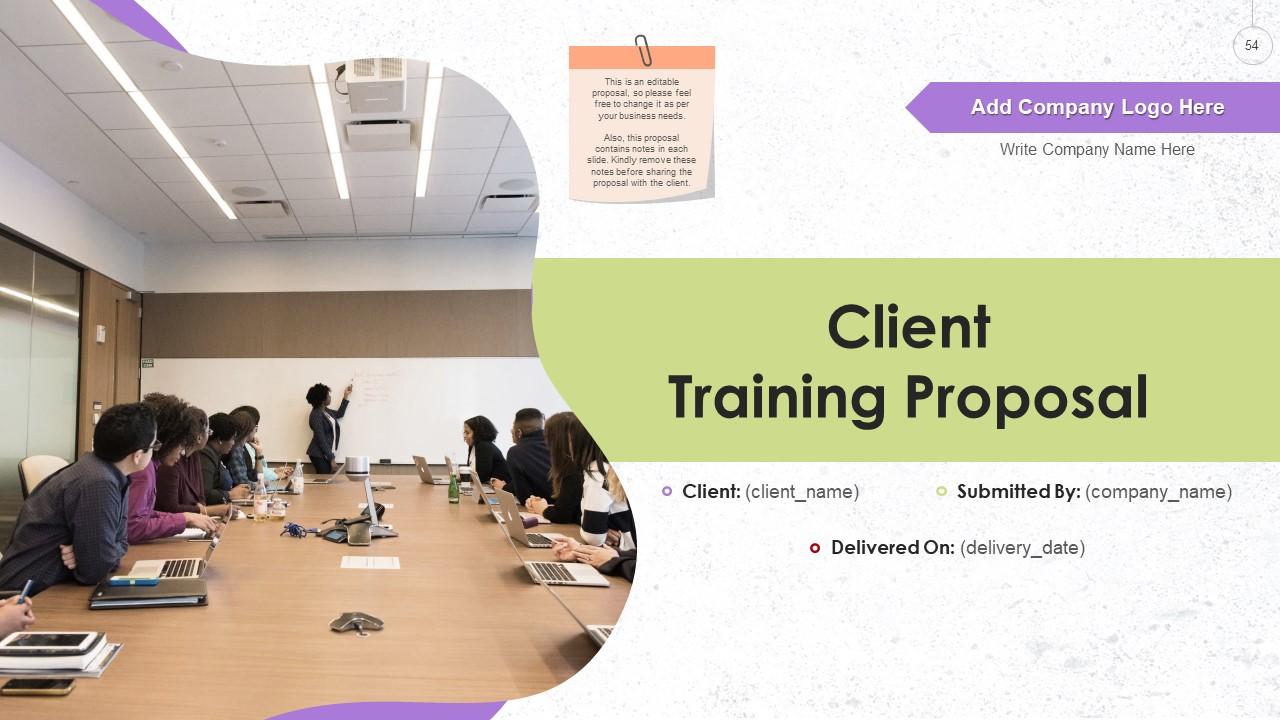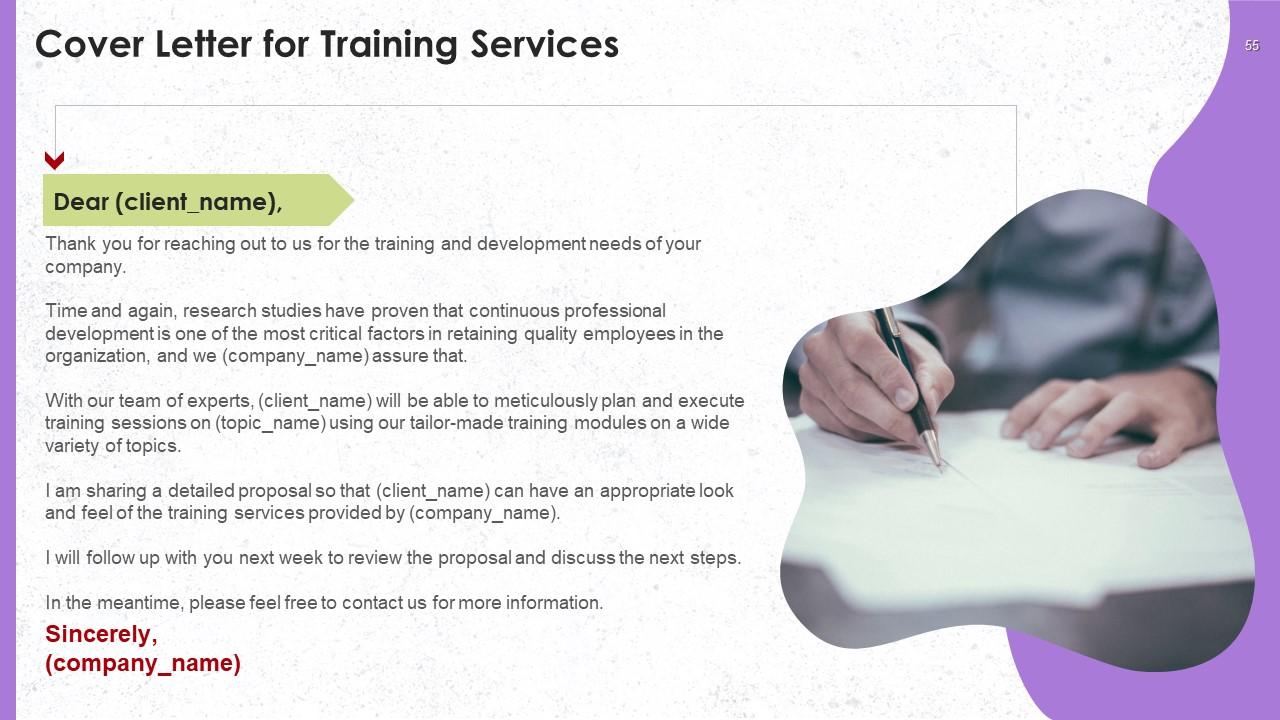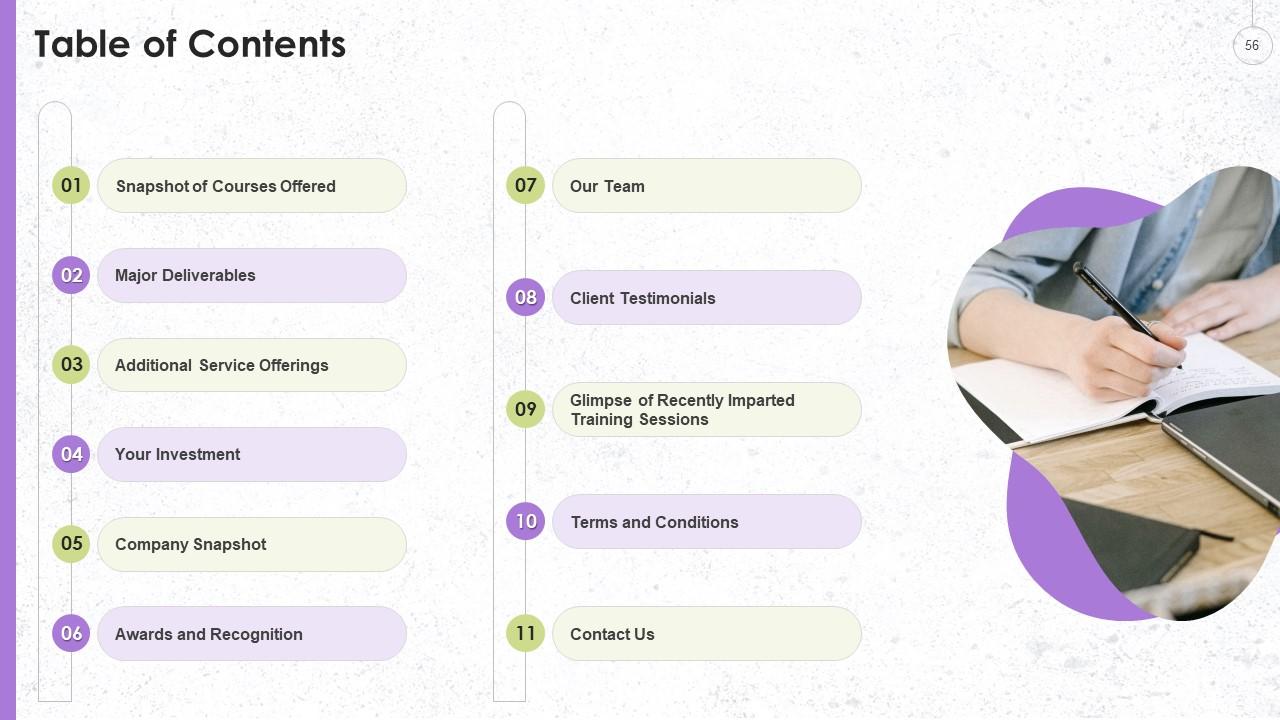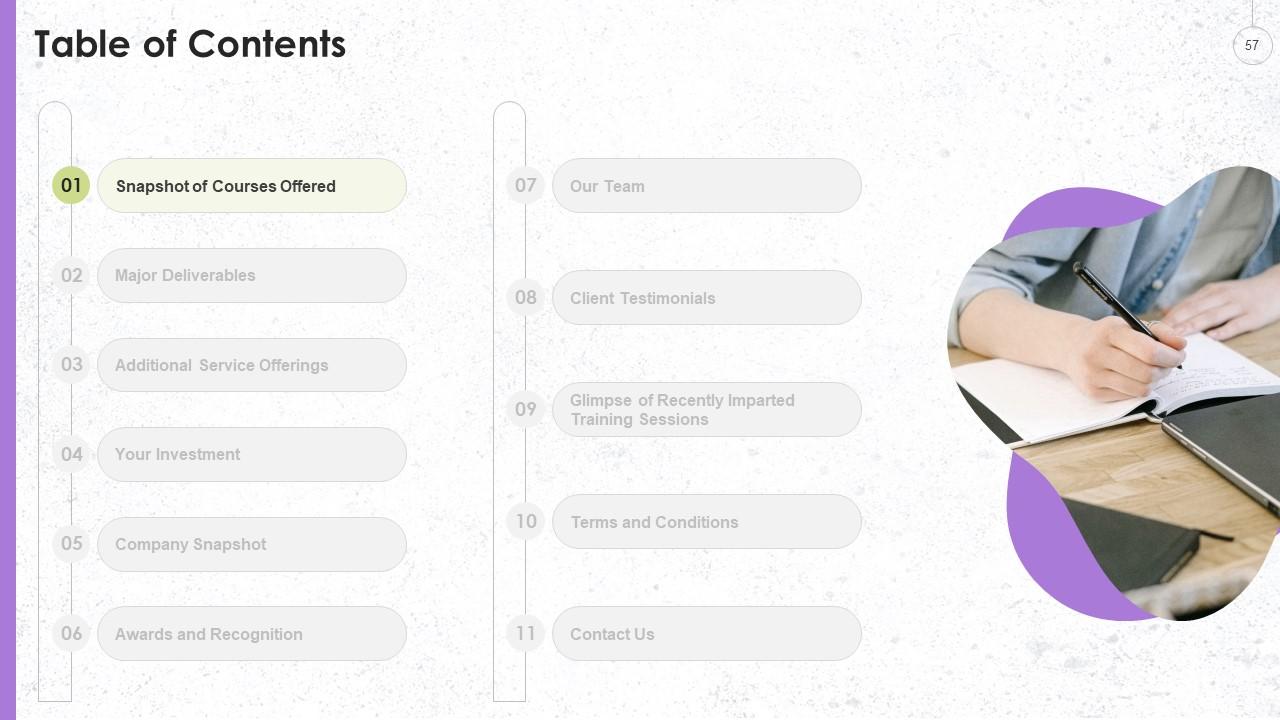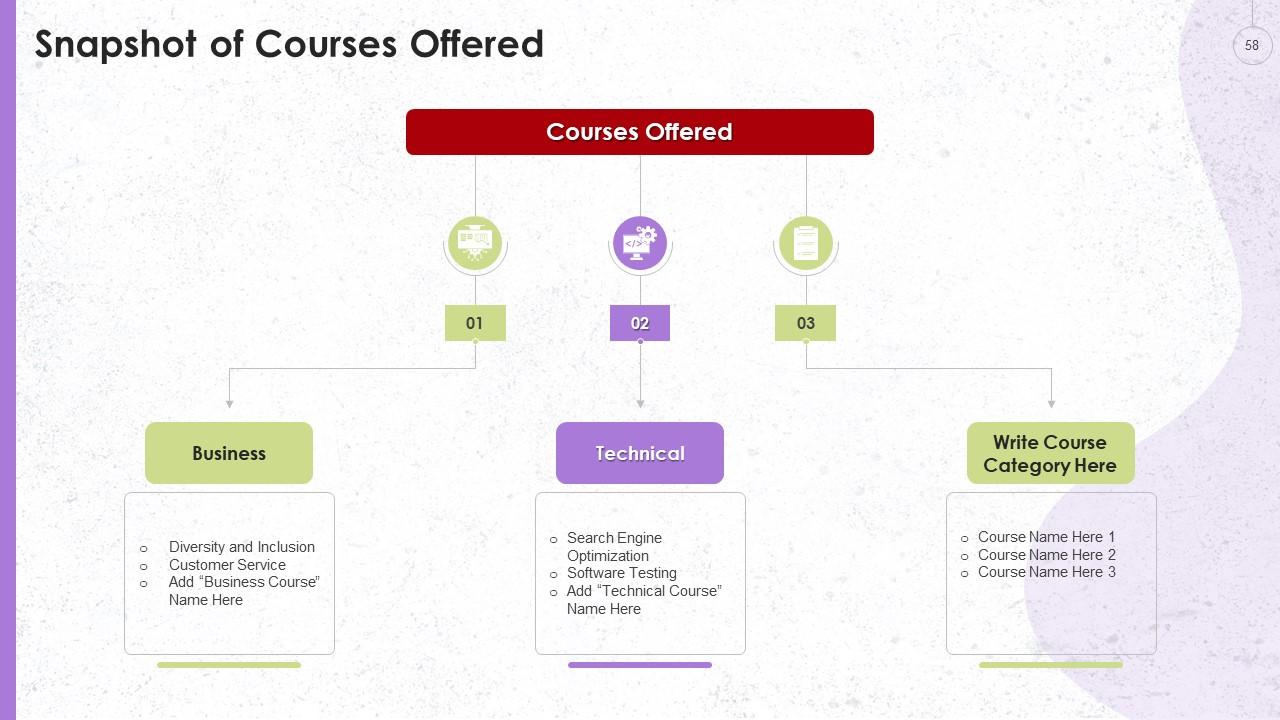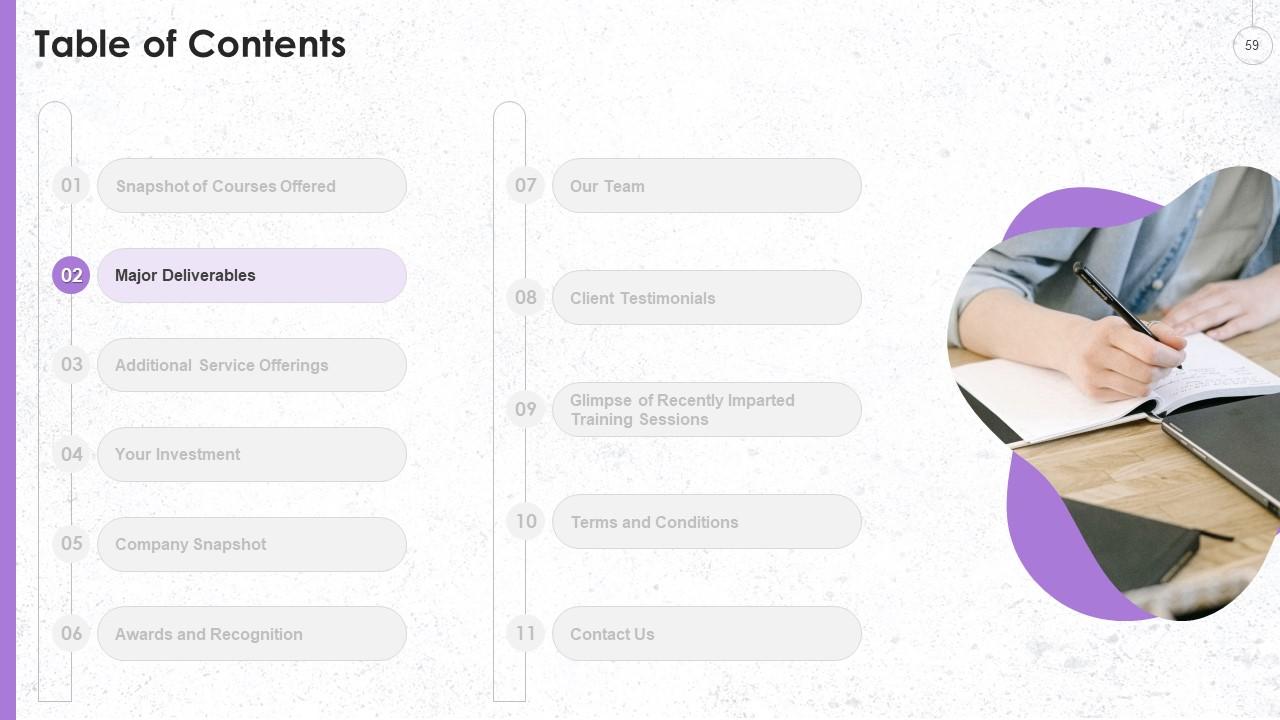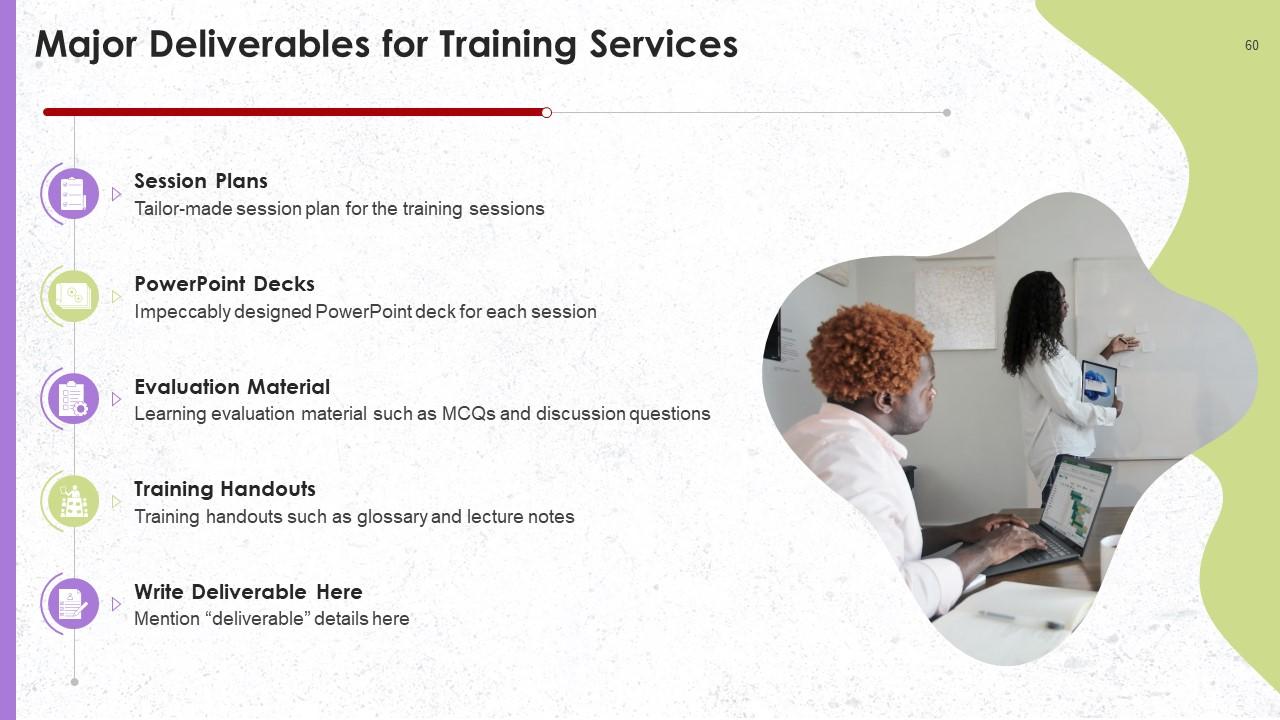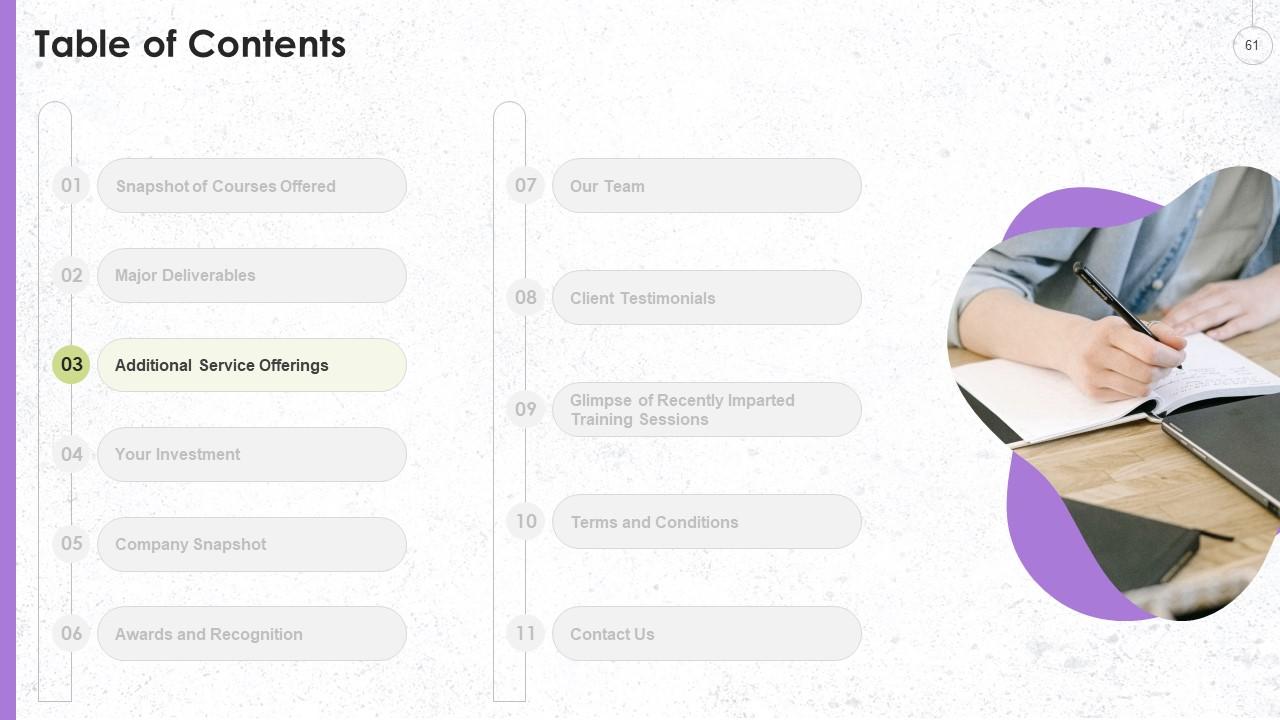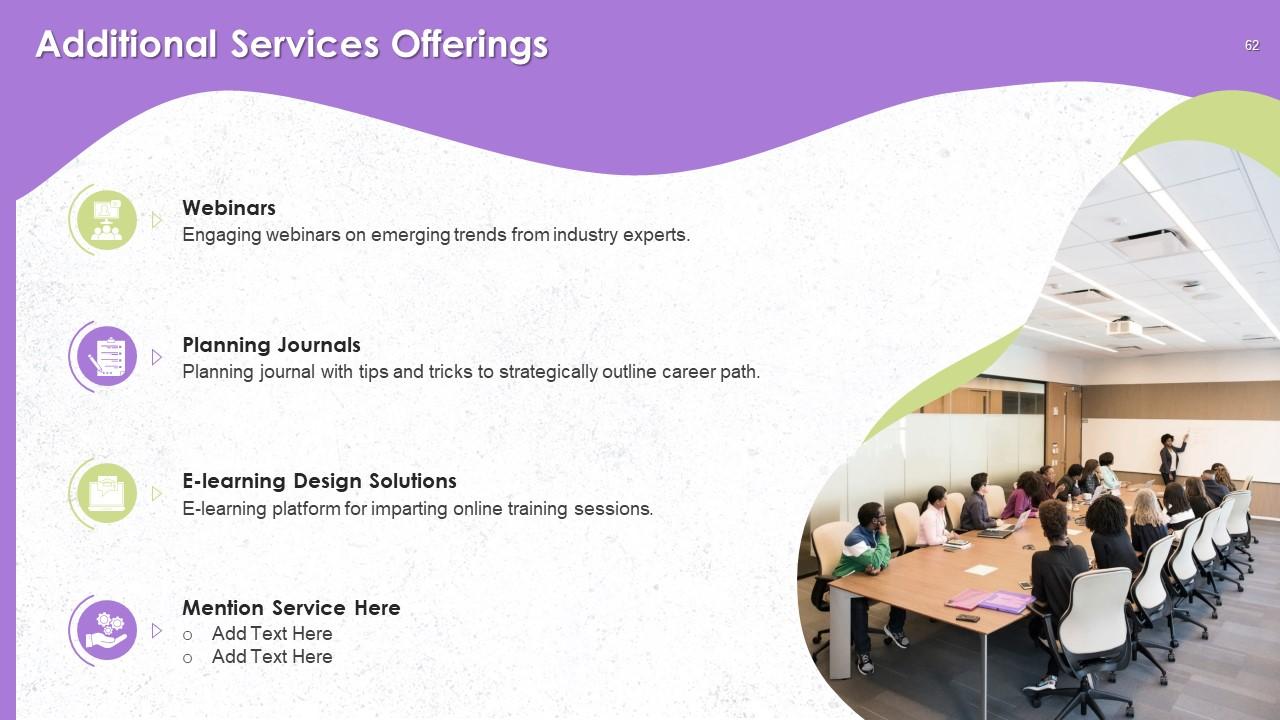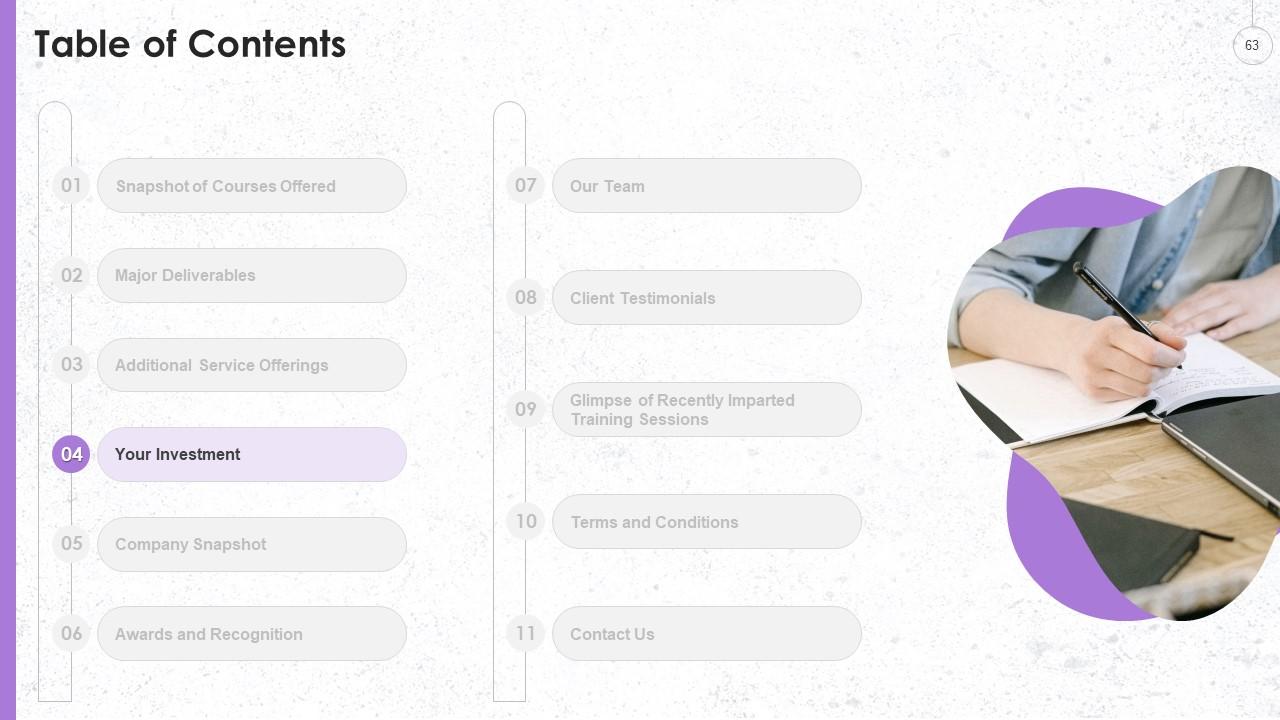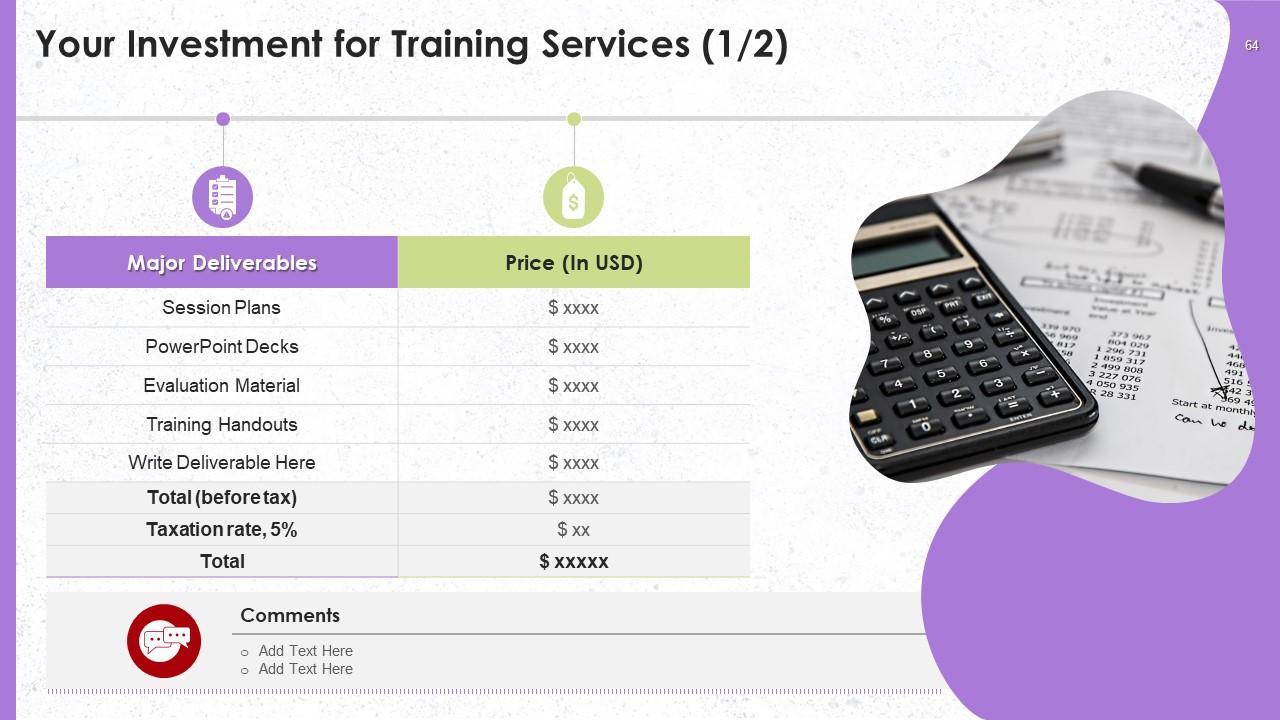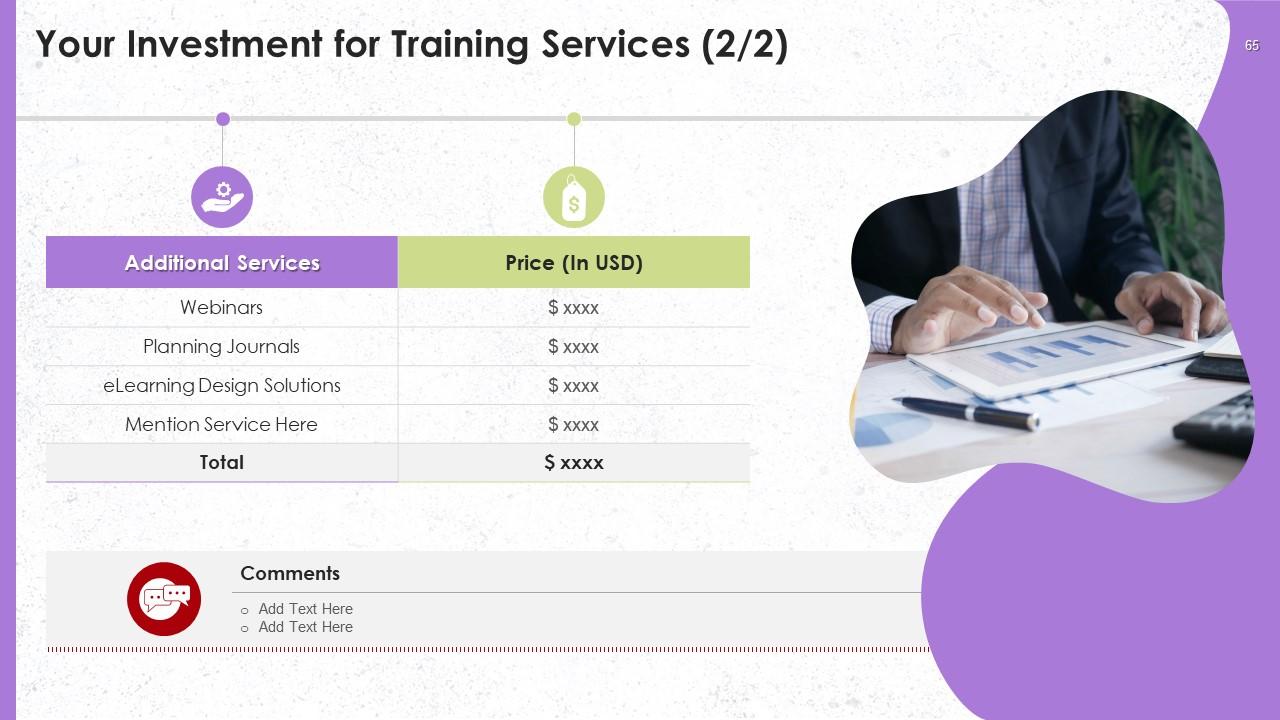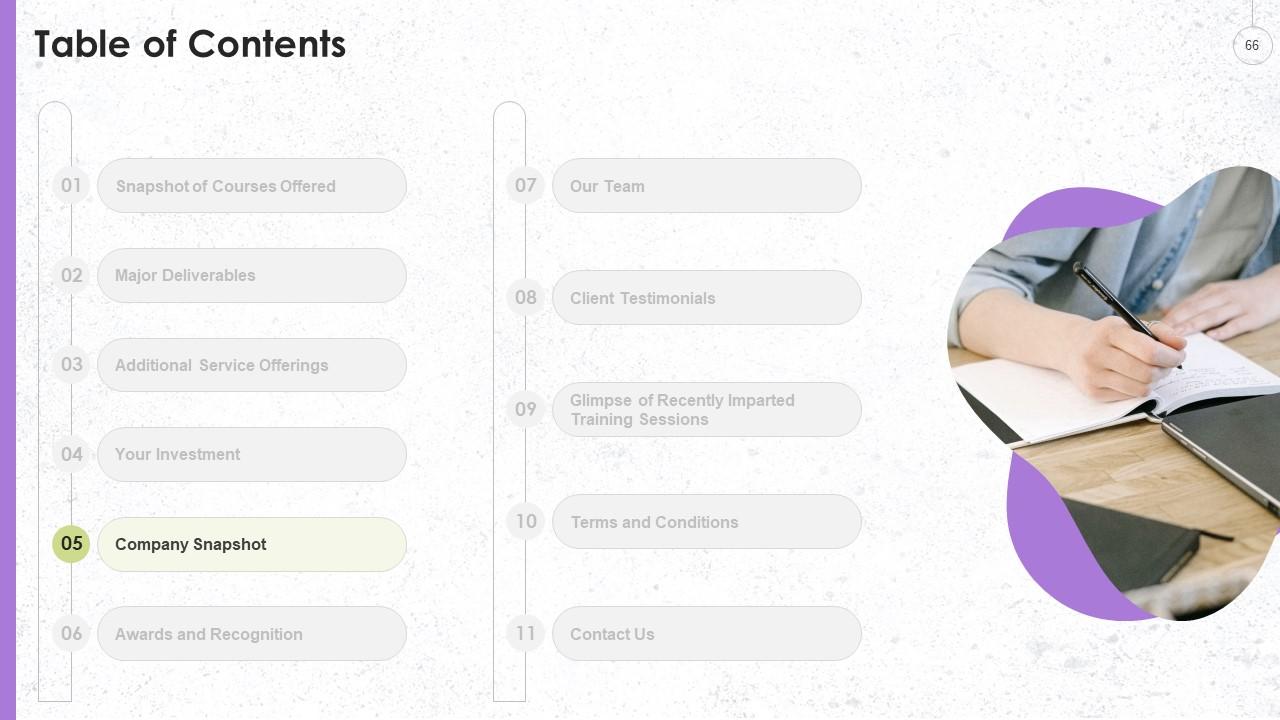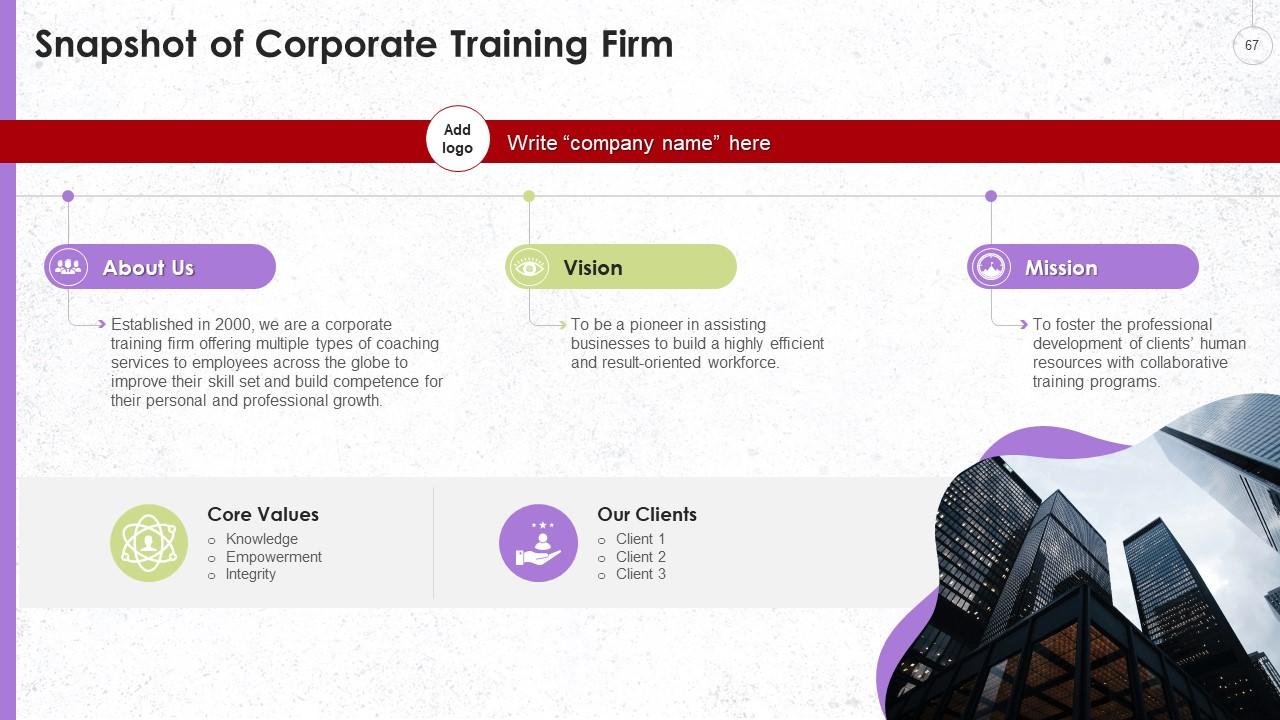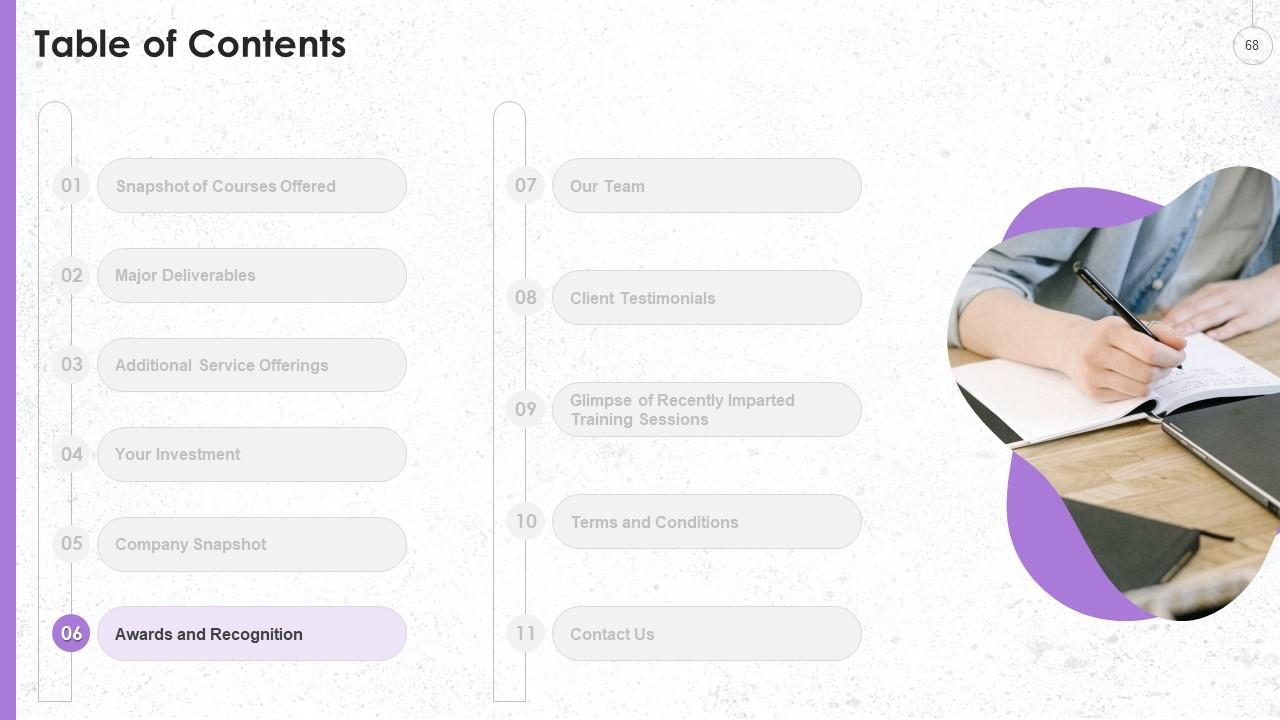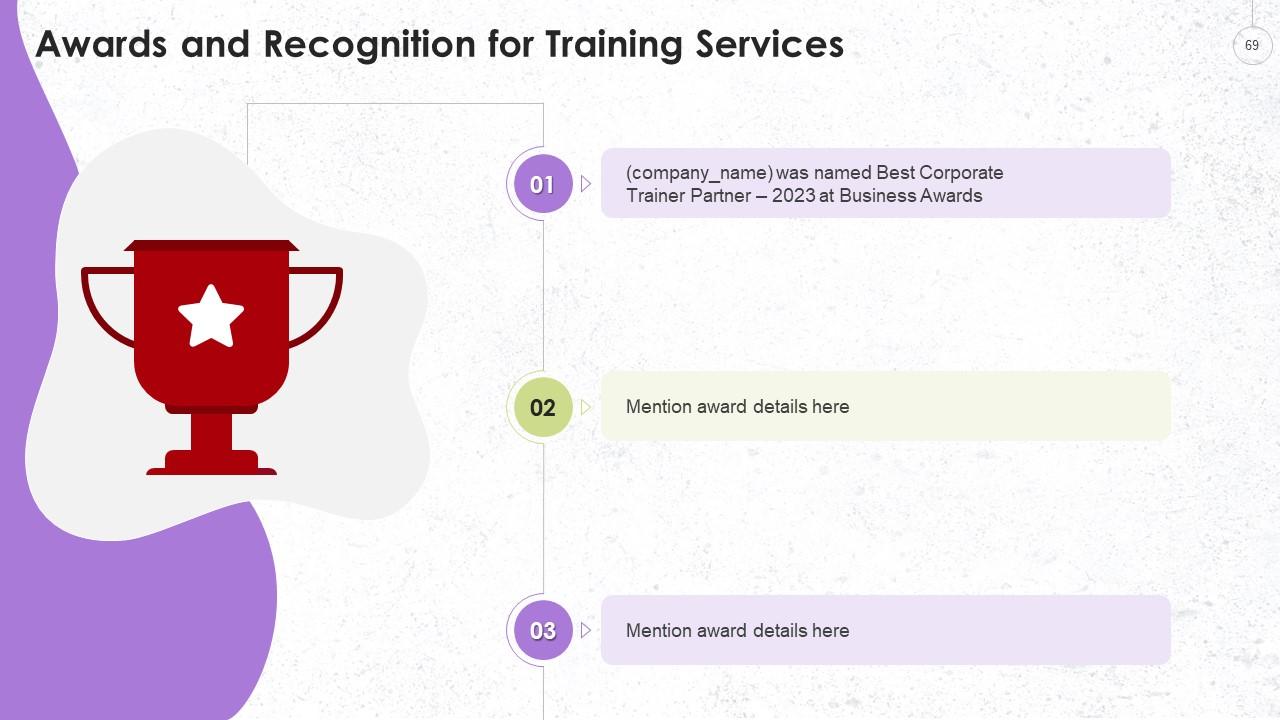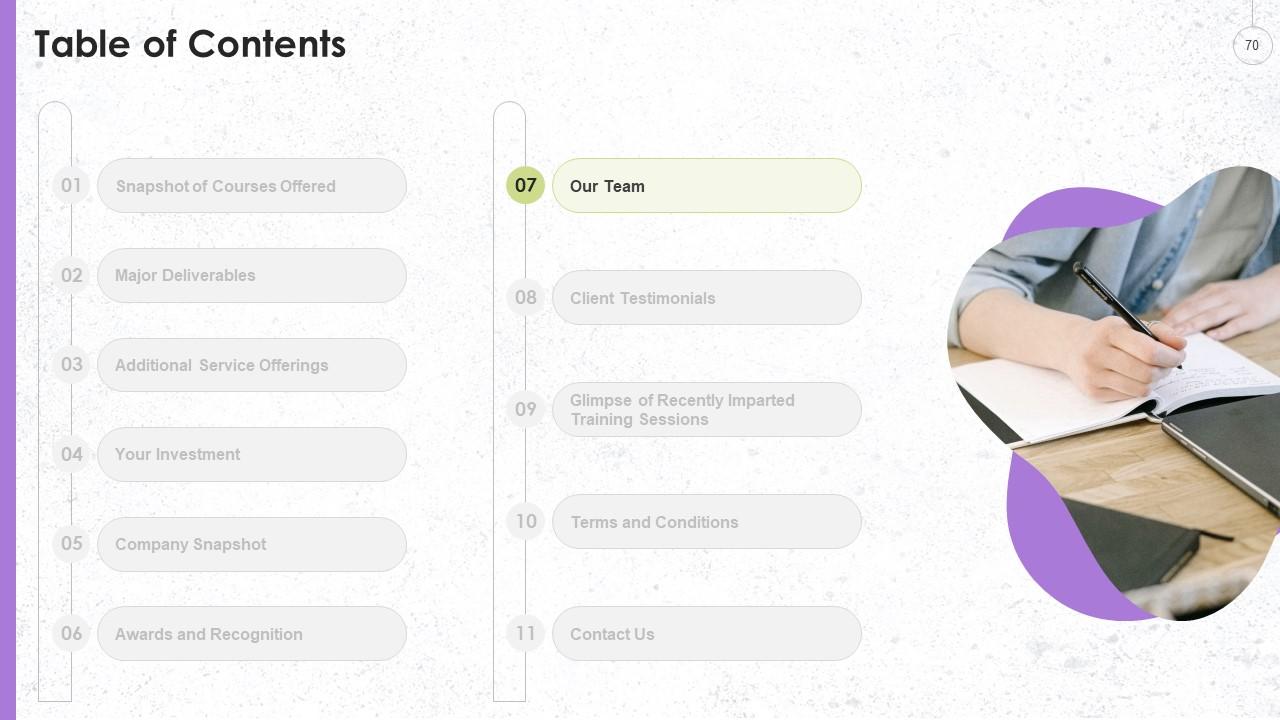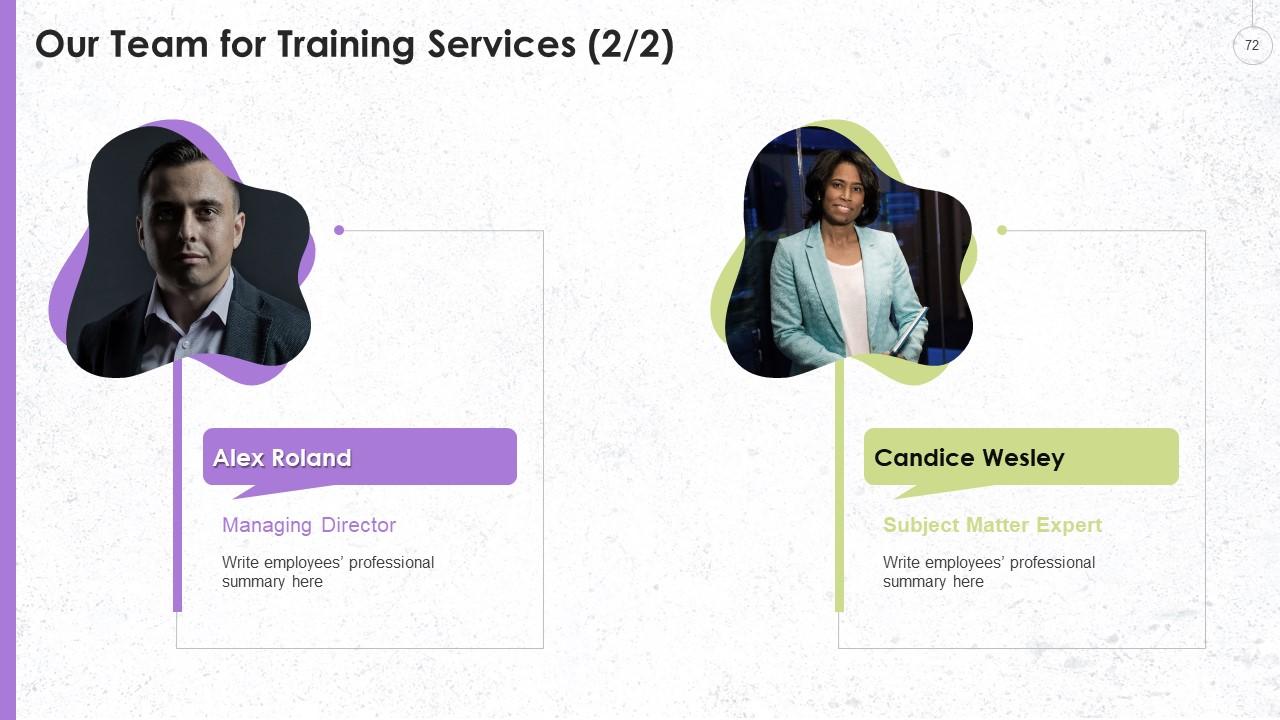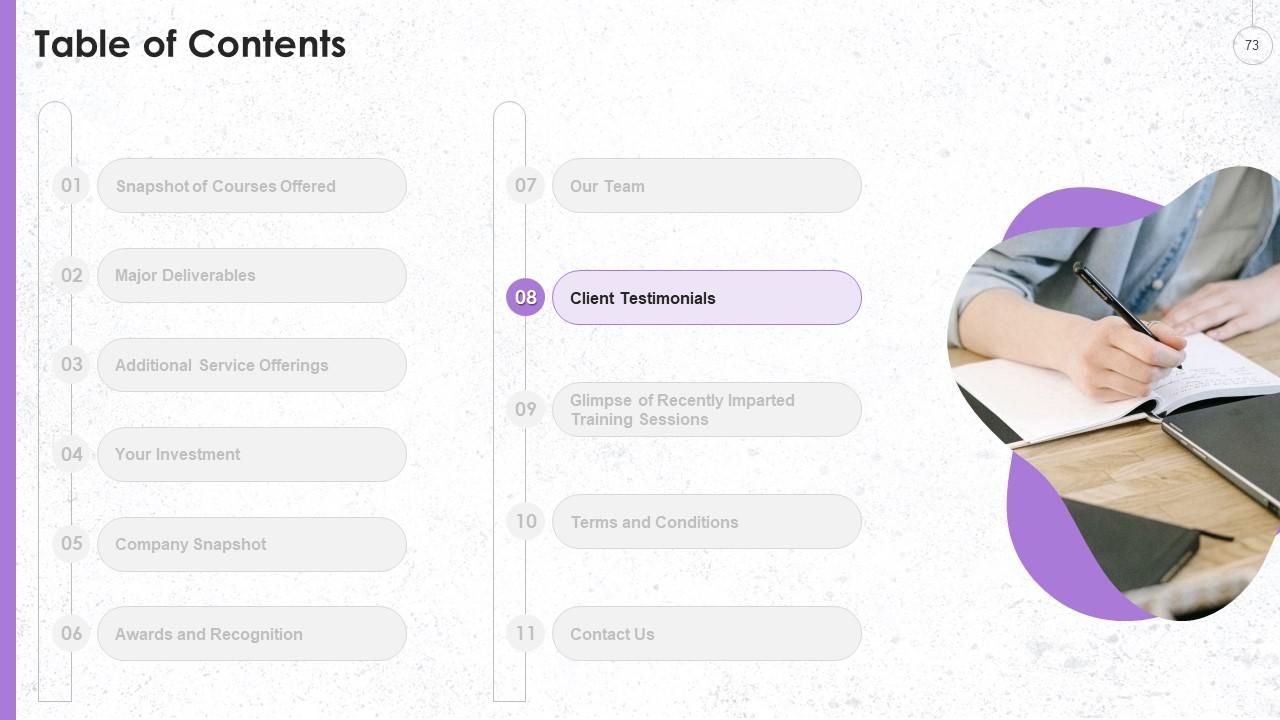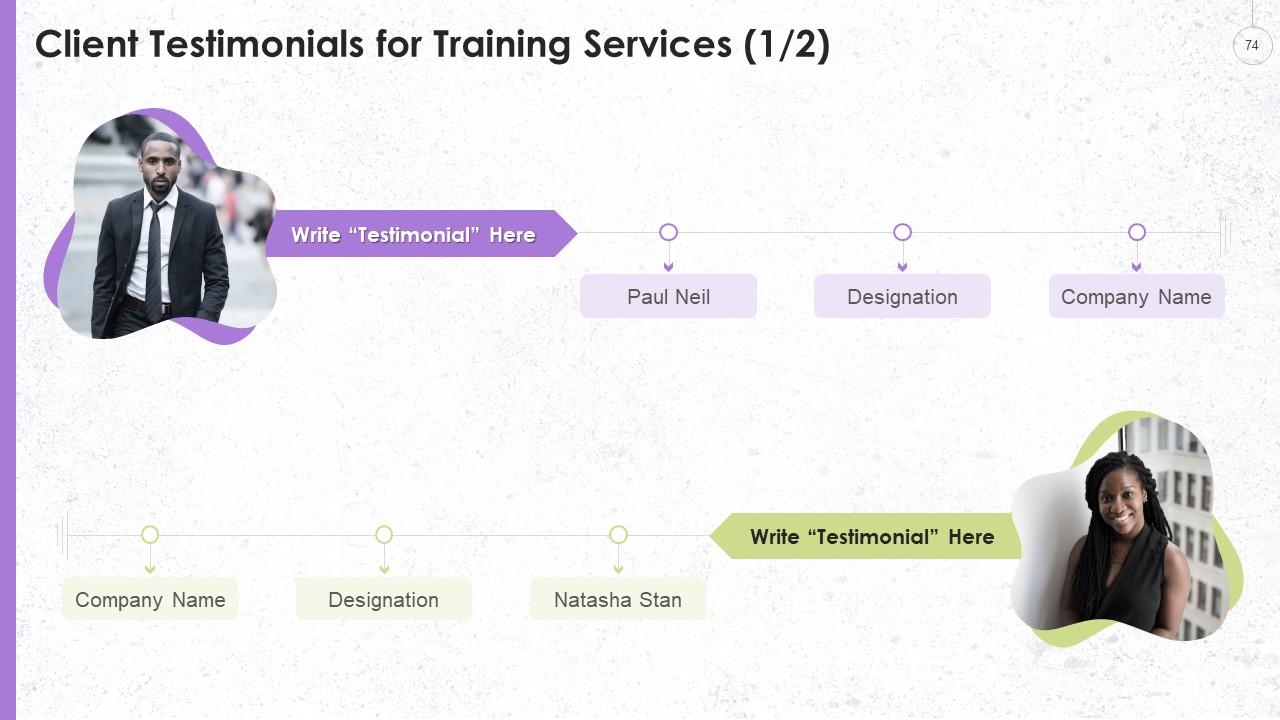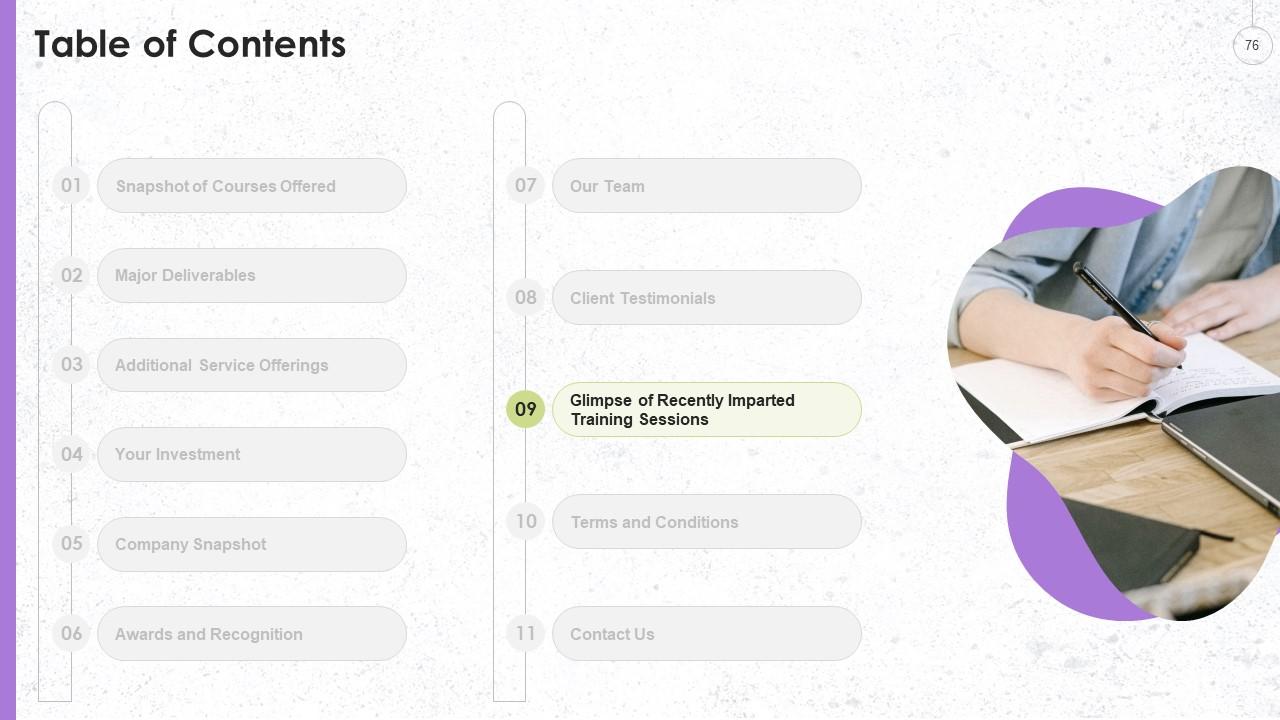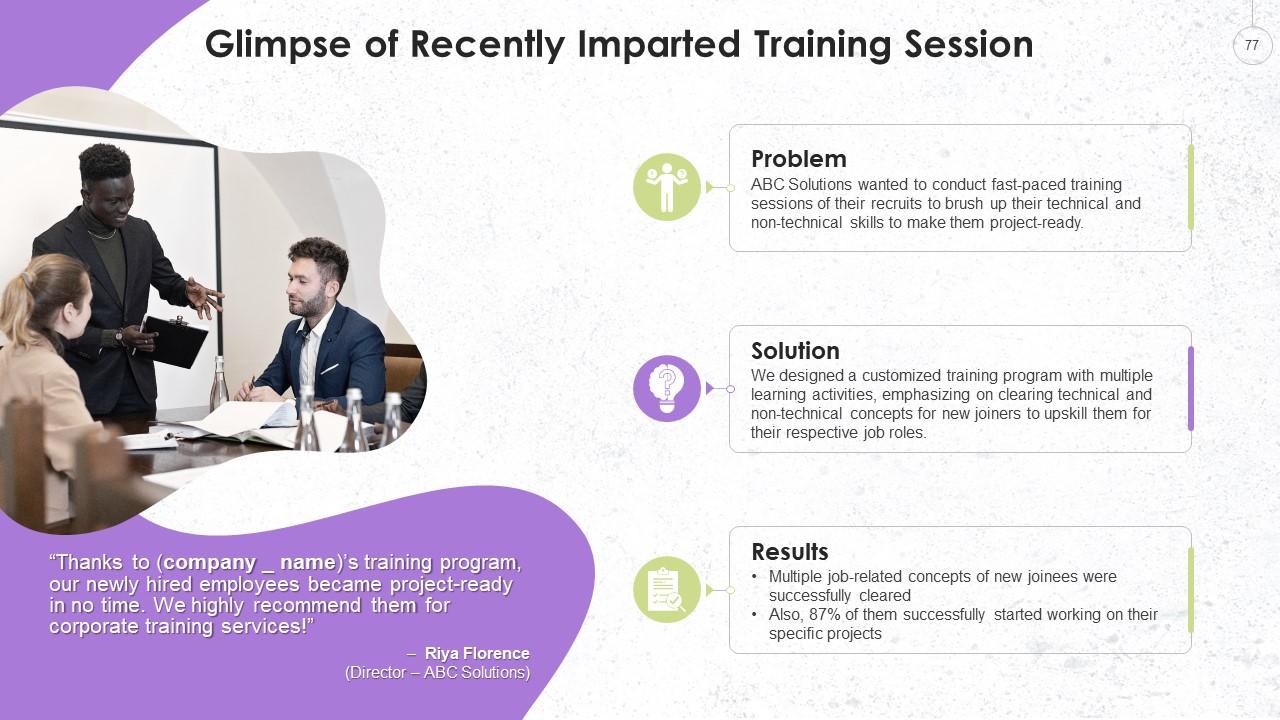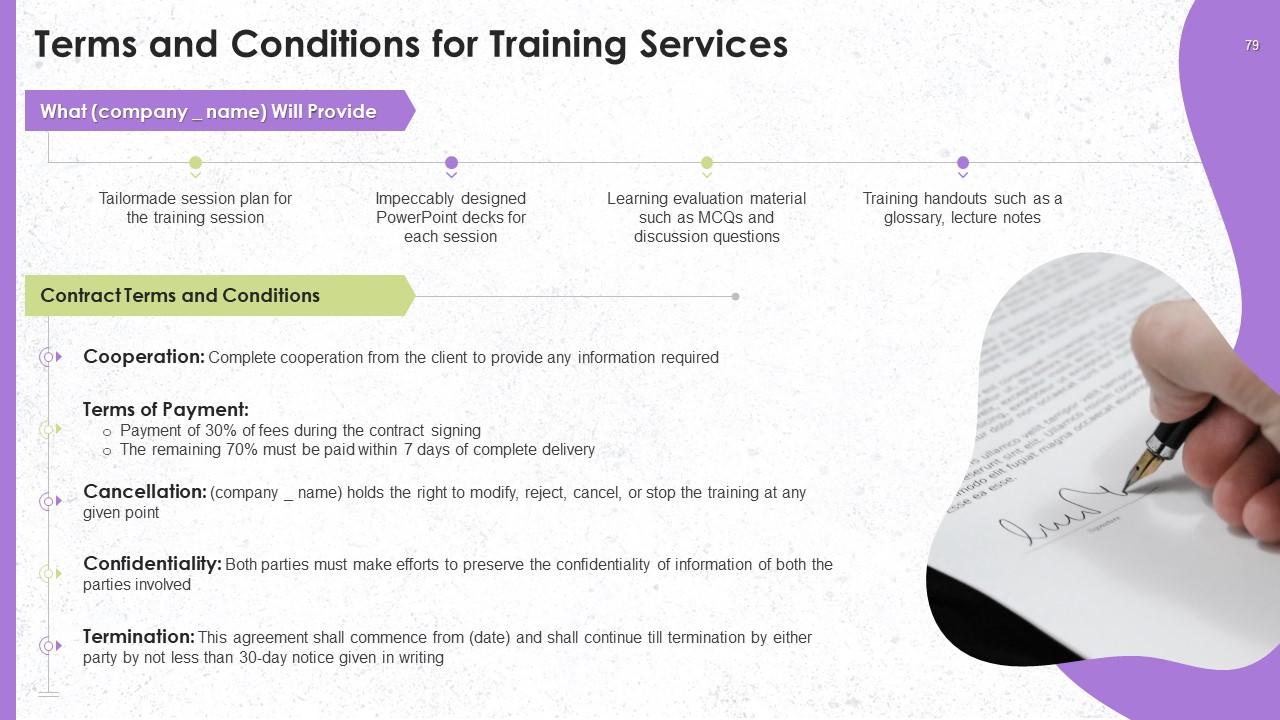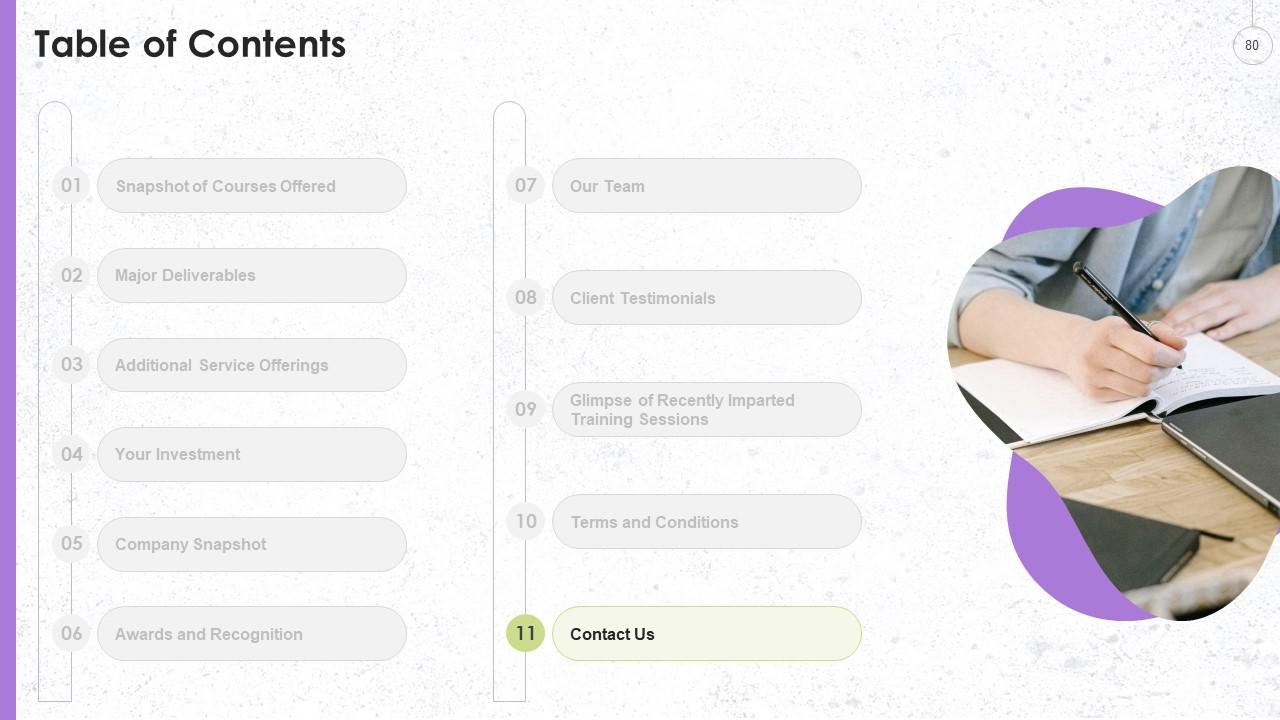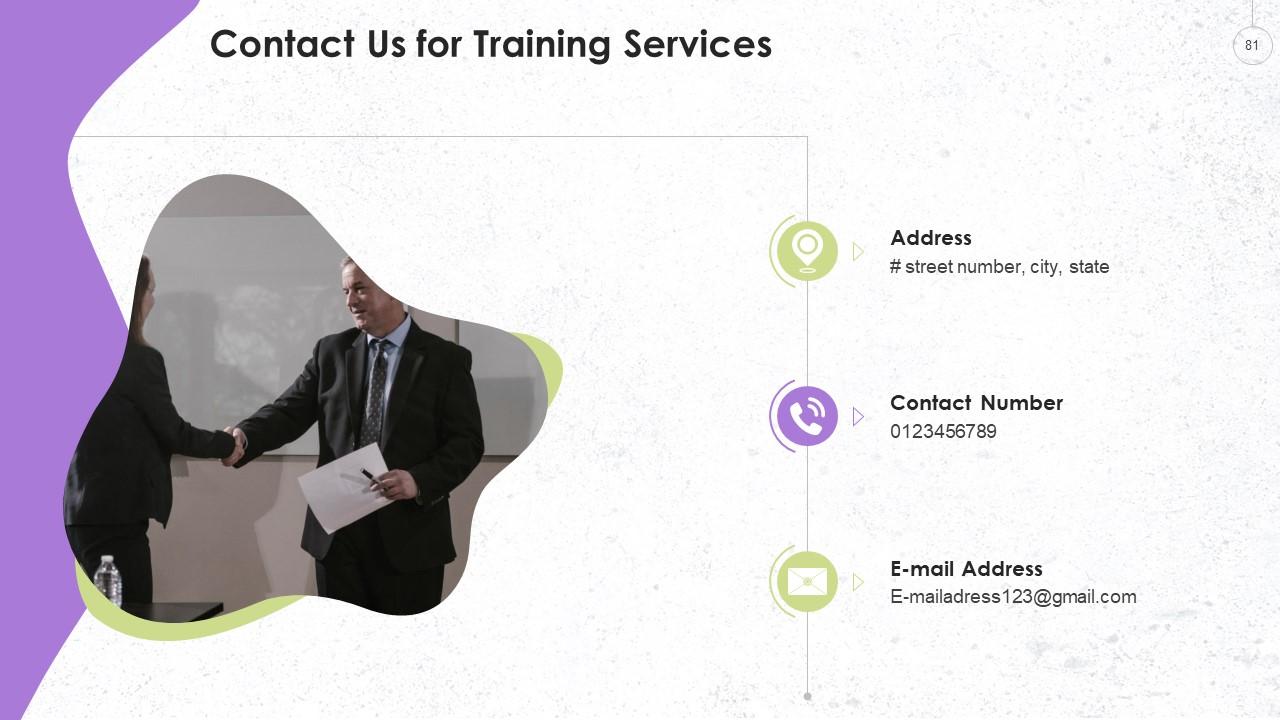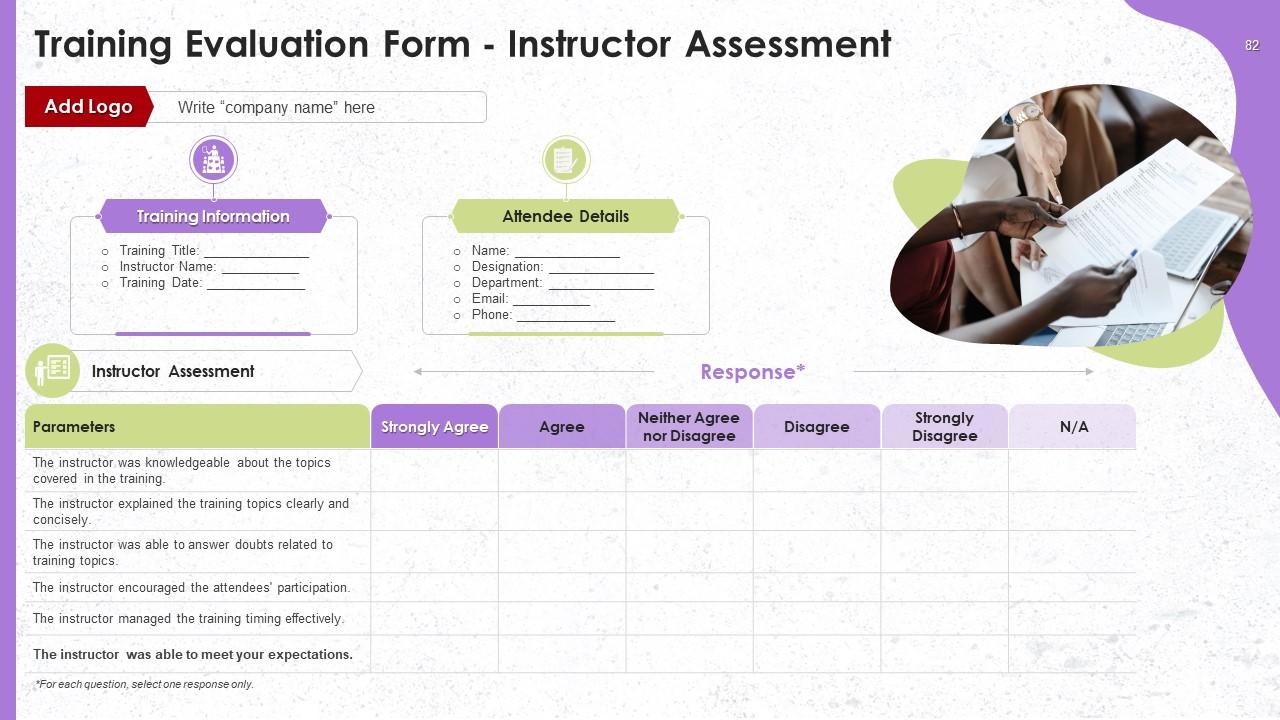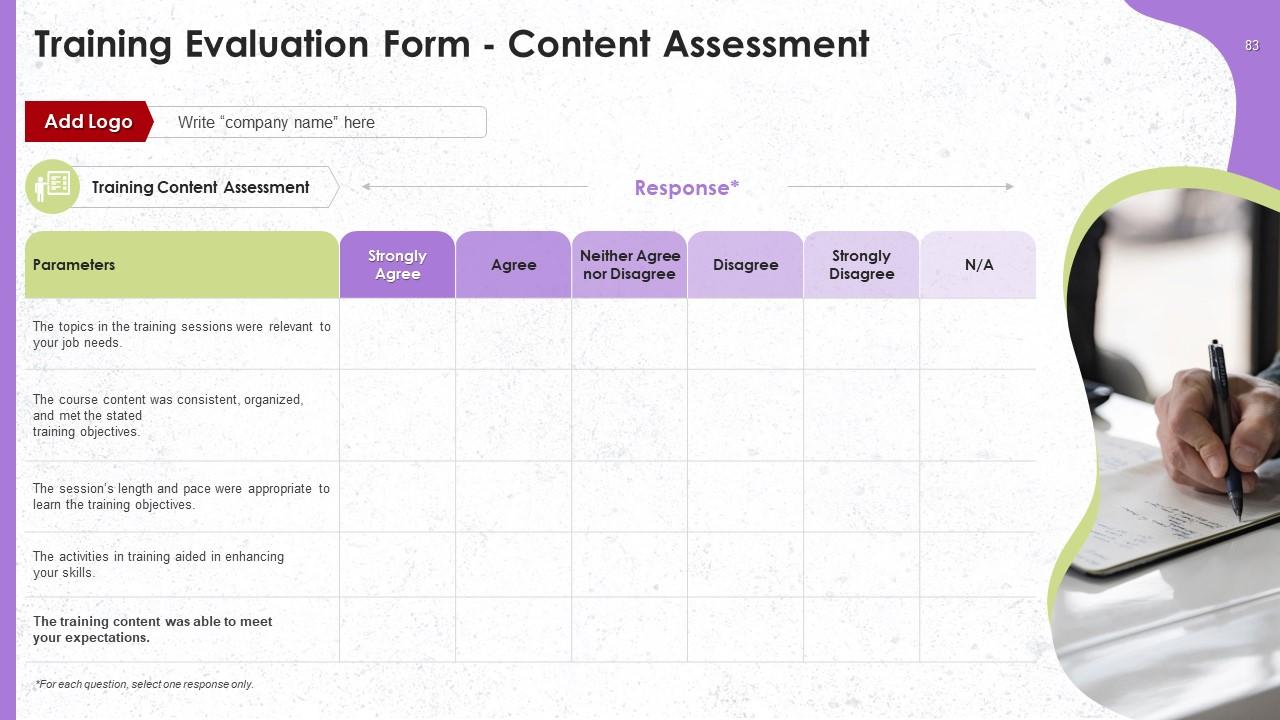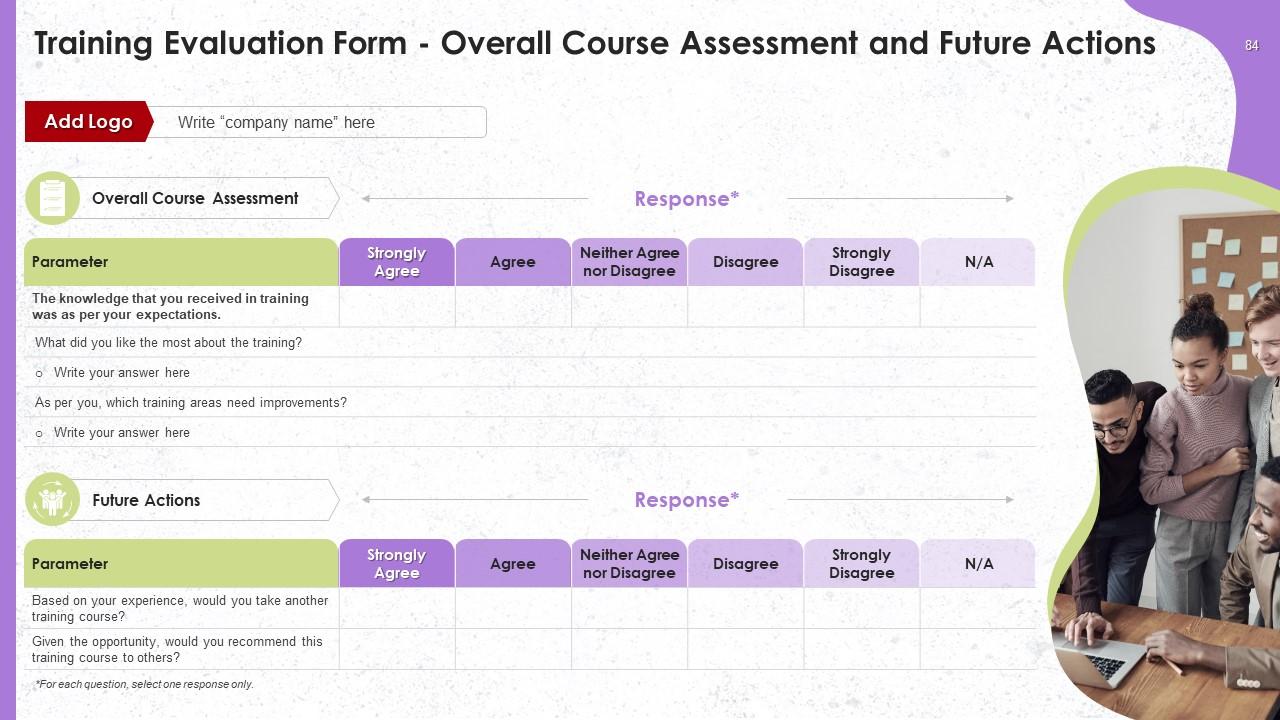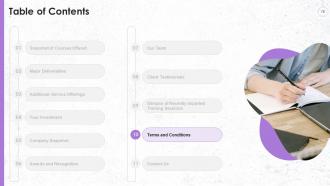Understanding Conflict Management Styles Training Ppt
This training module on Understanding Conflict Management Styles has a self-reflective questionnaire and Thomas-Kilmann Conflict Mode Instruments TKI. In-depth, it also covers the applicability, pros, and cons of multiple conflict management styles, which are Accommodating, Avoiding, Compromising, Competing, and Collaboration. It also has an activity, key takeaways, and discussion questions related to the topic. The deck has PPT slides on about us, vision, mission, goal, 30-60-90 days plan, timeline, roadmap, and training completion certificate. It has energizer activities to make the coaching session more interactive. It also includes a client proposal and assessment form for training evaluation.
This training module on Understanding Conflict Management Styles has a self-reflective questionnaire and Thomas-Kilmann Con..
- Google Slides is a new FREE Presentation software from Google.
- All our content is 100% compatible with Google Slides.
- Just download our designs, and upload them to Google Slides and they will work automatically.
- Amaze your audience with SlideTeam and Google Slides.
-
Want Changes to This PPT Slide? Check out our Presentation Design Services
- WideScreen Aspect ratio is becoming a very popular format. When you download this product, the downloaded ZIP will contain this product in both standard and widescreen format.
-

- Some older products that we have may only be in standard format, but they can easily be converted to widescreen.
- To do this, please open the SlideTeam product in Powerpoint, and go to
- Design ( On the top bar) -> Page Setup -> and select "On-screen Show (16:9)” in the drop down for "Slides Sized for".
- The slide or theme will change to widescreen, and all graphics will adjust automatically. You can similarly convert our content to any other desired screen aspect ratio.
Compatible With Google Slides

Get This In WideScreen
You must be logged in to download this presentation.
PowerPoint presentation slides
Presenting Training Deck on Understanding Conflict Management Styles. This presentation deck contains 84 well-researched and uniquely designed slides. These slides are 100 percent made in PowerPoint and are compatible with all screen types and monitors. They also support Google Slides. Premium Customer Support available. Suitable for use by managers, employees, and organizations. These slides are easily customizable. You can edit the color, text, icon, and font size to suit your requirements.
People who downloaded this PowerPoint presentation also viewed the following :
Content of this Powerpoint Presentation
Slide 3
This slide showcases the questionnaire on styles of conflict management. It also illustrates the scale to be used to get a response from trainees.
Instructor’s Notes:
- The questionnaire informs attendees on which of the five styles of conflict management is the closest to their way of working. Remember, this is a spectrum, not absolute brackets.
- Collaborating
- Competing
- Avoiding
- Harmonizing
- Compromising
- Ask trainees to answer the situation-based questions as per their comfort level
- Guide them to answer the questions honestly without overthinking as there are no right or wrong answers
- Once answered, ask them to calculate the score
- If any situation does not apply to them, ask them to mark it as N/A
Slide 4
This slide illustrates the questionnaire on conflict management style. It also illustrates the rating scale to get responses from the trainees.
Instructor’s Notes:
- The questionnaire evaluates the attendees on below mentioned 5 styles of conflict management
- Collaborating
- Competing
- Avoiding
- Harmonizing
- Compromising
- Ask trainees to answer the situation-based questions as per their comfort level
- Guide them to answer the questions honestly without overthinking as there are no right or wrong answers
- Once answered, ask them to calculate the score
- If any situation does not apply to them, ask them to mark it as N/A
Slide 5
This slide tabulates the scores for different conflict management styles questionnaire such as collaborating, competing, avoiding, harmonizing, and, compromising.
Instructor’s Notes:
The style with the highest score is the dominant conflict management style or approach of an individual.
Slide 6
This slide showcases the matrix for different sections of Thomas-Kilmann Conflict Mode Instrument (TKI) used to assess how individuals, and even organizations, handle conflicts based on the five styles/approaches. It is meant to guide you to use the best approach to resolve a conflict than banking upon your default dominant style.
Instructor’s Notes:
Competing:
- Accommodating is about putting the other parties' needs before your own
- In accommodating there is high assertiveness and low cooperativeness
Collaborating:
- Collaboration style provides better long-term results, but it is often the most challenging and time-consuming to reach
- In collaborating there is high assertiveness and high cooperativeness
Compromising:
- In compromising conflict management style, both parties are asked to concede some aspects of their demands to find a solution
- In most compromises, there is moderate assertiveness and moderate cooperativeness
Avoiding:
- Avoiding is about getting rid of the conflict (without any resolution) by simply ignoring it. The aim is to simply push away the warring parties in a way that ensures that the entire fiasco is no longer your (the manager's) responsibility.
- In avoiding there is low assertiveness and low cooperativeness
Accommodating:
- Accommodating is about putting the other parties' needs before your own
- Here, there is high cooperativeness and low assertiveness
Slide 7
This slide showcases accommodating as a conflict management styles. It explains when to use the accommodating style of conflict management.
Instructor’s Notes:
Examples of this to resolve any conflict and bring closure are as follows:
- Discussion on choosing the color for a New Spring Campaign
- The first party selects color A and second party picks color B
- The first part that instead of arguing about the choice of color, it will let the second party decide on the matter
Slide 8
This slide showcases the multiple pros and cons of the accommodating style of conflict management.
Slide 9
This slide showcases avoiding as a conflict management style. It also illustrates its use through examples and the limited ways in which it helps the organization.
Instructor’s Notes:
Illustration on avoidance conflict management style in action:
- Jack and Amy are working on a new UX design; there are differences on design changes needed
- The management gives them some other project for a day or two, which just about meets a new, extended deadline
- The expectation is that the space they get in between and the extra time to complete the project can cool them down. Then, both can come back
Slide 10
This slide showcases the multiple pros and cons of avoidance as a conflict management style. Its overuse is something that can create havoc at workplace.
Slide 11
This slide showcases compromising as a conflict management styles. It explains when to use compromising style to resolve a conflict and bring order.
Instructor’s Notes:
Example where compromising style of conflict management works:
- Rosa and Charles are head of advertising budget for the next quarter
- Rosa wants a full-time social media person, but Charles wants to increase targeted digital ads
- As a compromise they hire a part-time social media person with the rest of the budget being spent on digital advertising
Slide 12
This slide showcases the multiple pros and cons of compromising as a conflict management style.
Slide 13
This slide showcases competing as a conflict management styles. It explains when to use competing style during conflict.
Instructor’s Notes:
An example where competing style of conflict management works:
- As the head of her department, Sophia has to resolve a conflict between Paul and Kevin as they could not agree on a venue to hold their annual team-building activity
- Sophia stepped in before the conflict could escalate any further; she announced that the department would look for a venue and both Paul and Kevin should let the matter rest, department would look for a place to hold the annual team-building activity
Slide 14
This slide showcases the multiple pros and cons of competing as a conflict management style.
Slide 15
This slide showcases collaboration as a conflict management style. It explains when to use this to resolve conflicts.
Instructor’s Notes:
A Collaborative mind manifests itself as:
- Terry and Janet are heads of the new prototype design and are facing the challenge of incorporating features that do not sit together as a whole
- They both sat down and discussed the issue to discover that it is even better to make a combination of the individual features they wanted As an added bonus of this collaboration, they discovered some new features that both had not thought of.
Slide 16
This slide showcases multiple pros and cons of collaboration in conflict management The key point to remember is that it satisfies all stakeholders, but can take time.
Slide 17
This slide illustrates an activity, scenario 1, for conflict management style.
Instructor’s Notes:
In such a scenario, one person will compete, and the other person will have to accommodate to meet the deadline.
Slide 18
This slide illustrates an activity titled scenario 2 for choices that will be placed before you in the use of conflict management styles using the TKI.
Instructor’s Notes:
In this situation, either compete with Angela to bring her to your perspective of avoid the situation.
Slide 19
This slide illustrates the activity scenario 3 for conflict management style.
Instructor’s Notes:
This situation requires trust-building within team members from scratch, and to do so accommodate by actively listening to their thoughts.
Slide 20
This slide illustrates the activity scenario 4 for conflict management style.
Instructor’s Notes:
As you learn the ropes or enter a new management team, initially you need to compete with others to get your ideas or thoughts across to the manager.
Slide 21
This slide lists the key takeaways from training session on Understanding Conflict Management Styles. A trainer can use it to highlight essential concepts of the session to trainees.
Slide 39 to 53
These slides contain energizer activities to engage the audience of the training session.
Slide 54 to 81
These slides contain a training proposal covering what the company providing corporate training can accomplish for the client.
Slide 82 to 84
These slides include a training evaluation form for instructor, content and course assessment.
Understanding Conflict Management Styles Training Ppt with all 89 slides:
Use our Understanding Conflict Management Styles Training Ppt to effectively help you save your valuable time. They are readymade to fit into any presentation structure.
-
I have been using SlideTeam for the past six months. Very happy and satisfied!
-
Nice and innovative design.


